A World Away - Kenya - Biosphere Expeditions at the Enonkishu Conservancy
In what seems like a wonderful, extended dream there exists a place, a reality so different from my life at home, that I'm still struggling to get my head around what I experienced there. It is the Enonkishu Conservancy in Kenya, East Africa, the 'Last Line of Defence'.A place where the haunting calls of hyaena, belching hippos and pinging frogs echo through the night in a crazy audio-tapestry, a surreal lullaby. Where the sweet earthy smells of wet soil, camphor trees and perfumed shrubs fill your senses. A place bursting with life and abundance, every creature in a constant fight for survival, all co-existing in a fine balance of finding food or becoming food.Brutally honest, beautifully real, there are no pretentions here. I found myself contemplating my place in the food chain like never before, reminded of how far removed from the game of survival we really are in our electronically-filled, sanitised lives of daily digital ignorance. This was life like I'd never known it before and I know I'm going to miss it terribly.It was only two weeks in the great East African Rift Valley, the Maasai Mara, but it could have been a decade for the difference I feel right now in my head and in my heart. People said Africa would be life-changing and now I know exactly what they meant.
"Nothing but breathing the air of Africa, and actually walking through it, can communicate the indescribable sensations." - William Burchell
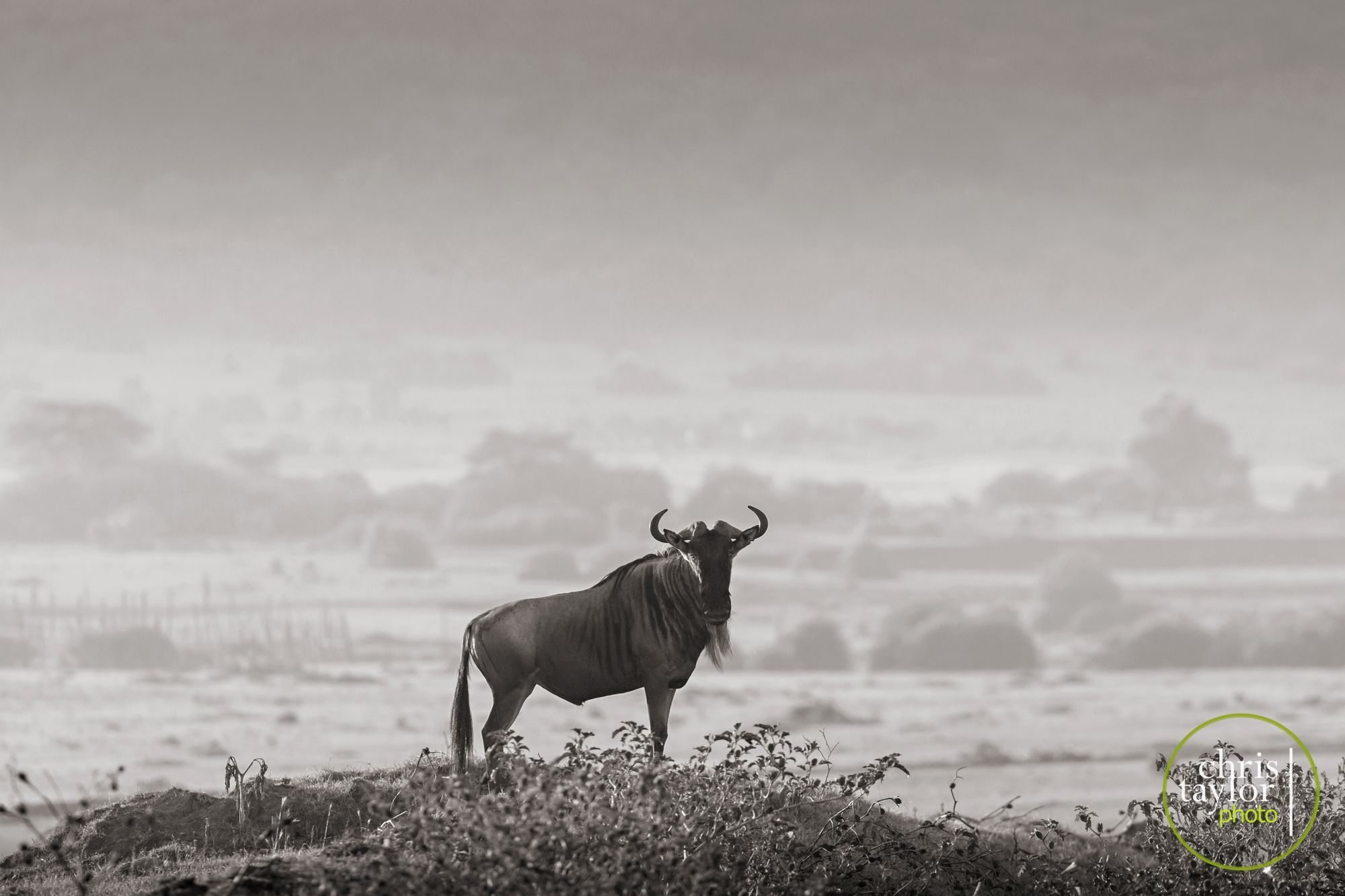 • THE LAST LINE OF DEFENCEI joined a Biosphere Expeditions project as a 'Citizen Scientist' to head out to a field station on the privately managed, 4000+ acre, Enonkishu Conservancy, to help with the development of a wildlife monitoring programme.The conservancy is on the northernmost boundary of the Mara-Serengeti Ecosystem with farmland and villages to the north - it is known as 'The Last Line of Defence' - the boundary between wildlife conservancies and farming.Kenya has lost 70% of its wildlife during the last 30 years due to farming pressures and climate change, conservancies such as Enonkishu are working hard to bring land back to the wild animals through carefully planned grazing programmes and farming methods designed to reduce tensions between the farmers/herdsmen and the wildlife. By monitoring the wildlife numbers and helping train the Enonkishu rangers, Biosphere Expeditions are making a positive contribution to the regeneration of this essential ecosystem - turning former farmland back into a home for native species.
• THE LAST LINE OF DEFENCEI joined a Biosphere Expeditions project as a 'Citizen Scientist' to head out to a field station on the privately managed, 4000+ acre, Enonkishu Conservancy, to help with the development of a wildlife monitoring programme.The conservancy is on the northernmost boundary of the Mara-Serengeti Ecosystem with farmland and villages to the north - it is known as 'The Last Line of Defence' - the boundary between wildlife conservancies and farming.Kenya has lost 70% of its wildlife during the last 30 years due to farming pressures and climate change, conservancies such as Enonkishu are working hard to bring land back to the wild animals through carefully planned grazing programmes and farming methods designed to reduce tensions between the farmers/herdsmen and the wildlife. By monitoring the wildlife numbers and helping train the Enonkishu rangers, Biosphere Expeditions are making a positive contribution to the regeneration of this essential ecosystem - turning former farmland back into a home for native species.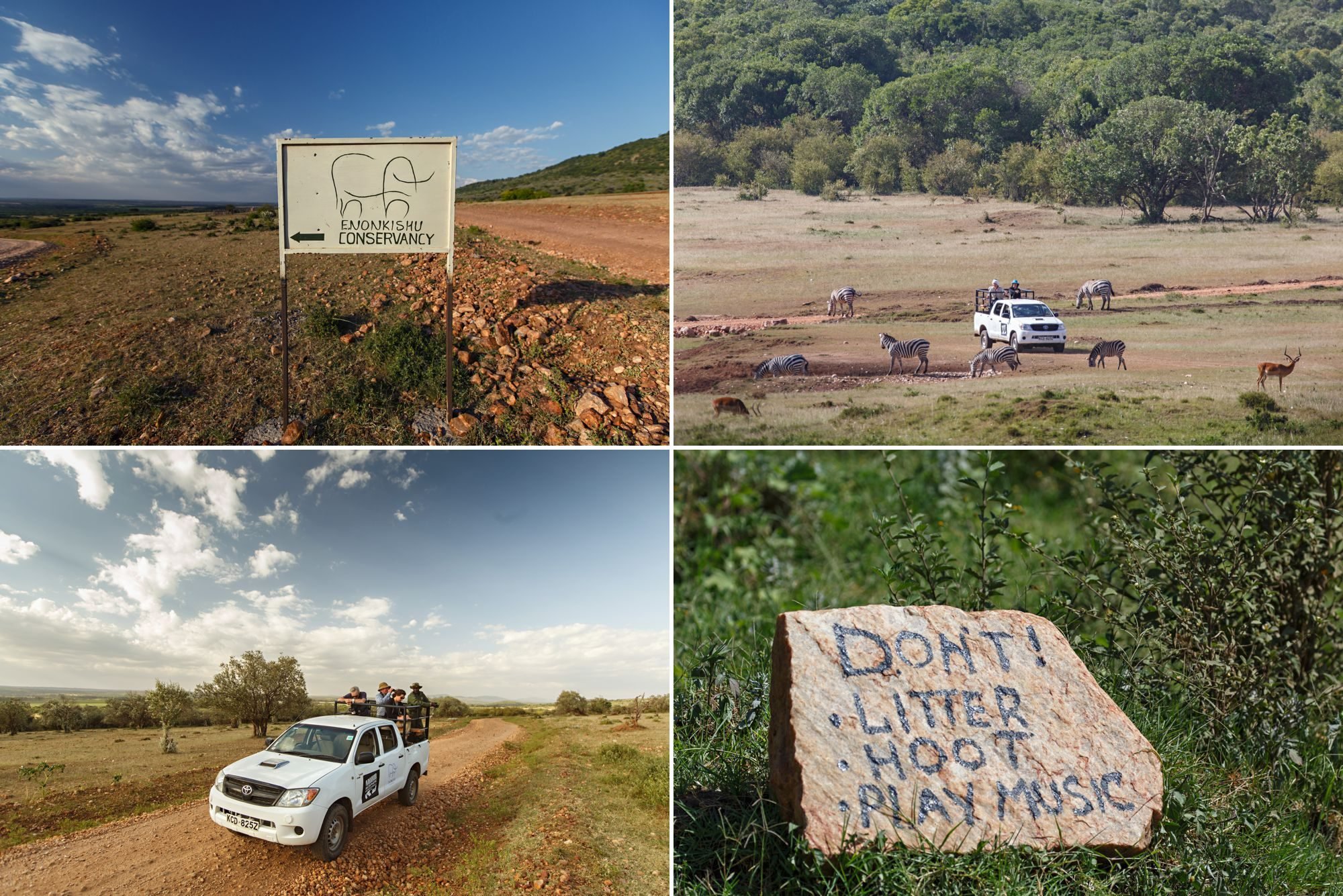
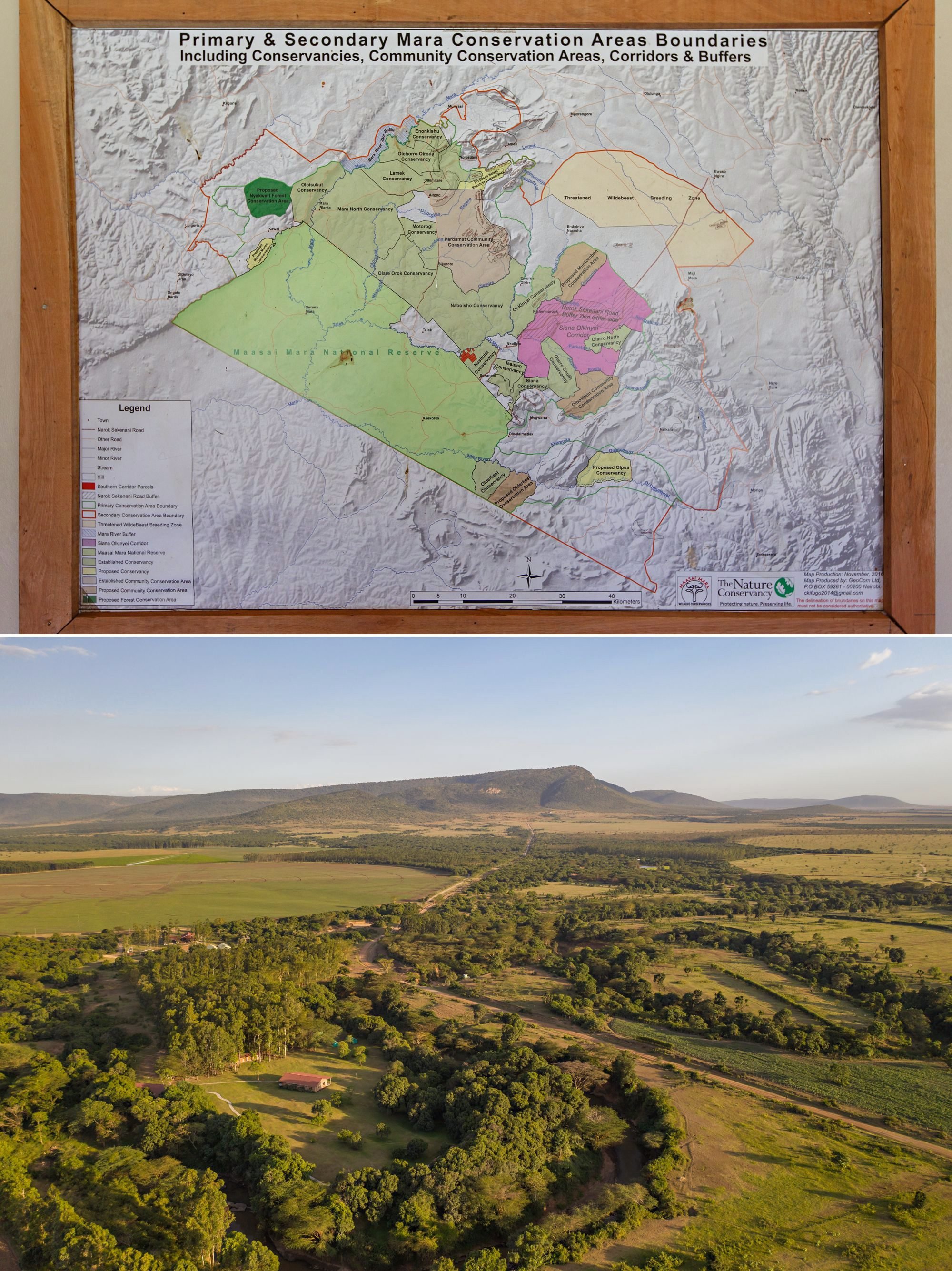 • RELEASED INTO THE WILDAfter a day or so of basic training on the techniques of animal identification, data recording, how to avoid animal attacks and off-road driving, we were released into the wild equipped with our binoculars, compass, ranger finder, GPS and one of four trusty Toyota Hilux 4x4 trucks. Biosphere Expeditions had commissioned a cage structure for the rear of each truck to house our data collectors, safely out of the way of the more potentially dangerous beasts (hippo, buffalo, elephant & lion) and slightly elevated for a better view of our subjects.The expedition leader, Malika Fettak, and resident Enonkishu scientist/manager, Rebekah Karimi, had fully briefed us on how to record what we saw - including species name, distance & bearing from us, our exact location (latitude & longtitude), numbers of each species and sex/age where possible.We were also tasked with collecting samples of animal scat to build up a 'Poo Library' - I soon learned how to identify hyaena poo (white) and giraffe poo (scattered over a wide area after its fall from a great height) amongst others.
• RELEASED INTO THE WILDAfter a day or so of basic training on the techniques of animal identification, data recording, how to avoid animal attacks and off-road driving, we were released into the wild equipped with our binoculars, compass, ranger finder, GPS and one of four trusty Toyota Hilux 4x4 trucks. Biosphere Expeditions had commissioned a cage structure for the rear of each truck to house our data collectors, safely out of the way of the more potentially dangerous beasts (hippo, buffalo, elephant & lion) and slightly elevated for a better view of our subjects.The expedition leader, Malika Fettak, and resident Enonkishu scientist/manager, Rebekah Karimi, had fully briefed us on how to record what we saw - including species name, distance & bearing from us, our exact location (latitude & longtitude), numbers of each species and sex/age where possible.We were also tasked with collecting samples of animal scat to build up a 'Poo Library' - I soon learned how to identify hyaena poo (white) and giraffe poo (scattered over a wide area after its fall from a great height) amongst others.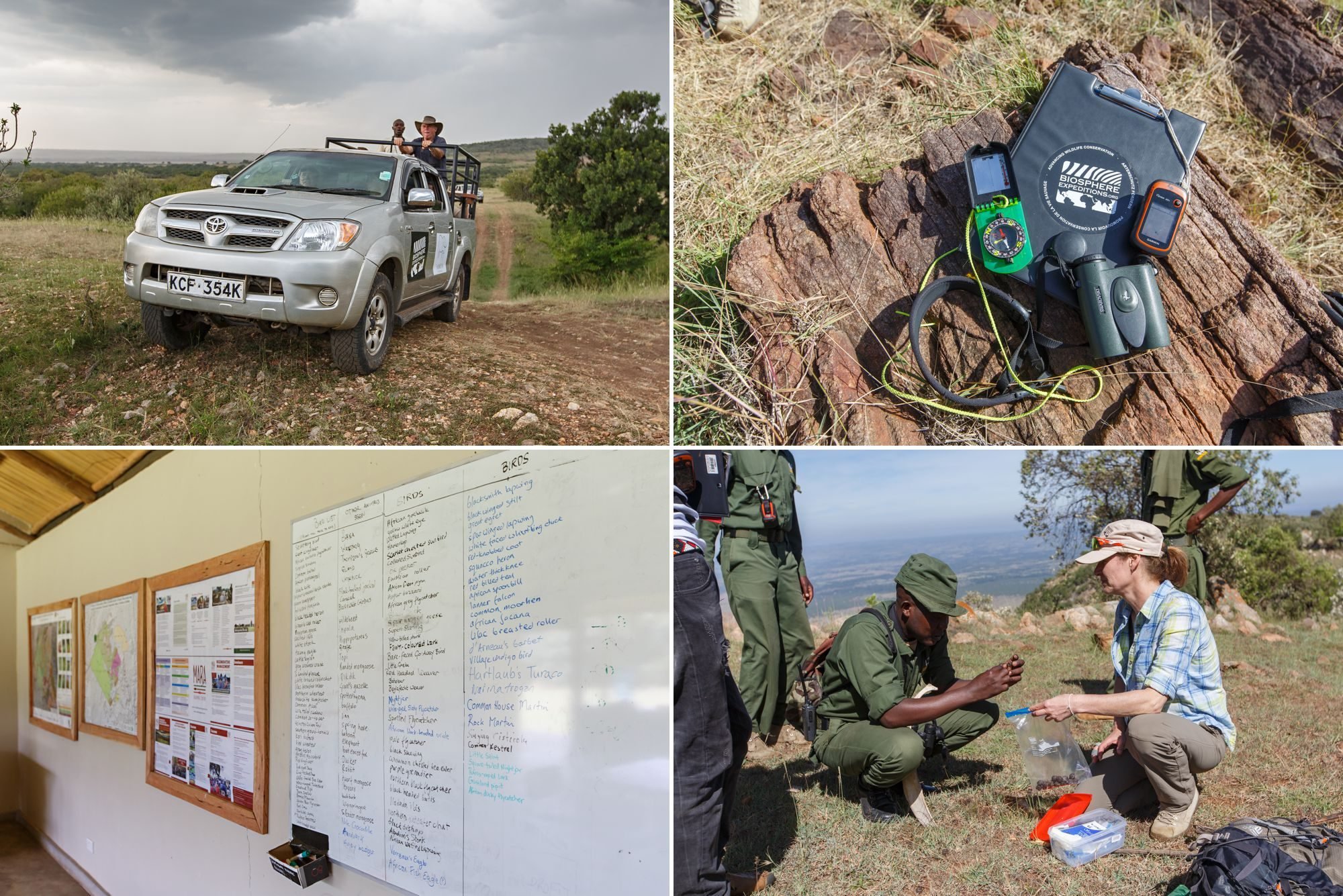 • MARA TRAINING CENTRE (MTC)Our base for the two weeks was the Mara Training Centre - framed on two sides by the Mara River and just on the edge of Enonkishu Conservancy. The centre comprises a large training room, a dining & social area called The Cow Shed, a number of 'bandas' - brick-build bedrooms with en suite bathrooms and six safari tents plus toilet & shower block. I was in tent number 5, overlooking the Mara river, plenty of space, electric lights and a really comfortable bed. Falling sleep to the chorus of crickets, frogs, spotted (aka laughing) hyaenas in the distance and the splashing of the hippos in the river below was simply magical.
• MARA TRAINING CENTRE (MTC)Our base for the two weeks was the Mara Training Centre - framed on two sides by the Mara River and just on the edge of Enonkishu Conservancy. The centre comprises a large training room, a dining & social area called The Cow Shed, a number of 'bandas' - brick-build bedrooms with en suite bathrooms and six safari tents plus toilet & shower block. I was in tent number 5, overlooking the Mara river, plenty of space, electric lights and a really comfortable bed. Falling sleep to the chorus of crickets, frogs, spotted (aka laughing) hyaenas in the distance and the splashing of the hippos in the river below was simply magical.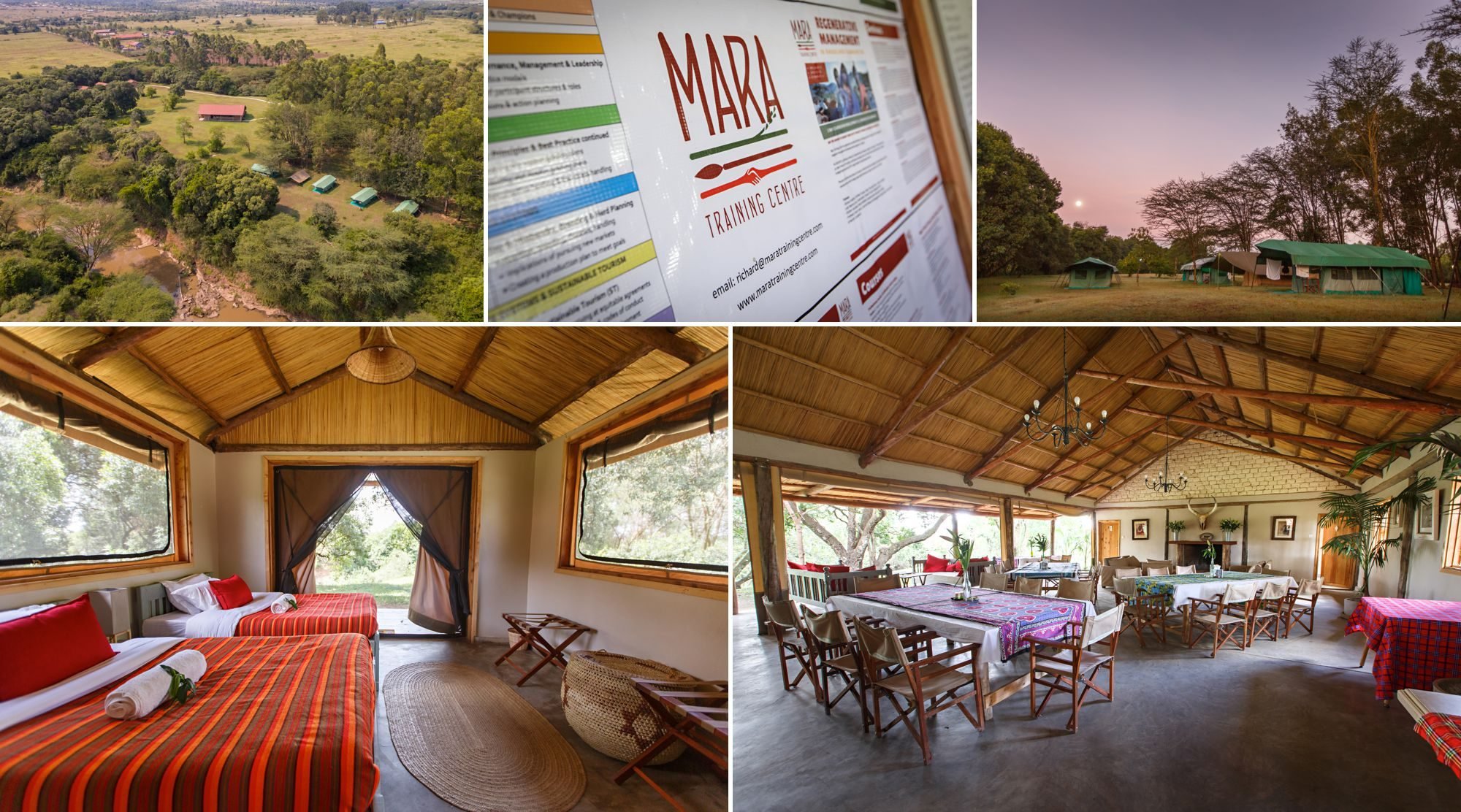 • AN EARLY STARTOur daily schedule involved breakfast from 6am, gather up the equipment needed, leave camp at 6:45am to head into the conservancy for a morning counting and observing the animals. The dawn light and mist bathing this incredible landscape each morning in a magical glow.Giraffes and warthogs stand and watch as we trundle past in our cage on wheels, the smells of ground dampened by the morning dew, the dawn chorus of birds broken by the squabbles of zebra and snorts of wildebeest echoing through the trees. Baboons nervously run across paths & dirt roads from their treetop dormitories, warily looking back at us as they make their escape.This feeling of anticipation of what we will see and the promises of the day ahead will never leave me.
• AN EARLY STARTOur daily schedule involved breakfast from 6am, gather up the equipment needed, leave camp at 6:45am to head into the conservancy for a morning counting and observing the animals. The dawn light and mist bathing this incredible landscape each morning in a magical glow.Giraffes and warthogs stand and watch as we trundle past in our cage on wheels, the smells of ground dampened by the morning dew, the dawn chorus of birds broken by the squabbles of zebra and snorts of wildebeest echoing through the trees. Baboons nervously run across paths & dirt roads from their treetop dormitories, warily looking back at us as they make their escape.This feeling of anticipation of what we will see and the promises of the day ahead will never leave me.
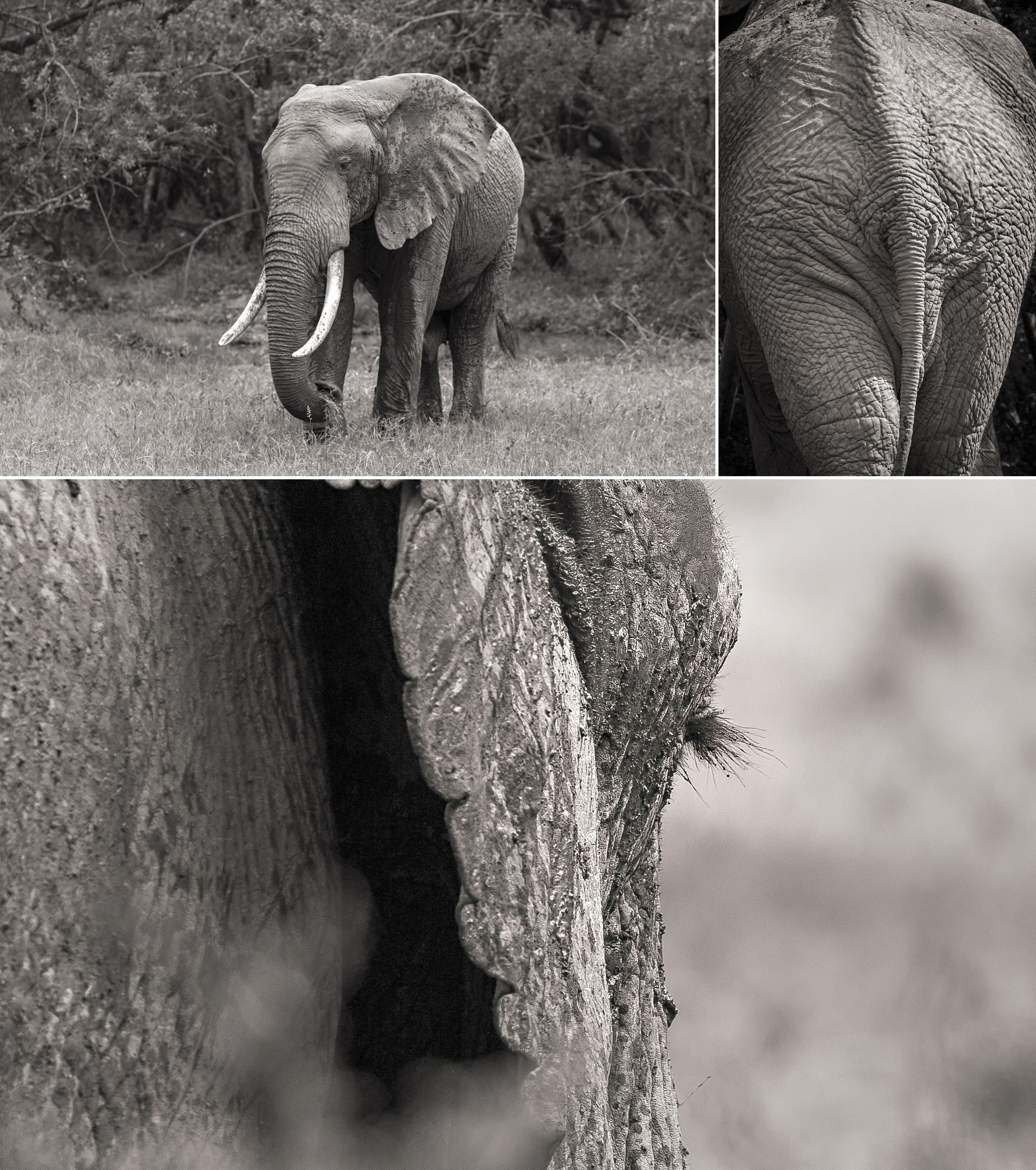 • WARRIORS WITH PASSIONThe Enonkishu Rangers, lead by Head Ranger, Dapash, are a truly inspiring bunch, passionate about protecting the animals on their patch of land. Armed only with their knowledge and wits they conduct daily foot patrols to ensure the herdsmen are grazing their cattle where they should and checking no poachers are on the land.I was lucky enough to do one of the walking transects with them and on another day conduct the Hilltop Observation which involved a steep scramble to the top of Kileoni hill, (1700m and the highest point in the Mara), which partially surrounds the conservancy. It's amazing how the threat of potentially finding a huge charging bull buffalo behind any bush makes you forget the burn in your legs!The ranger's knowledge of tracking the animals and understanding their behaviour is nothing short of astounding. On one walk we came across fresh elephant dung and Dapash soon deduced from the footprints and trail of freshly broken branches that we were on a potential collision course with these huge beasts - not something you want to do on foot if you plan to see another day.We took a sharp detour up the hill to try to get a better idea of where the elephants were lurking - almost as soon as we had gained some altitude the rangers spotted the slightest movement in some branches below and we discovered the elephants were just 400m from us. Minutes later they were 200m from us.How something so large can move so quickly and so silently was an eye-opener.The rangers remained calm and we waited to determine what the elephants would do next. While you could say it felt a little tense (OK, it was very tense!) at no time did I really fear for our safety while in the company of the rangers.They understand and respect the behaviour of the animals under their care, we could all learn a lot (and did learn a lot) from these guys.
• WARRIORS WITH PASSIONThe Enonkishu Rangers, lead by Head Ranger, Dapash, are a truly inspiring bunch, passionate about protecting the animals on their patch of land. Armed only with their knowledge and wits they conduct daily foot patrols to ensure the herdsmen are grazing their cattle where they should and checking no poachers are on the land.I was lucky enough to do one of the walking transects with them and on another day conduct the Hilltop Observation which involved a steep scramble to the top of Kileoni hill, (1700m and the highest point in the Mara), which partially surrounds the conservancy. It's amazing how the threat of potentially finding a huge charging bull buffalo behind any bush makes you forget the burn in your legs!The ranger's knowledge of tracking the animals and understanding their behaviour is nothing short of astounding. On one walk we came across fresh elephant dung and Dapash soon deduced from the footprints and trail of freshly broken branches that we were on a potential collision course with these huge beasts - not something you want to do on foot if you plan to see another day.We took a sharp detour up the hill to try to get a better idea of where the elephants were lurking - almost as soon as we had gained some altitude the rangers spotted the slightest movement in some branches below and we discovered the elephants were just 400m from us. Minutes later they were 200m from us.How something so large can move so quickly and so silently was an eye-opener.The rangers remained calm and we waited to determine what the elephants would do next. While you could say it felt a little tense (OK, it was very tense!) at no time did I really fear for our safety while in the company of the rangers.They understand and respect the behaviour of the animals under their care, we could all learn a lot (and did learn a lot) from these guys.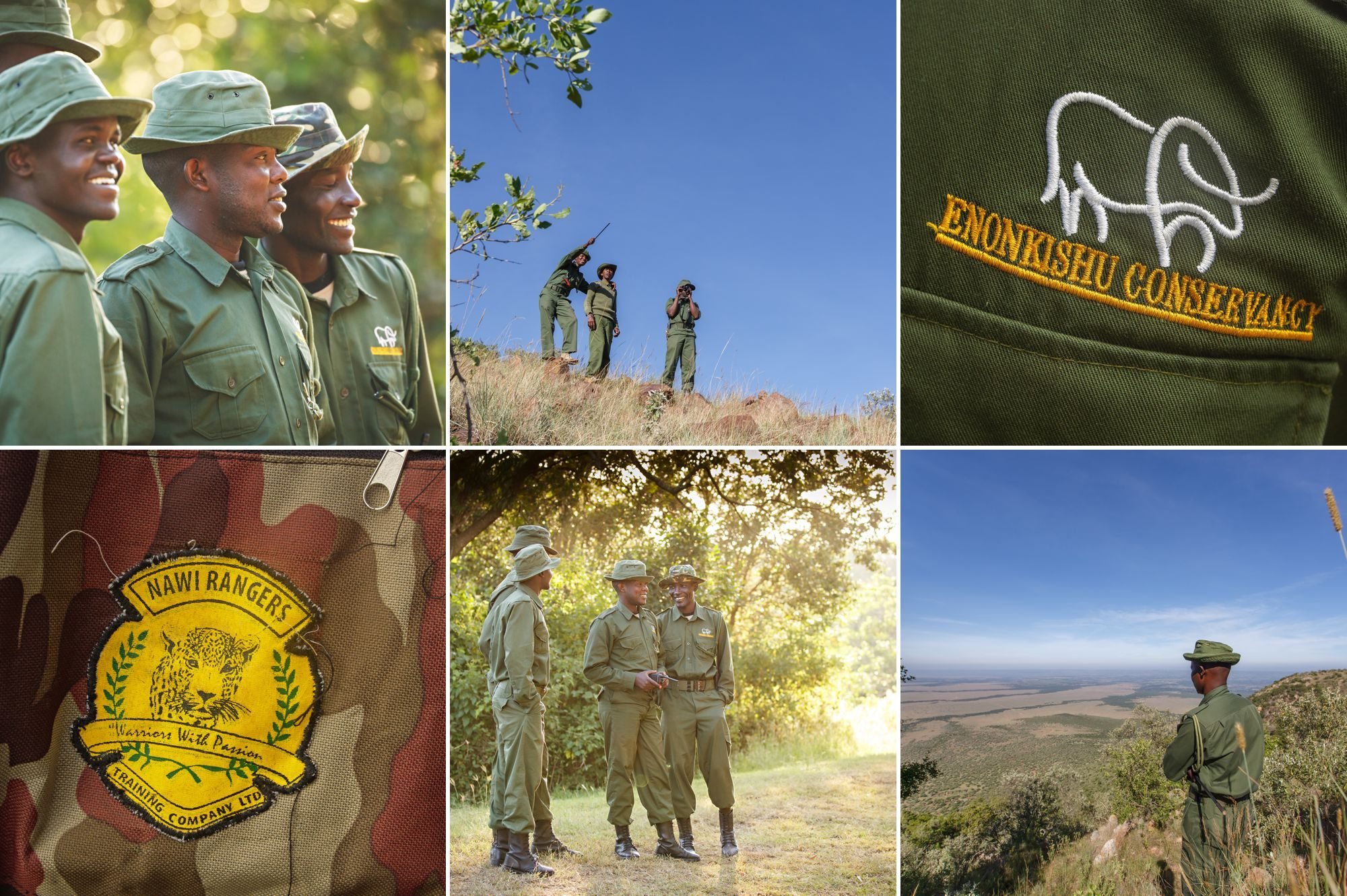
 • PHOTOGRAPHER'S DREAMAs a photographer I was totally in my element at Enonkishu. The rich variety of animals, the landscape, the light - it was a dream come true. After a few days of driving around I realised that we had come to accept a tower of giraffes walking past us as the norm. Not that I ever became complacent or stopped appreciating what an incredible situation I was in but it's funny how the incredible can become the everyday after only a short time.
• PHOTOGRAPHER'S DREAMAs a photographer I was totally in my element at Enonkishu. The rich variety of animals, the landscape, the light - it was a dream come true. After a few days of driving around I realised that we had come to accept a tower of giraffes walking past us as the norm. Not that I ever became complacent or stopped appreciating what an incredible situation I was in but it's funny how the incredible can become the everyday after only a short time.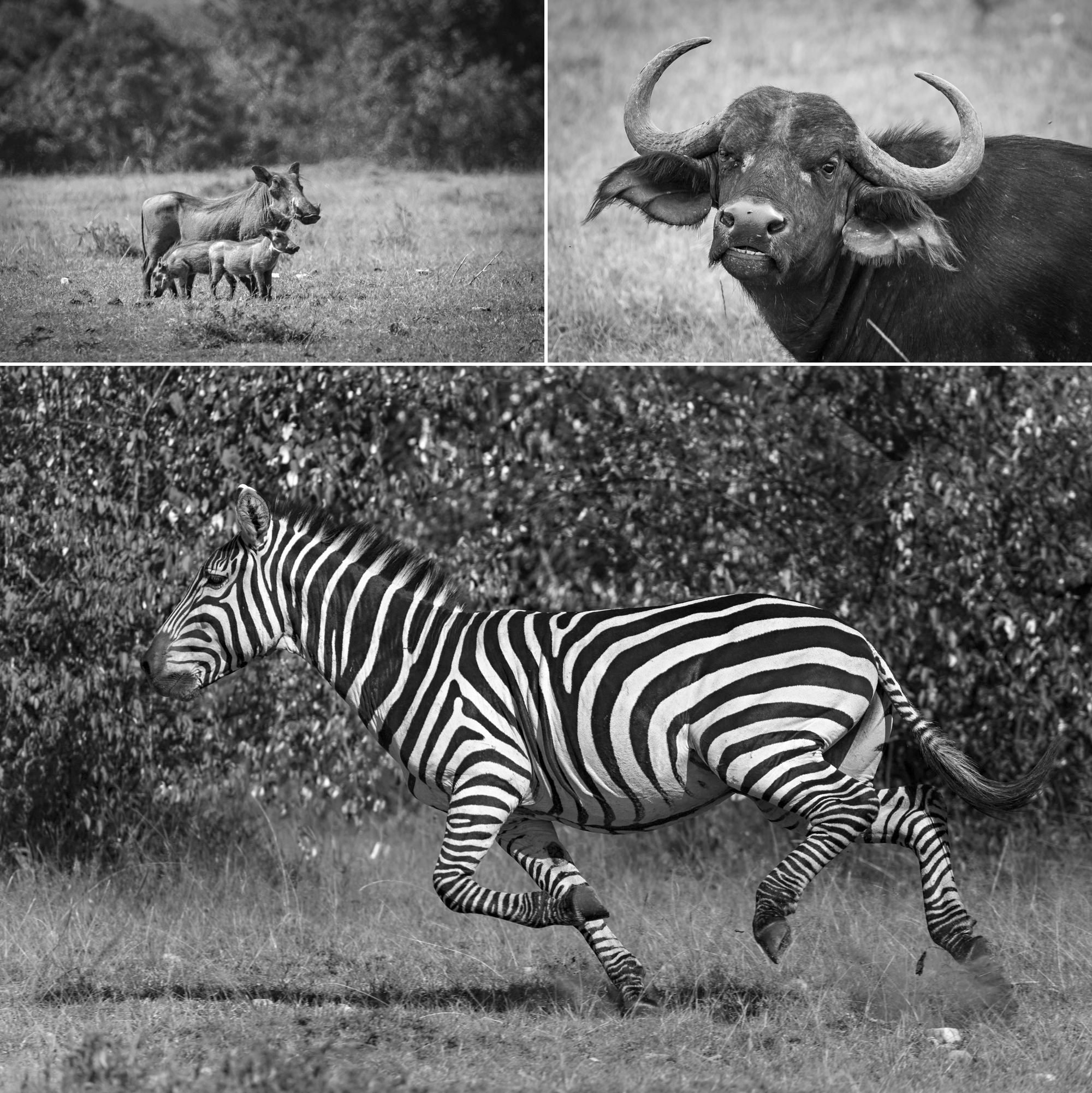
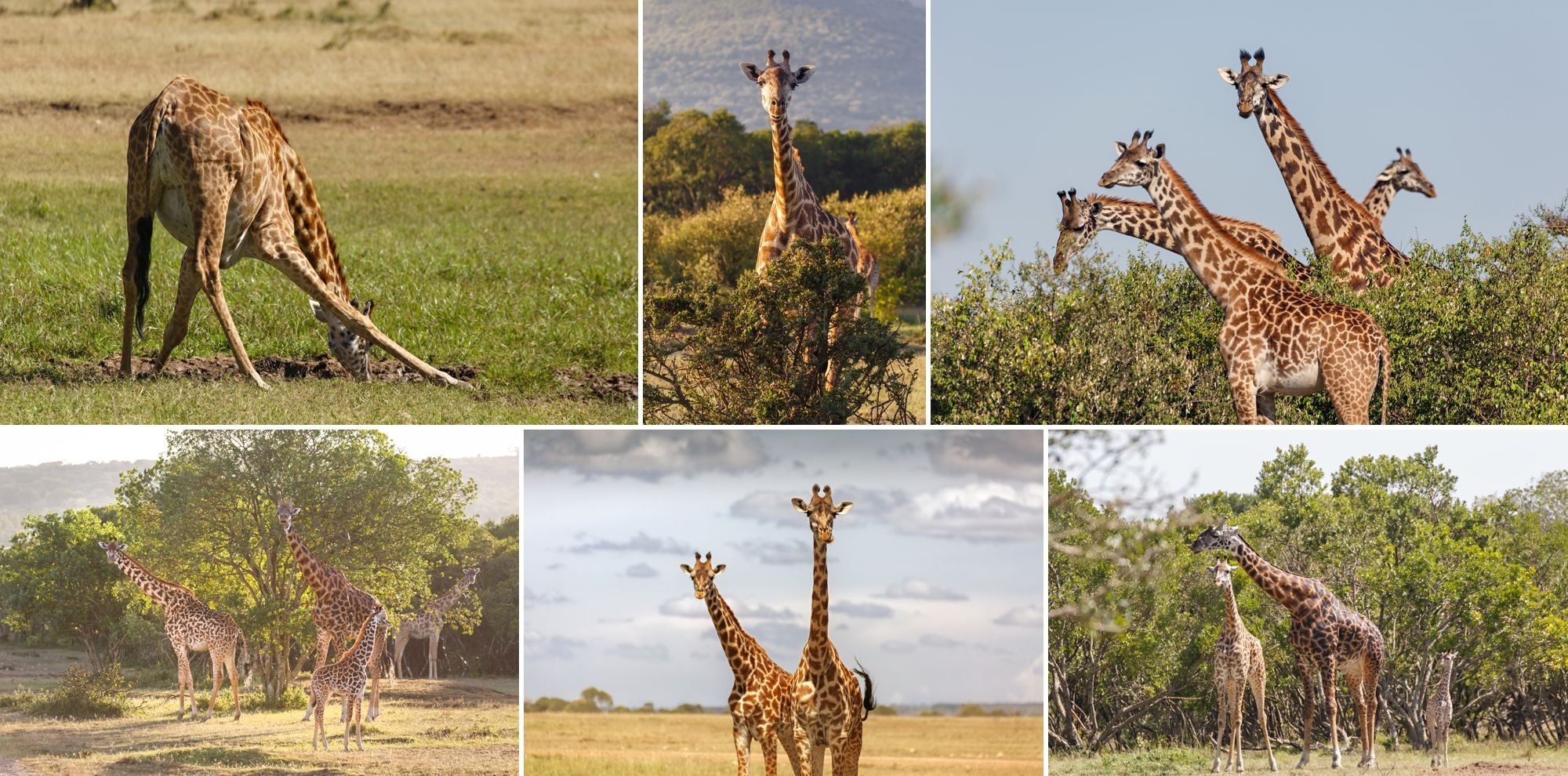

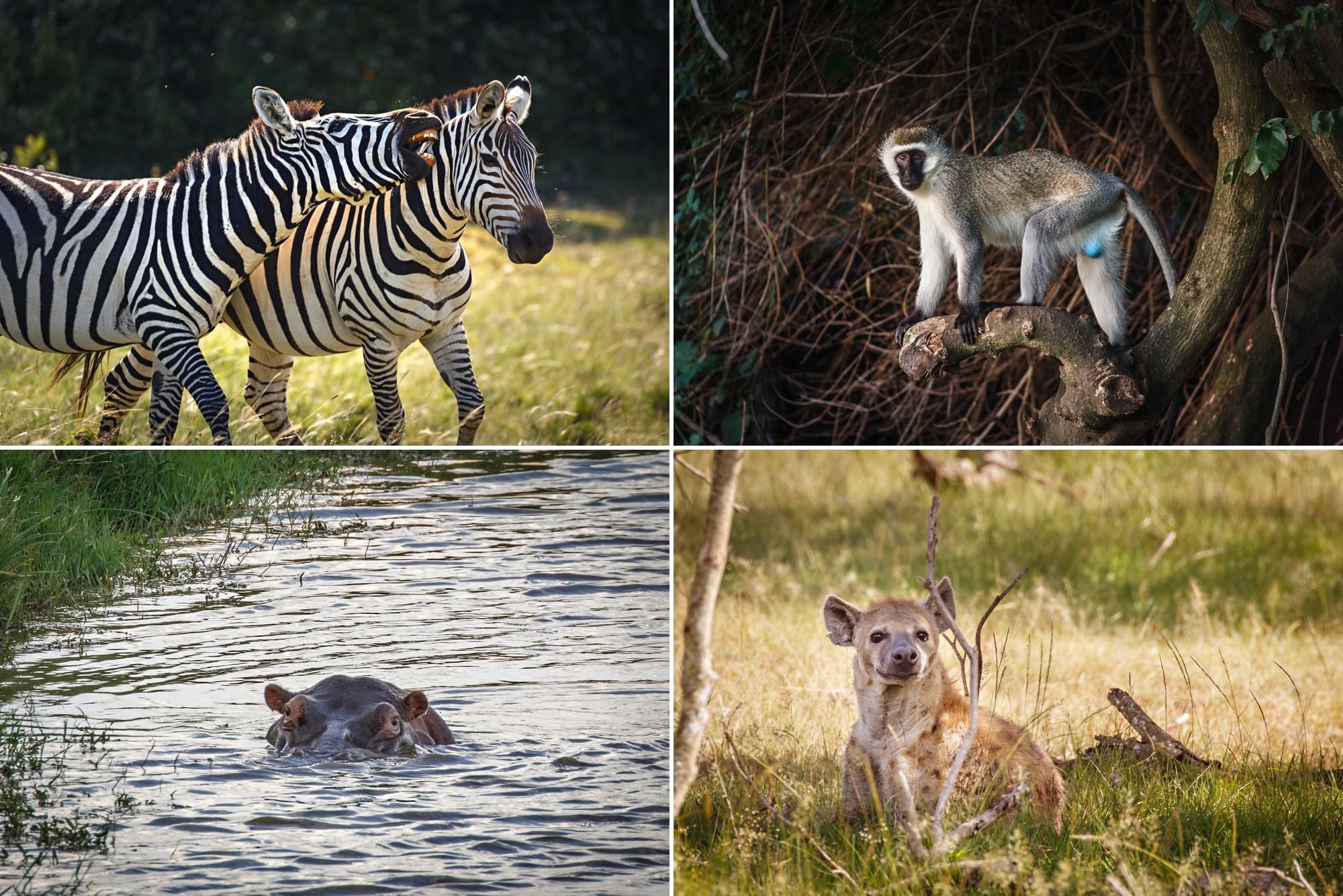 • A HUGE PRIVILEGEOne of our fellow Citizen Scientists, Peter, an ex-pat Brit now living in Canada summed the experience up - in a chat one evening he described what a 'huge privilege' it was to be able to do what we were doing at Enonkishu. (Peter has a birdwatching blog which I have enjoyed reading - www.mybirdoftheday.ca)To spend so much time in the company of the animals, to learn from the rangers, to be able to drive ourselves through the plains & shrubland, not crammed in a safari truck like the tourists in the local 5 star resort, all of it was such a privilege. This was an African experience like no other and I thank Biosphere Expeditions for making it possible.We got to spend serious amounts of time, day and night, in amongst the wildlife, observing the behaviour, taking in the glory of this incredible habitat. Some of the highlights for me were the night drives - I was lucky enough to go on four of them - armed with red and green torches to minimise the disruption to the animal's night vision. We would head out into the conservancy in the back of the trucks and see what we could find. For safety we always had to have a ranger with us on these exciting excursions and were forbidden from leaving the safety of the vehicles but up in the cage or in the car with the windows all open we could really immerse ourselves in the sounds, smells and sights (in trippy red or green) of the Maasai Mara at night.I will never forget seeing my first hippo running silently across the plain at night, eyes blazing in the torchlight, about 20ft from the vehicle, looking for all the world like someone caught getting out of the shower and running in embarrassment for a towel! Other highlights included finding a herd of elephant feeding in the woods and stumbling across a huge hyaena den with over 20 hyaenas engaging in various social (and very vocal!) behaviours - including the mother suckling her pup below....
• A HUGE PRIVILEGEOne of our fellow Citizen Scientists, Peter, an ex-pat Brit now living in Canada summed the experience up - in a chat one evening he described what a 'huge privilege' it was to be able to do what we were doing at Enonkishu. (Peter has a birdwatching blog which I have enjoyed reading - www.mybirdoftheday.ca)To spend so much time in the company of the animals, to learn from the rangers, to be able to drive ourselves through the plains & shrubland, not crammed in a safari truck like the tourists in the local 5 star resort, all of it was such a privilege. This was an African experience like no other and I thank Biosphere Expeditions for making it possible.We got to spend serious amounts of time, day and night, in amongst the wildlife, observing the behaviour, taking in the glory of this incredible habitat. Some of the highlights for me were the night drives - I was lucky enough to go on four of them - armed with red and green torches to minimise the disruption to the animal's night vision. We would head out into the conservancy in the back of the trucks and see what we could find. For safety we always had to have a ranger with us on these exciting excursions and were forbidden from leaving the safety of the vehicles but up in the cage or in the car with the windows all open we could really immerse ourselves in the sounds, smells and sights (in trippy red or green) of the Maasai Mara at night.I will never forget seeing my first hippo running silently across the plain at night, eyes blazing in the torchlight, about 20ft from the vehicle, looking for all the world like someone caught getting out of the shower and running in embarrassment for a towel! Other highlights included finding a herd of elephant feeding in the woods and stumbling across a huge hyaena den with over 20 hyaenas engaging in various social (and very vocal!) behaviours - including the mother suckling her pup below.... • DAY OFFOn the first Friday of the two weeks we had a day off from monitoring wildlife on the conservancy and got to choose from a number of different activities - visiting the local village, a trip to the local rhino sanctuary, a 2hr drive to the Maasai Mara National Reserve or a 15 minute drive to the neighbouring conservancies of Lemek and Olchorro. Having seen Peter's superb photos from his trip to the neighbouring conservancies on the trip two weeks previous I opted for that. (Peter actually did the first of the two Biosphere two week Kenya expeditions and opted to stay on for the second (that I was on), as did another of our companions Rebecca - a definite validation of how great the experience was).We met our drivers - Wilson & Wilson at our expedition base and got into our safari vehicles. After a short drive we were in new territory and since we didn't need to spend time recording and counting the wildlife we were able to stop and photograph the animals as much as we liked. What luxury!With Wilson's incredible eyesight we soon came across our first pride of lions. They had fed fairly recently so were just lying around in the shade of some bushes not doing a huge amount but that didn't lessen the thrill of seeing our first wild lions - and this was up close and personal!I was actually amazed how close the trucks could get to the sleeping lions (within 10ft) and the lions didn't seem bothered in the slightest. The sides of the vehicles were wide open, the lions could have had the easiest meal of their lives but they showed no interest (thankfully). We were told, however, that if we were to step one foot outside of the vehicles the situation would change very rapidly and we may not come off too well!
• DAY OFFOn the first Friday of the two weeks we had a day off from monitoring wildlife on the conservancy and got to choose from a number of different activities - visiting the local village, a trip to the local rhino sanctuary, a 2hr drive to the Maasai Mara National Reserve or a 15 minute drive to the neighbouring conservancies of Lemek and Olchorro. Having seen Peter's superb photos from his trip to the neighbouring conservancies on the trip two weeks previous I opted for that. (Peter actually did the first of the two Biosphere two week Kenya expeditions and opted to stay on for the second (that I was on), as did another of our companions Rebecca - a definite validation of how great the experience was).We met our drivers - Wilson & Wilson at our expedition base and got into our safari vehicles. After a short drive we were in new territory and since we didn't need to spend time recording and counting the wildlife we were able to stop and photograph the animals as much as we liked. What luxury!With Wilson's incredible eyesight we soon came across our first pride of lions. They had fed fairly recently so were just lying around in the shade of some bushes not doing a huge amount but that didn't lessen the thrill of seeing our first wild lions - and this was up close and personal!I was actually amazed how close the trucks could get to the sleeping lions (within 10ft) and the lions didn't seem bothered in the slightest. The sides of the vehicles were wide open, the lions could have had the easiest meal of their lives but they showed no interest (thankfully). We were told, however, that if we were to step one foot outside of the vehicles the situation would change very rapidly and we may not come off too well!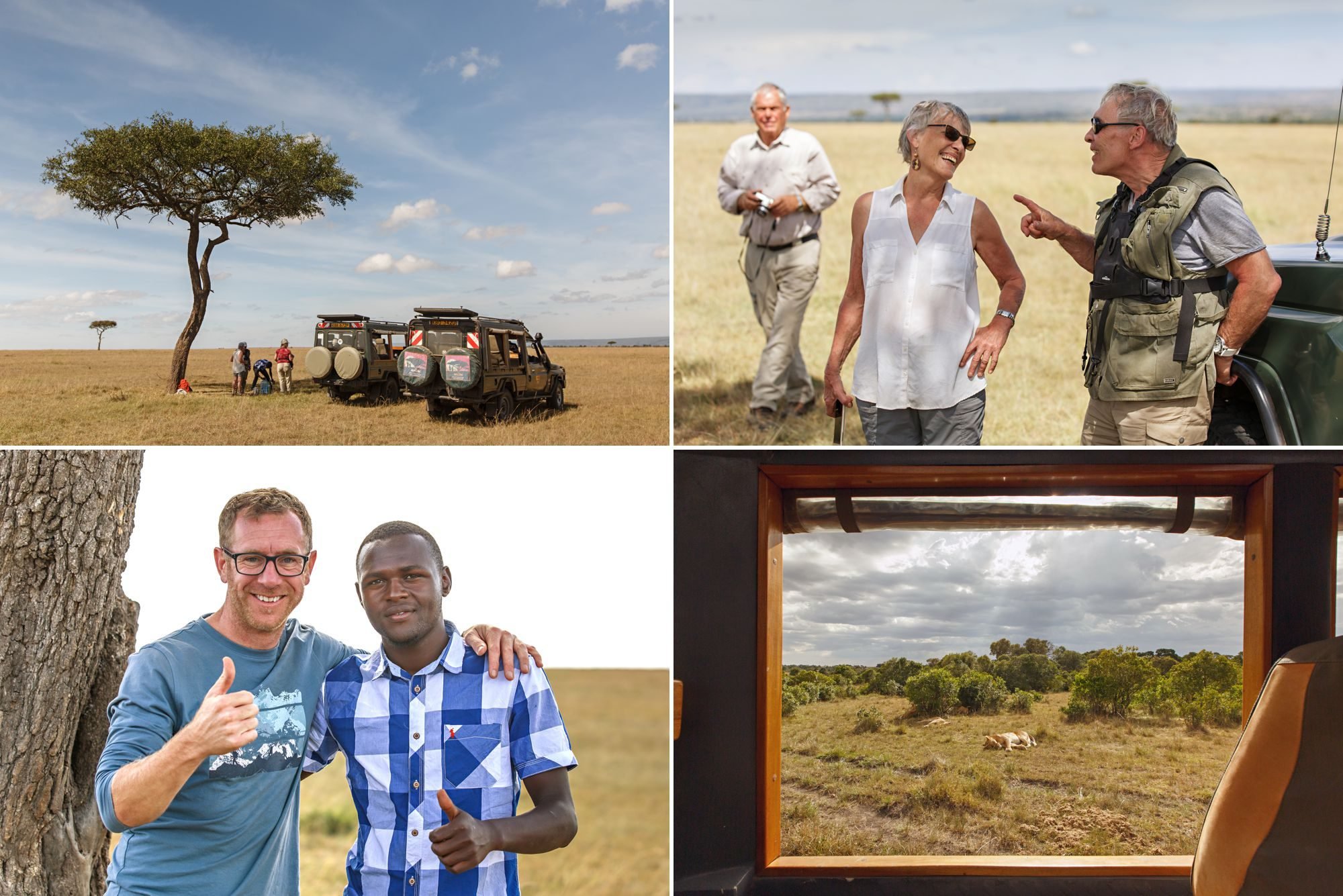
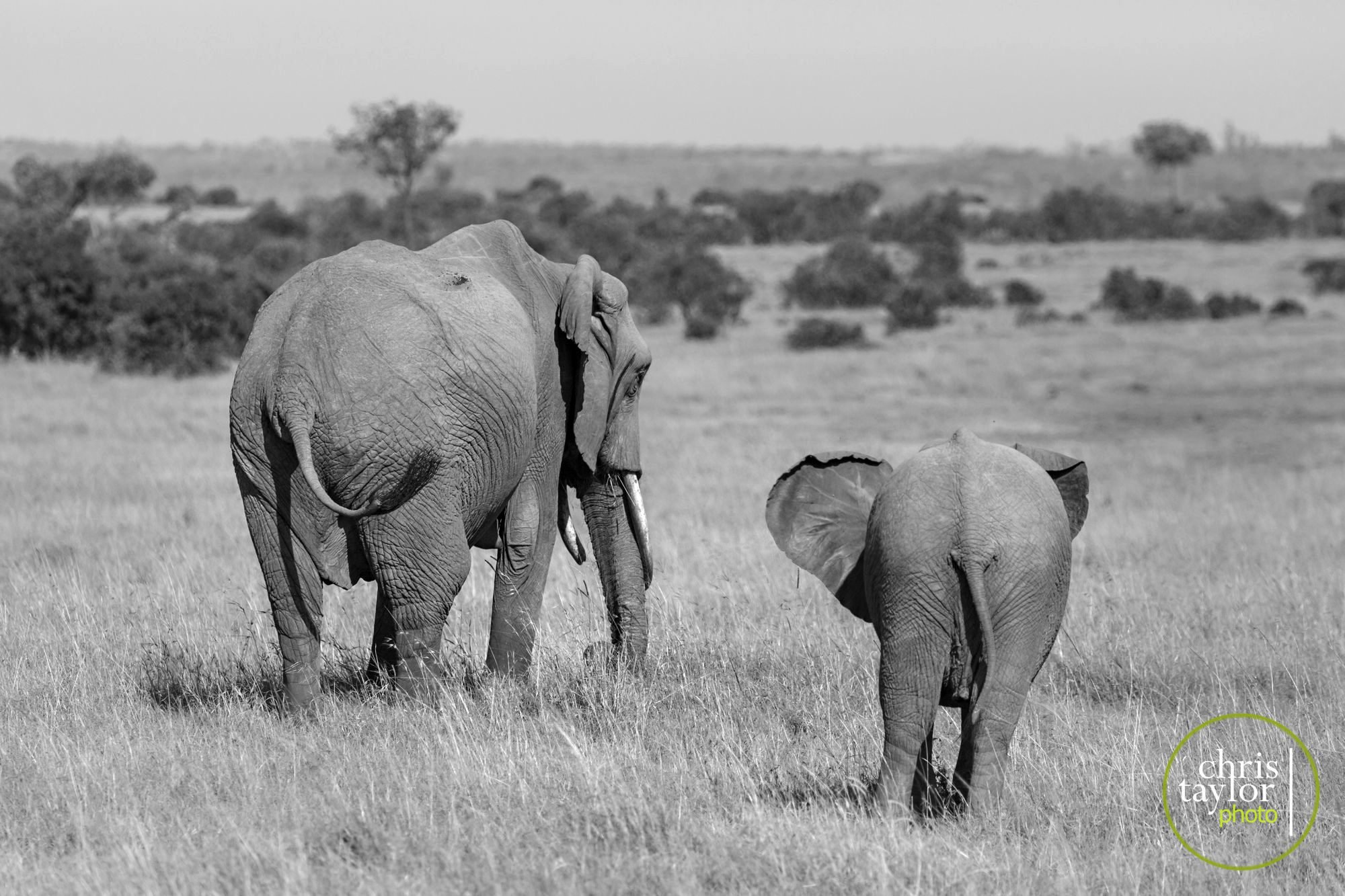
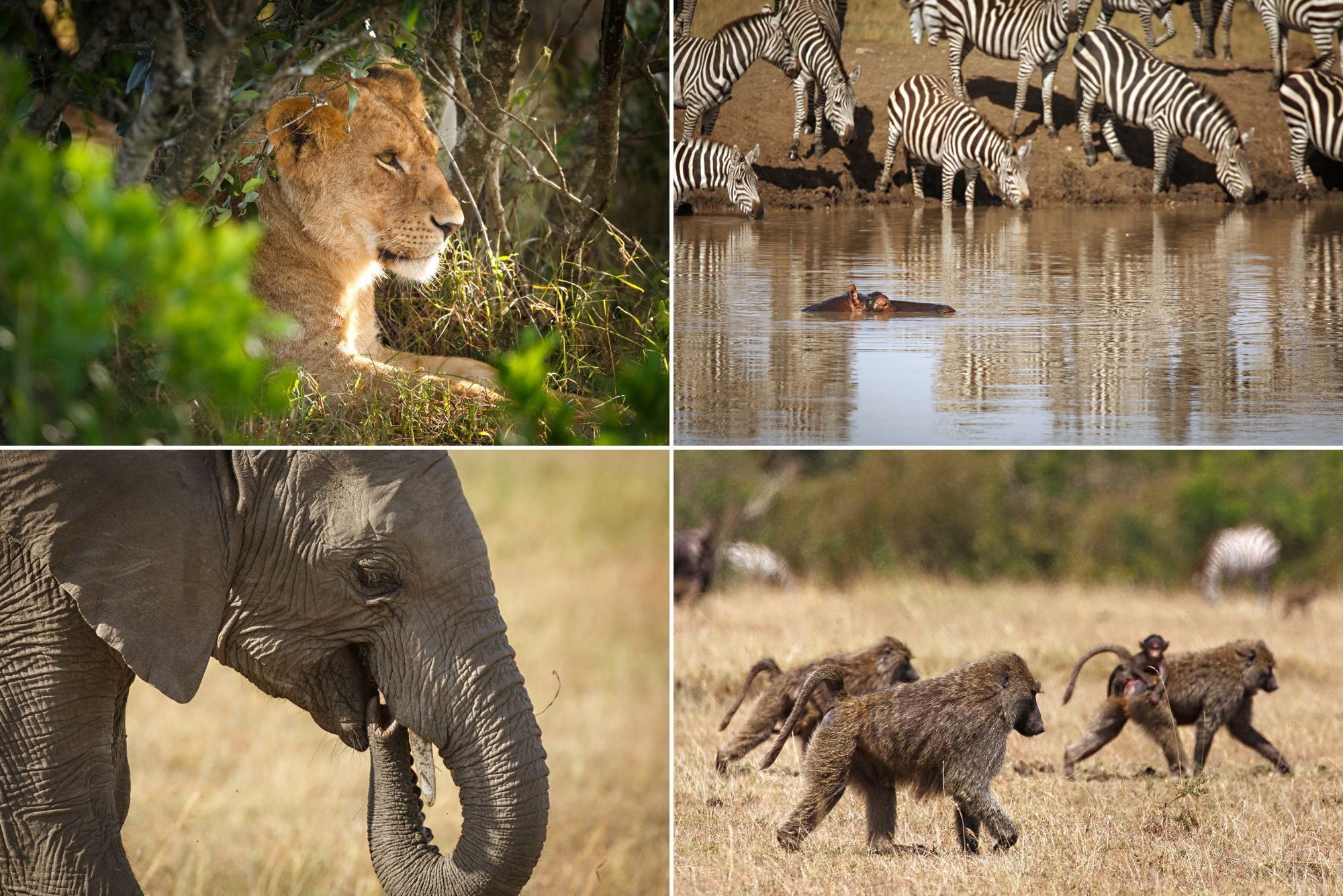
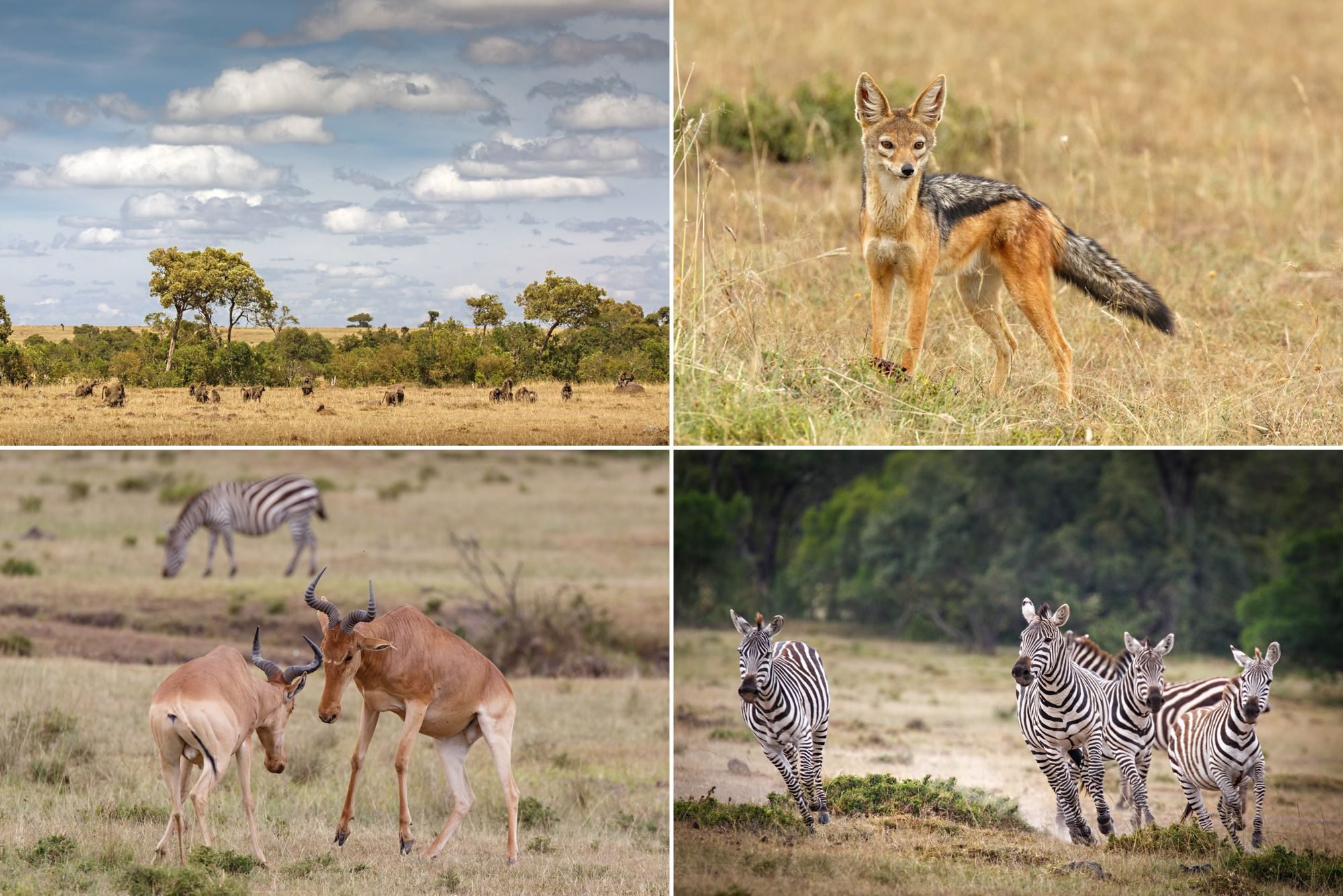 • MAASAI WARRIORSAfter a great morning seeing the wildlife, we stopped off at a local Maasai Moran (warrior) village and were greeted with a welcome song & much dancing, look at the colours of those costumes & jewellery! They then proceeded to show us how to use a bow drill to create fire and I was invited to have a try. I managed (with some assistance) to get enough embers to scrape into a handful of dried elephant dung which were then blown & coaxed until it burst in to flame. I spent the rest of the day coated in the smell of burning elephant poo but I loved it! I bought the fire drill from the tribesmen and gave it to my son Will when I returned home. We have since been trying to make fire here with not so much success. Must work on our technique. We could also do with some dried elephant dung if anyone has any spare?!
• MAASAI WARRIORSAfter a great morning seeing the wildlife, we stopped off at a local Maasai Moran (warrior) village and were greeted with a welcome song & much dancing, look at the colours of those costumes & jewellery! They then proceeded to show us how to use a bow drill to create fire and I was invited to have a try. I managed (with some assistance) to get enough embers to scrape into a handful of dried elephant dung which were then blown & coaxed until it burst in to flame. I spent the rest of the day coated in the smell of burning elephant poo but I loved it! I bought the fire drill from the tribesmen and gave it to my son Will when I returned home. We have since been trying to make fire here with not so much success. Must work on our technique. We could also do with some dried elephant dung if anyone has any spare?!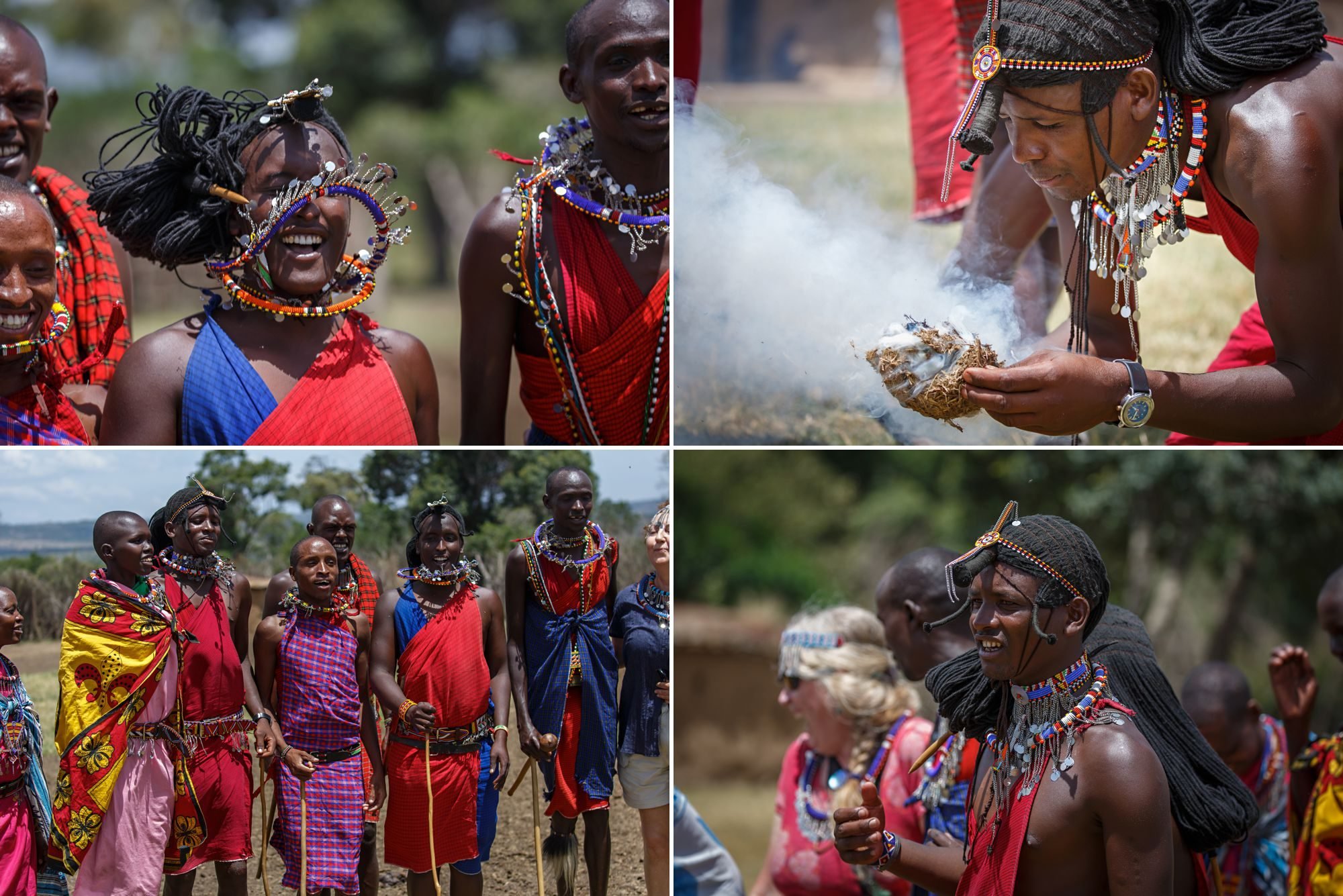
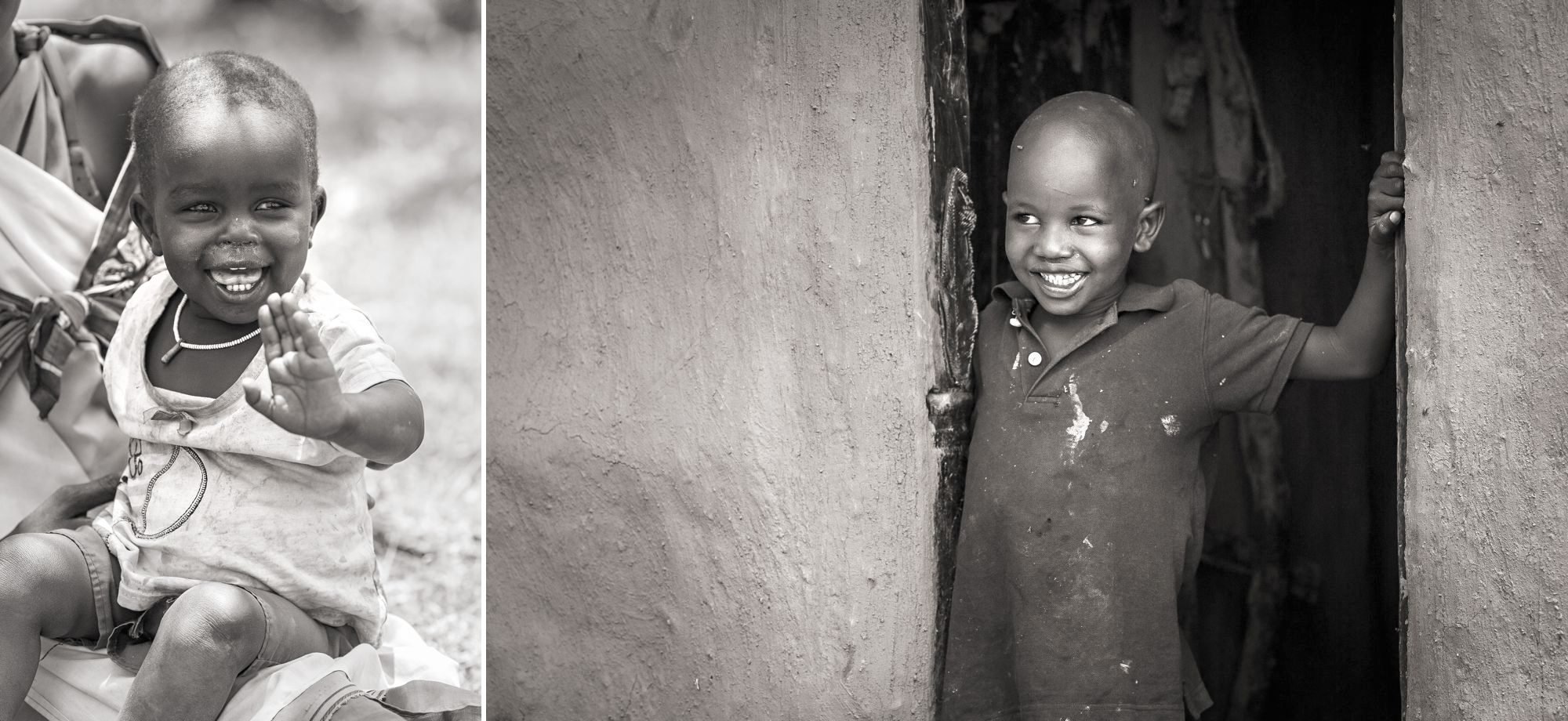
 After the village, we headed off for a picnic lunch to a spot overlooking the Mara River with approx 50-60 hippos, an incredible sight...
After the village, we headed off for a picnic lunch to a spot overlooking the Mara River with approx 50-60 hippos, an incredible sight...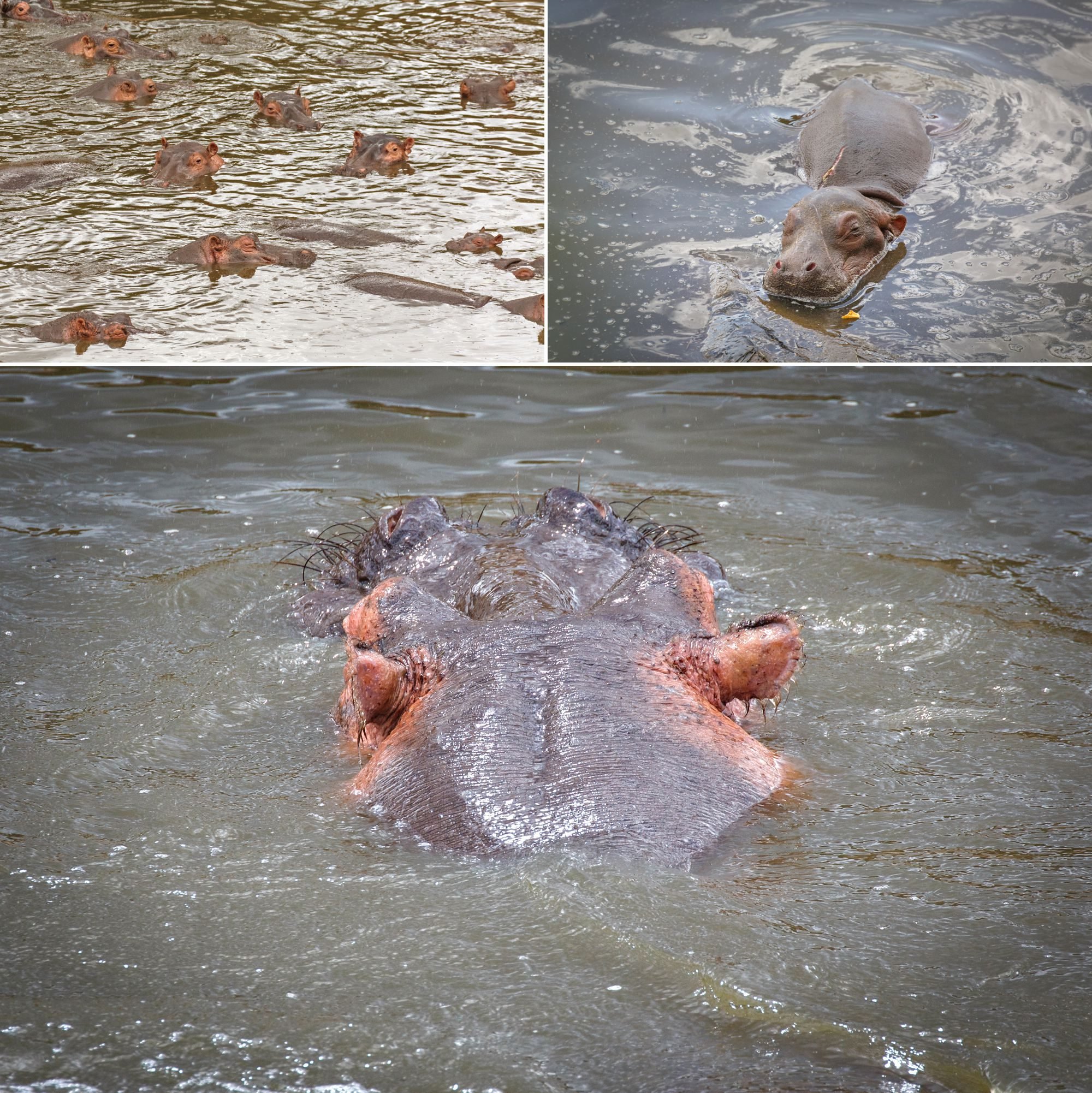
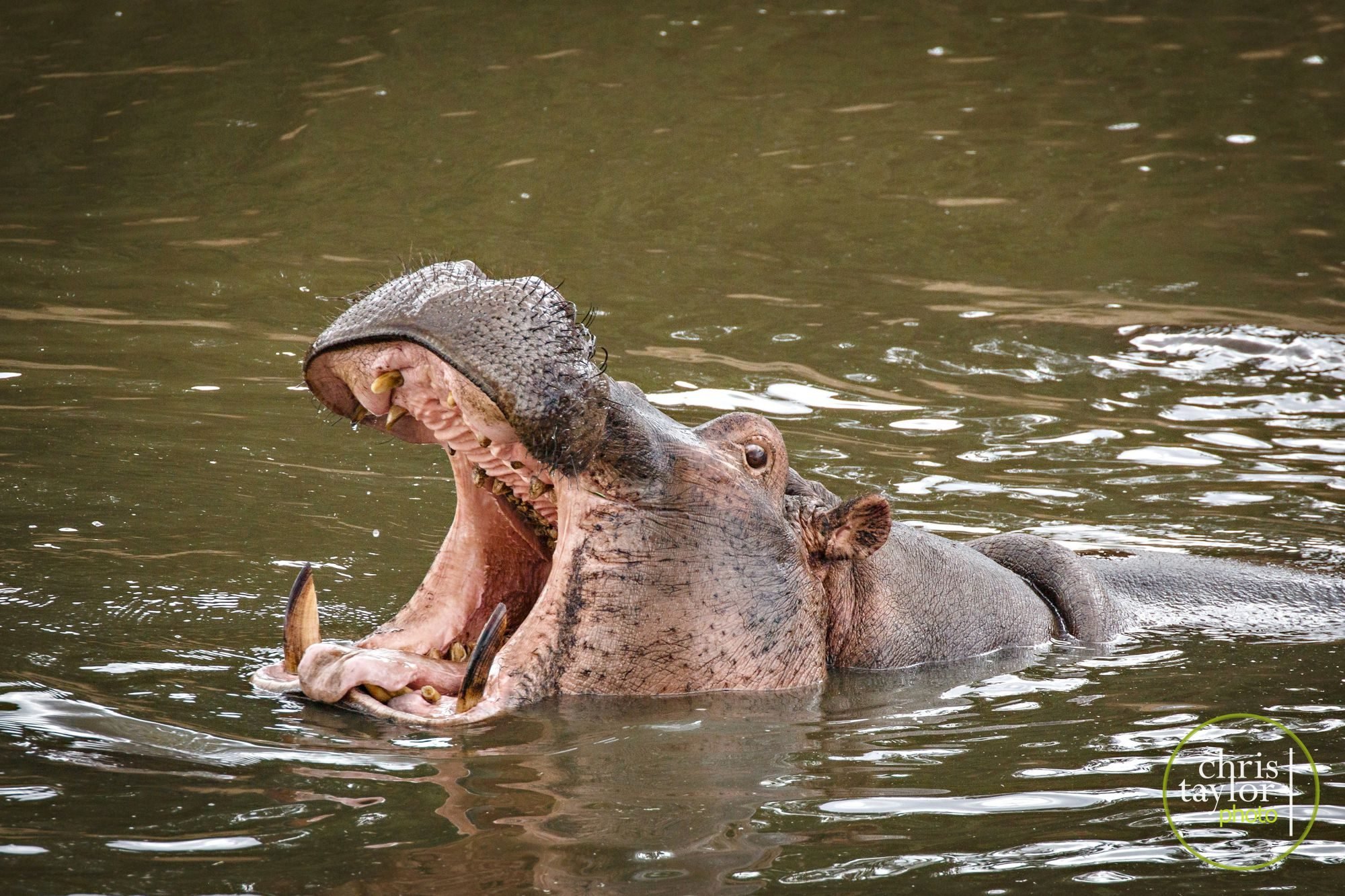 Lunch finished, it was back to looking for the wildlife and we were lucky enough to find two more prides of lions, again still lazing around, taking it easy. But the third group we found were something I could only have dreamed of....
Lunch finished, it was back to looking for the wildlife and we were lucky enough to find two more prides of lions, again still lazing around, taking it easy. But the third group we found were something I could only have dreamed of....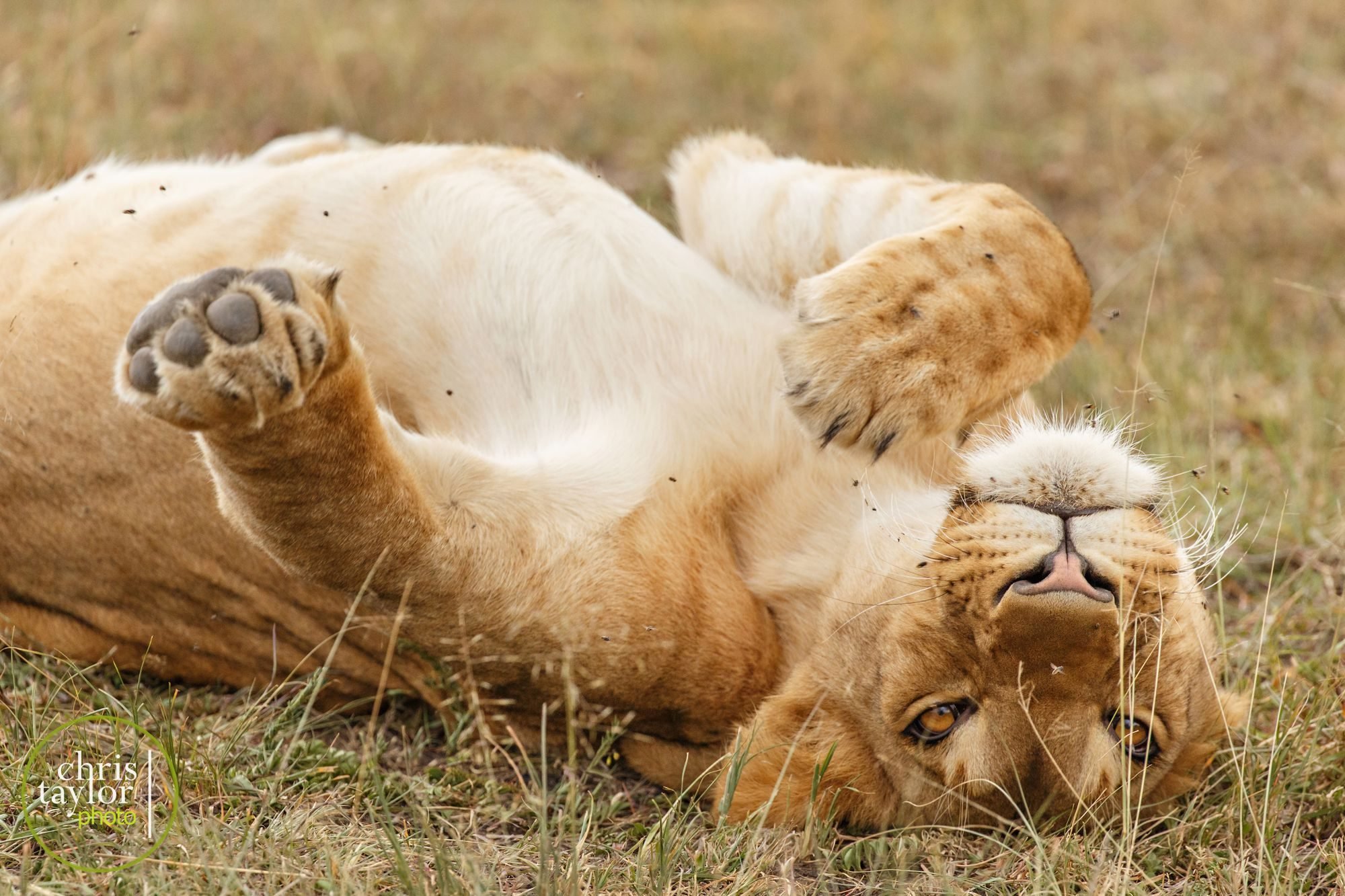
 • THE LION KING...two female lions (sisters) with three little lion cubs! Wilson estimated they were approximately one month old. We were all beside ourselves with excitement at finding the cubs, they mostly ignored us and carried on about their day - the cubs frolicking with each other, feeding from the mothers and showing a huge amount of love for one another. They really were just like big versions of my cats back home. The purring of the cubs as they padded & suckled from their mothers was enough to melt your heart!
• THE LION KING...two female lions (sisters) with three little lion cubs! Wilson estimated they were approximately one month old. We were all beside ourselves with excitement at finding the cubs, they mostly ignored us and carried on about their day - the cubs frolicking with each other, feeding from the mothers and showing a huge amount of love for one another. They really were just like big versions of my cats back home. The purring of the cubs as they padded & suckled from their mothers was enough to melt your heart!
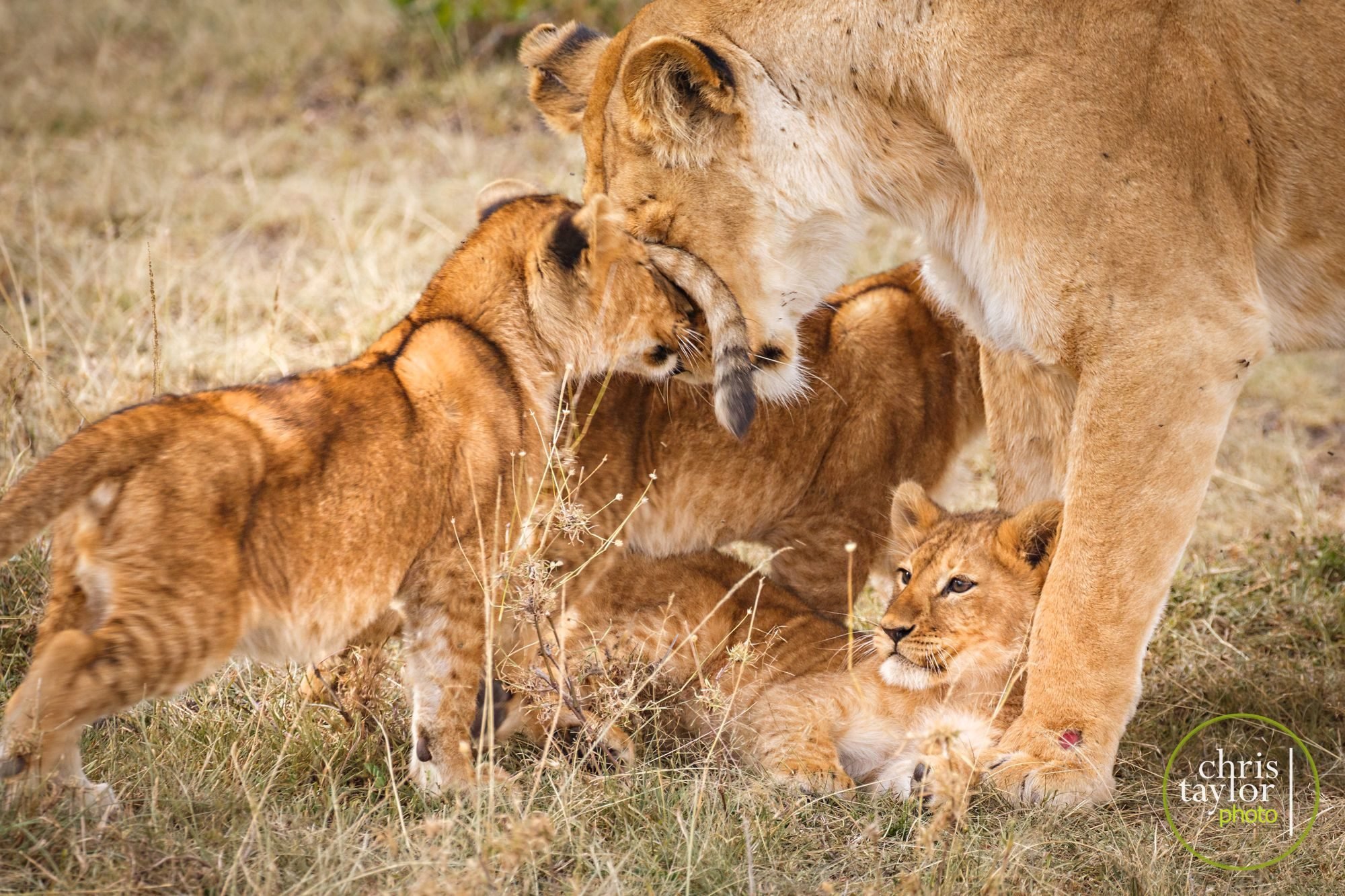

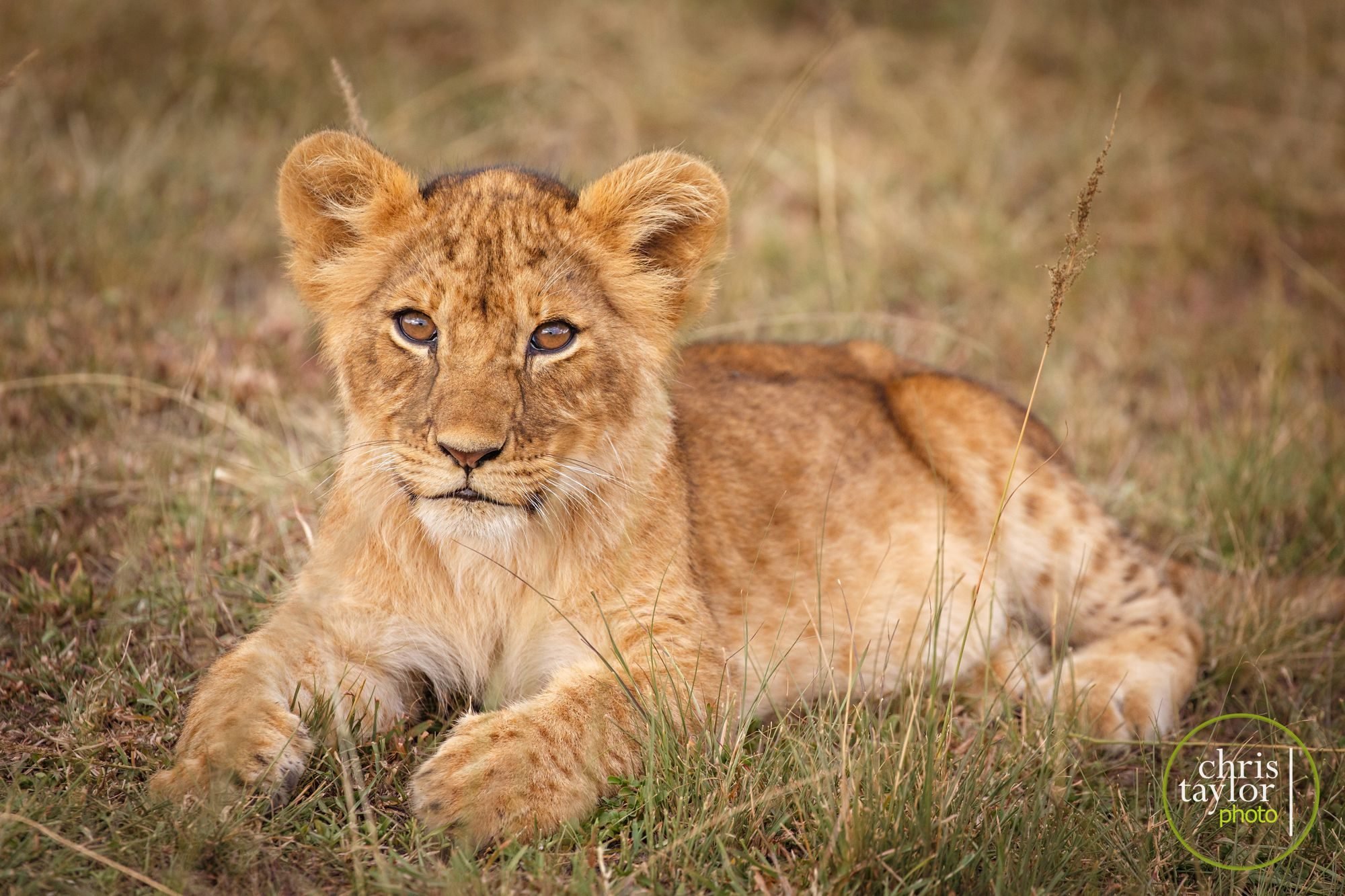 As this amazing day drew to an end, we headed back to the expedition base with memory cards overflowing with the glory of this special place.
As this amazing day drew to an end, we headed back to the expedition base with memory cards overflowing with the glory of this special place.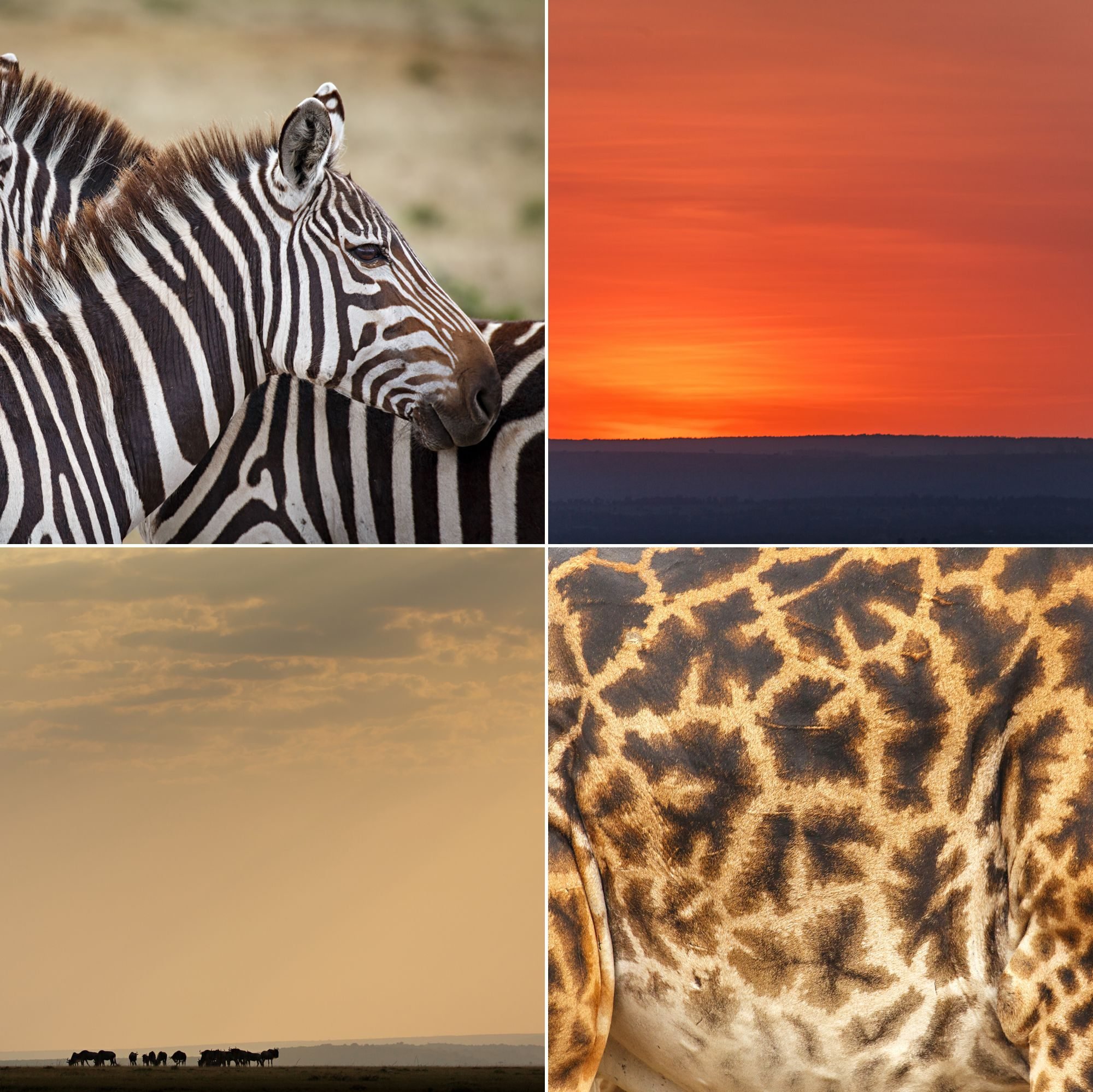
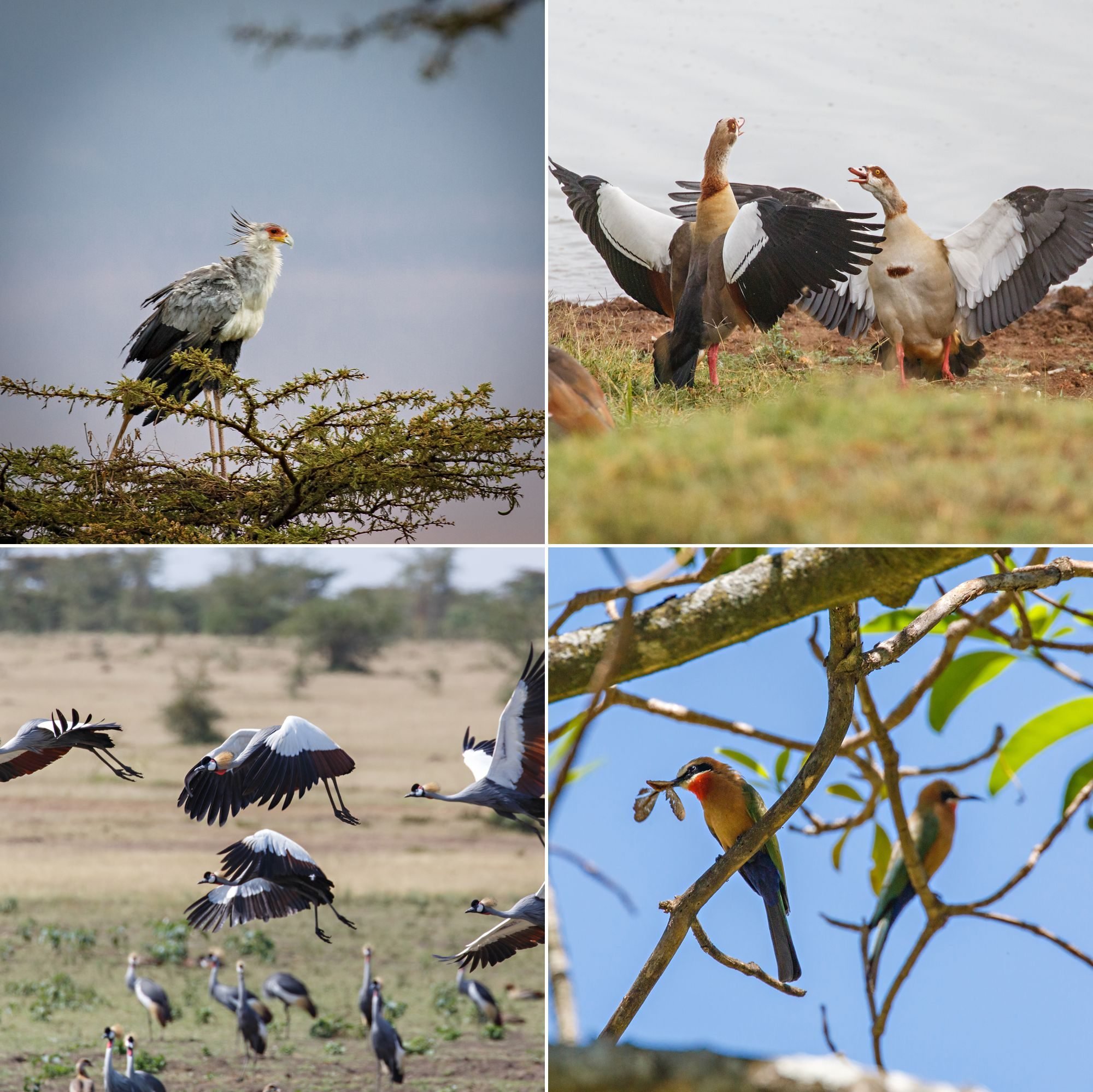
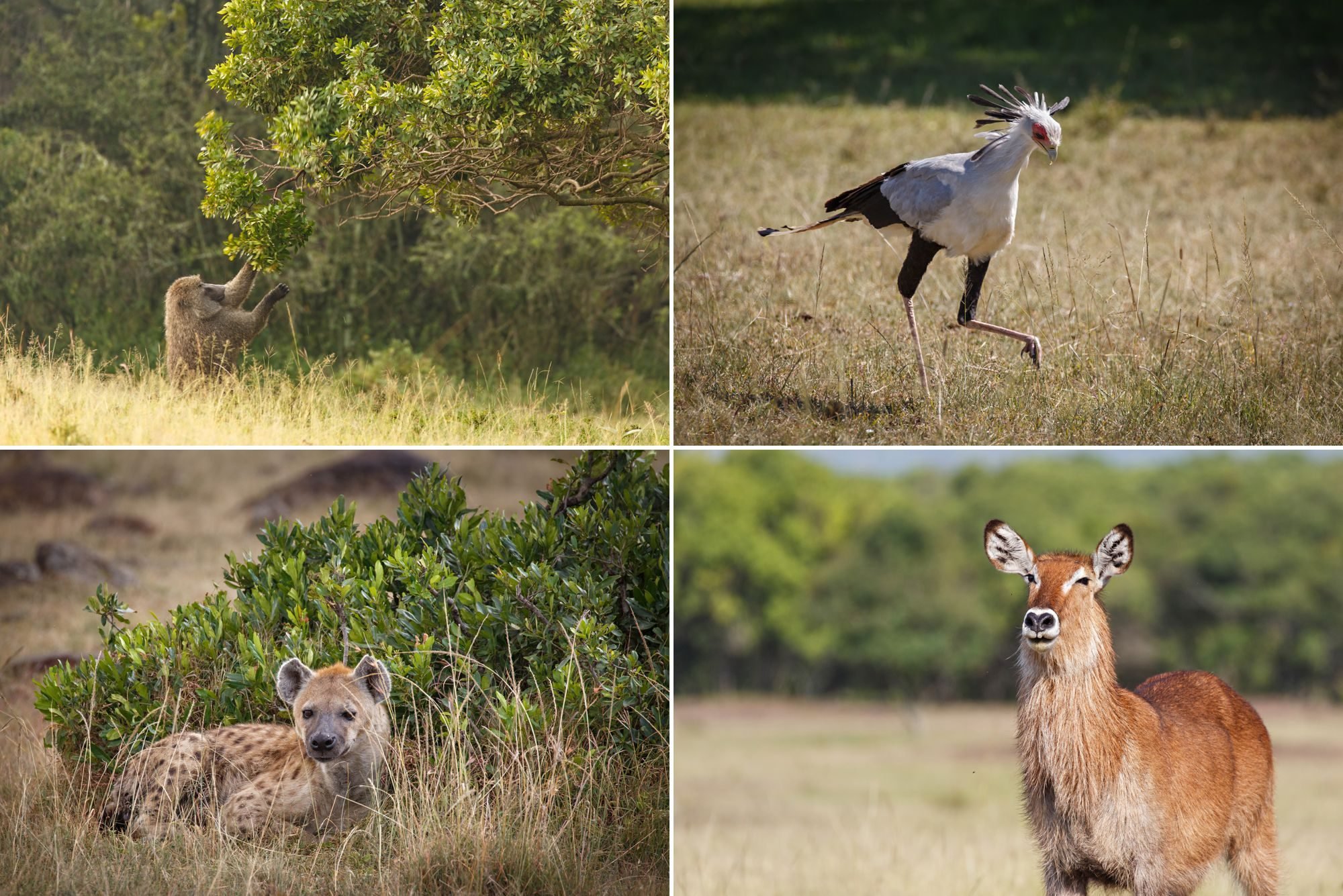 • MAASAI HERDSMEN AND THEIR BOMASA big part of the Enonkishu approach to conservation is to control the grazing and ease tensions between the herders and the wildlife. Part of this is to minimise lion attacks.Traditionally the herders keep their cattle in wooden enclosures at night, known as 'bomas'. By encouraging the use of mobile metal bomas the fertilising action of the cattle's manure on the grassland can be encouraged. Rebekah was pleased for me to put the drone up to get some shots of the various circles of the past boma positions showing the stages of recovery. It was a real honour to be able to put the drone to good use in helping Rebekah demonstrate the benefits of the mobile bomas for future herdsmen education.The photo bottom right shows a genius invention devised by the 11 yr old son of a Maasai herdsman which is now widely used with great success to prevent night-time lion attacks. The device is a solar-charged flashing white light using the components from a car indicator, thought to resemble a flashing torchlight. Through irregular flashes (regular ones did not work), it deters lions from attacking the cattle in the night, probably because the random flashes mimic human activity. A simple yet effective way to keep lions from cattle, reducing tension between the people and the wildlife.
• MAASAI HERDSMEN AND THEIR BOMASA big part of the Enonkishu approach to conservation is to control the grazing and ease tensions between the herders and the wildlife. Part of this is to minimise lion attacks.Traditionally the herders keep their cattle in wooden enclosures at night, known as 'bomas'. By encouraging the use of mobile metal bomas the fertilising action of the cattle's manure on the grassland can be encouraged. Rebekah was pleased for me to put the drone up to get some shots of the various circles of the past boma positions showing the stages of recovery. It was a real honour to be able to put the drone to good use in helping Rebekah demonstrate the benefits of the mobile bomas for future herdsmen education.The photo bottom right shows a genius invention devised by the 11 yr old son of a Maasai herdsman which is now widely used with great success to prevent night-time lion attacks. The device is a solar-charged flashing white light using the components from a car indicator, thought to resemble a flashing torchlight. Through irregular flashes (regular ones did not work), it deters lions from attacking the cattle in the night, probably because the random flashes mimic human activity. A simple yet effective way to keep lions from cattle, reducing tension between the people and the wildlife.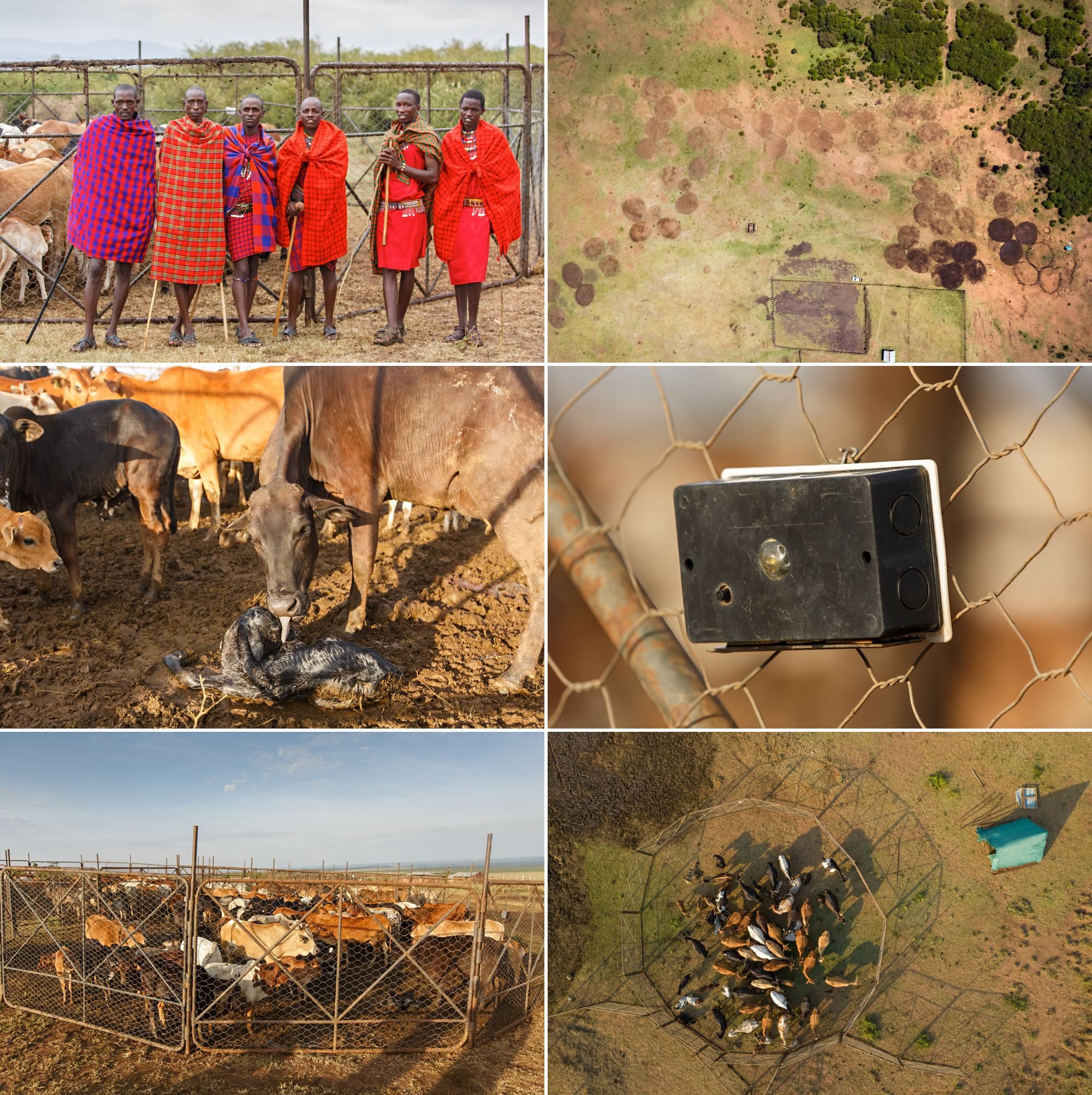

 • THE LAST POACHED ELEPHANTOn our walking transect head ranger Dapash took us to the scattered bones of the last elephant to die from poaching on the conservancy.The elephant died in 2017 and was thought to have been shot with a poisoned arrow after destroying some of the maize crop in fields nearby. The elephant wandered into Enonkishu and sadly died a day or two later.Dapash told us that the rest of the elephants stayed with the dead elephant for a week, in mourning, before moving on. They have since discovered that drones can be used to chase the elephants from the fields, which should reduce the damage and prevent future retaliatory killings.
• THE LAST POACHED ELEPHANTOn our walking transect head ranger Dapash took us to the scattered bones of the last elephant to die from poaching on the conservancy.The elephant died in 2017 and was thought to have been shot with a poisoned arrow after destroying some of the maize crop in fields nearby. The elephant wandered into Enonkishu and sadly died a day or two later.Dapash told us that the rest of the elephants stayed with the dead elephant for a week, in mourning, before moving on. They have since discovered that drones can be used to chase the elephants from the fields, which should reduce the damage and prevent future retaliatory killings.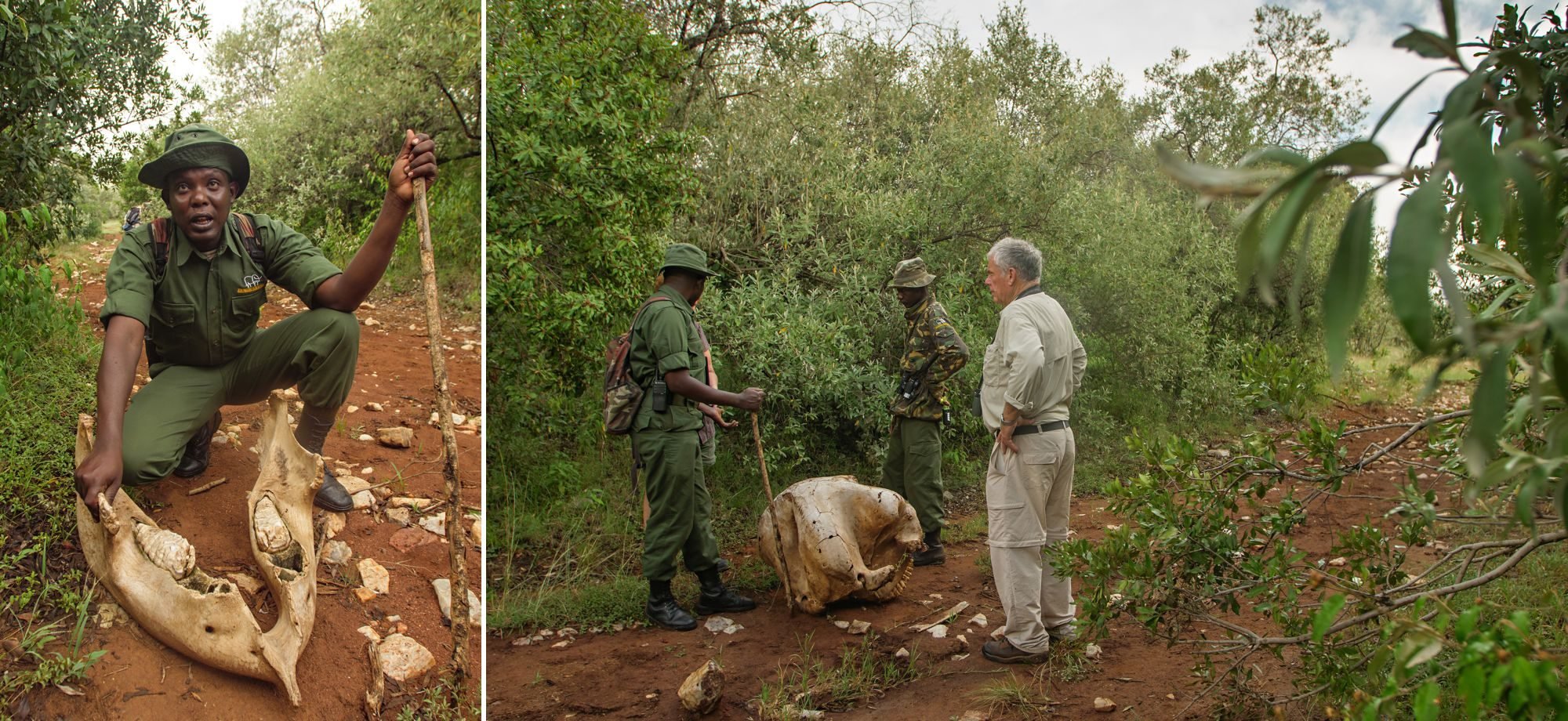 • A RICH DIVERSITYWhat continually struck me about the Enonkishu Conservancy was the huge diversity and numbers of wildlife it supported. Having gone from being nothing but wildlife-free farmland only a few short years ago, the effects of what the team here are doing was abundantly evident.Herds of zebra grazing, wildebeest, impala, eland, Thomson's gazelle, Grant's gazelle, giraffe, elephant, hippo, topi, waterbuck, reedbuck, klipspringer, mongoose, hyaena, leopard, hartebeest, buffalo, honey badger, spring hare, aardvark, vervet monkey, baboon, black-backed jackal and a whole host of amazing birds. The place is teeming and this is all down to the carefully planned work of the Enonkishu team.Our job as Citizen Scientists was, amongst other things, to document this diversity, which until we came had not been recorded at length using rigorous scientific standards. We felt privileged to help in this way and the plan is, that over many years of expeditions, the success of Enonkishu can be documented in hard scientific detail – as an example and showcase on how people and wildlife can coexist for the benefit of all.
• A RICH DIVERSITYWhat continually struck me about the Enonkishu Conservancy was the huge diversity and numbers of wildlife it supported. Having gone from being nothing but wildlife-free farmland only a few short years ago, the effects of what the team here are doing was abundantly evident.Herds of zebra grazing, wildebeest, impala, eland, Thomson's gazelle, Grant's gazelle, giraffe, elephant, hippo, topi, waterbuck, reedbuck, klipspringer, mongoose, hyaena, leopard, hartebeest, buffalo, honey badger, spring hare, aardvark, vervet monkey, baboon, black-backed jackal and a whole host of amazing birds. The place is teeming and this is all down to the carefully planned work of the Enonkishu team.Our job as Citizen Scientists was, amongst other things, to document this diversity, which until we came had not been recorded at length using rigorous scientific standards. We felt privileged to help in this way and the plan is, that over many years of expeditions, the success of Enonkishu can be documented in hard scientific detail – as an example and showcase on how people and wildlife can coexist for the benefit of all.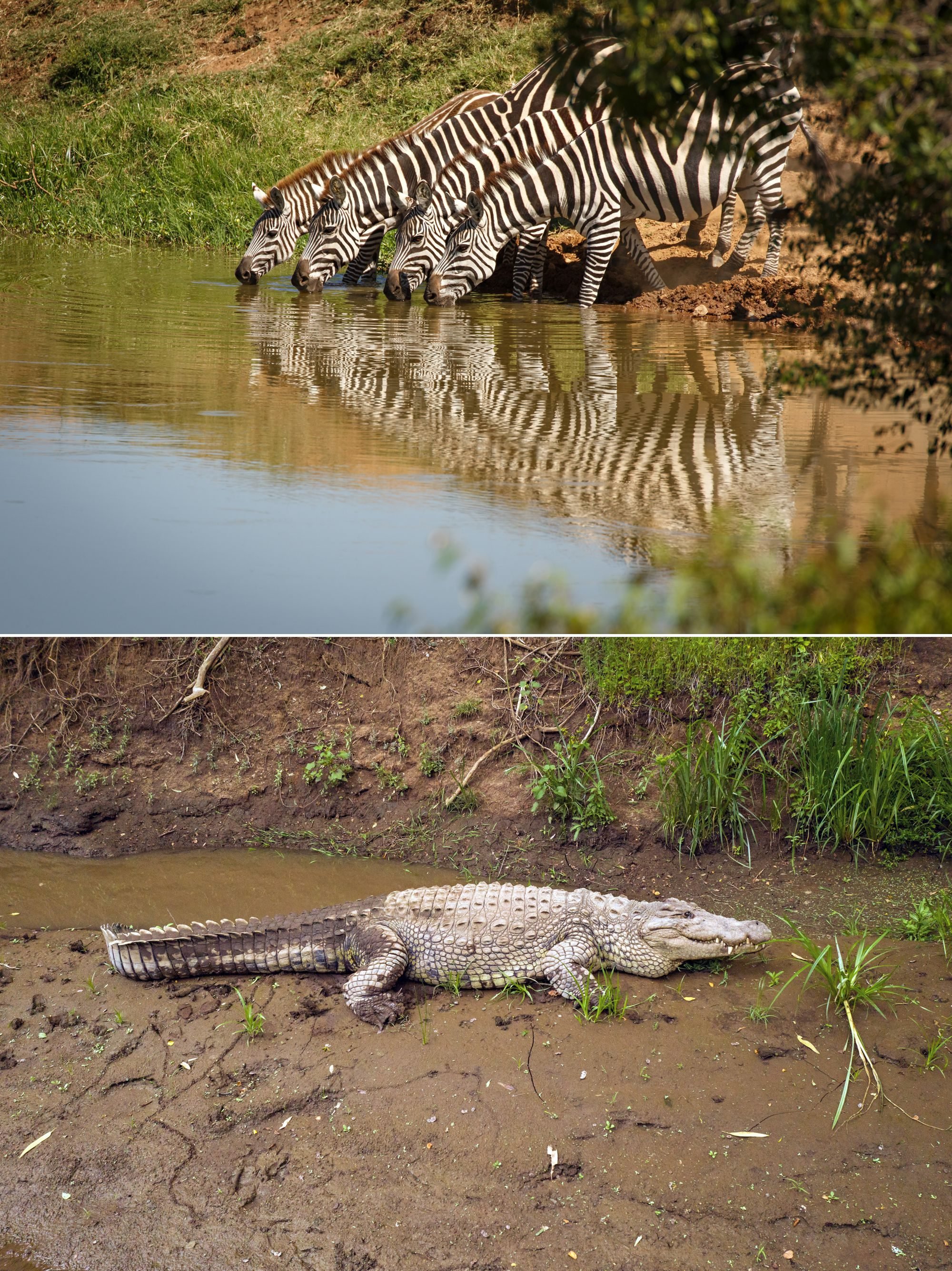
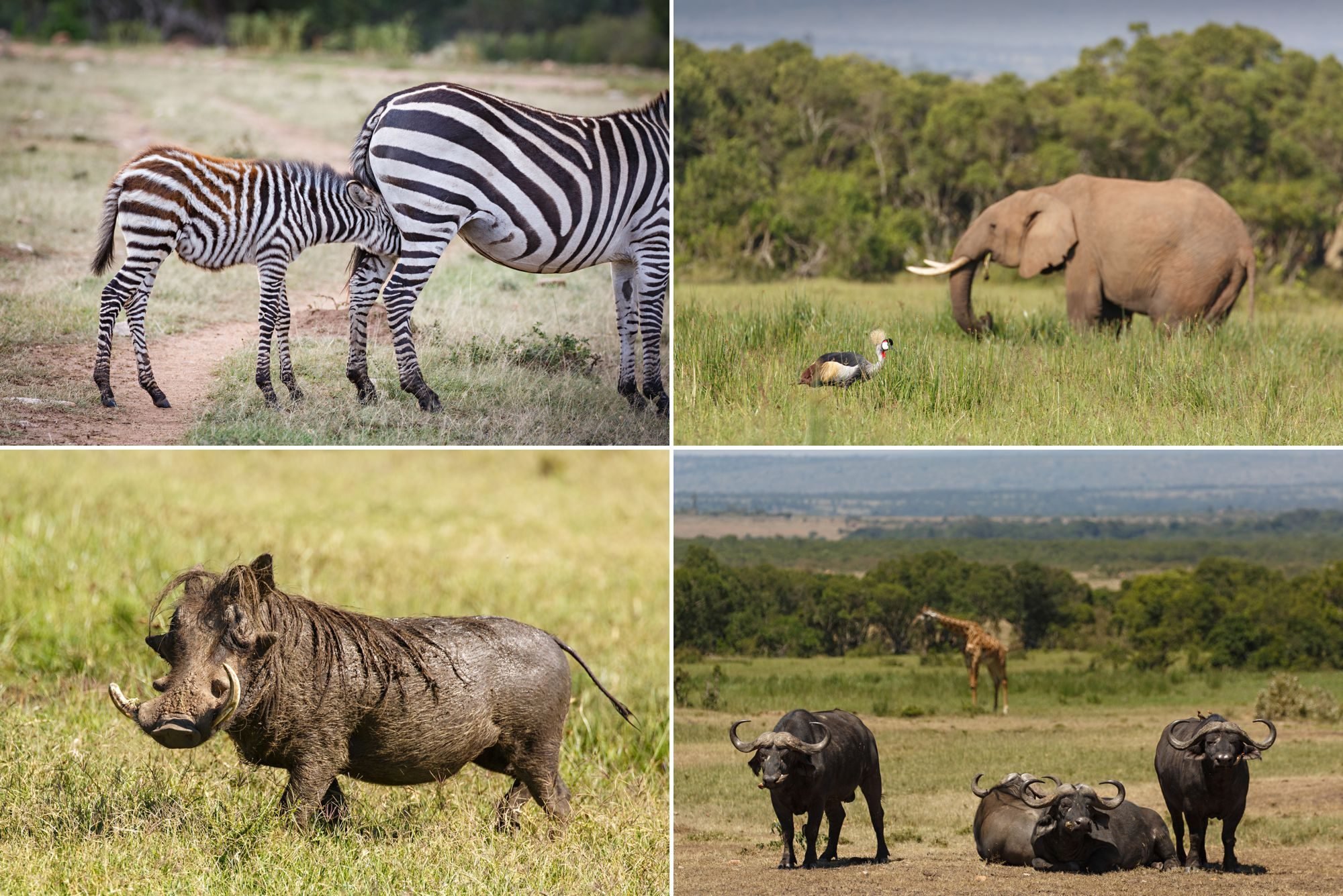

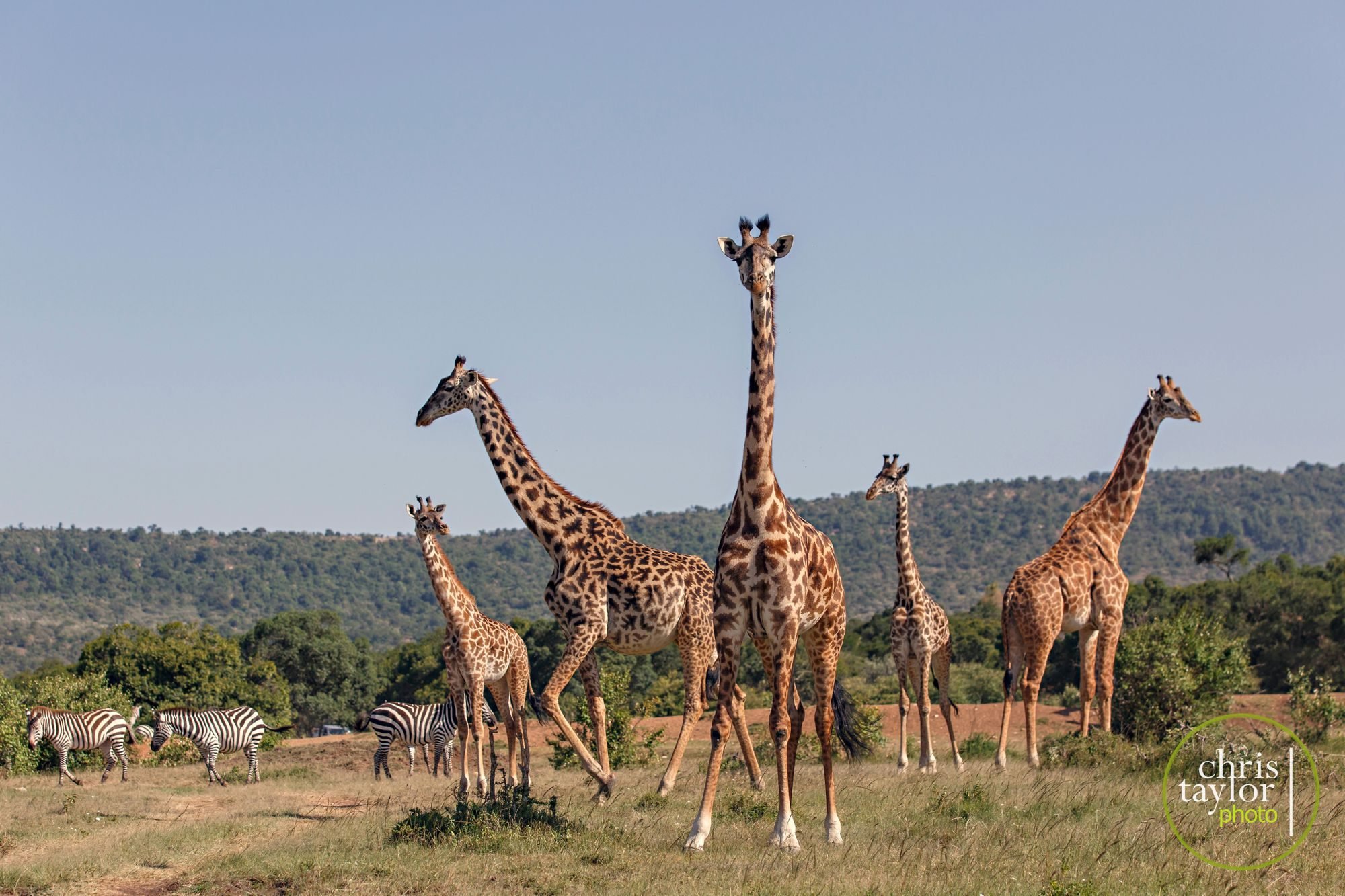
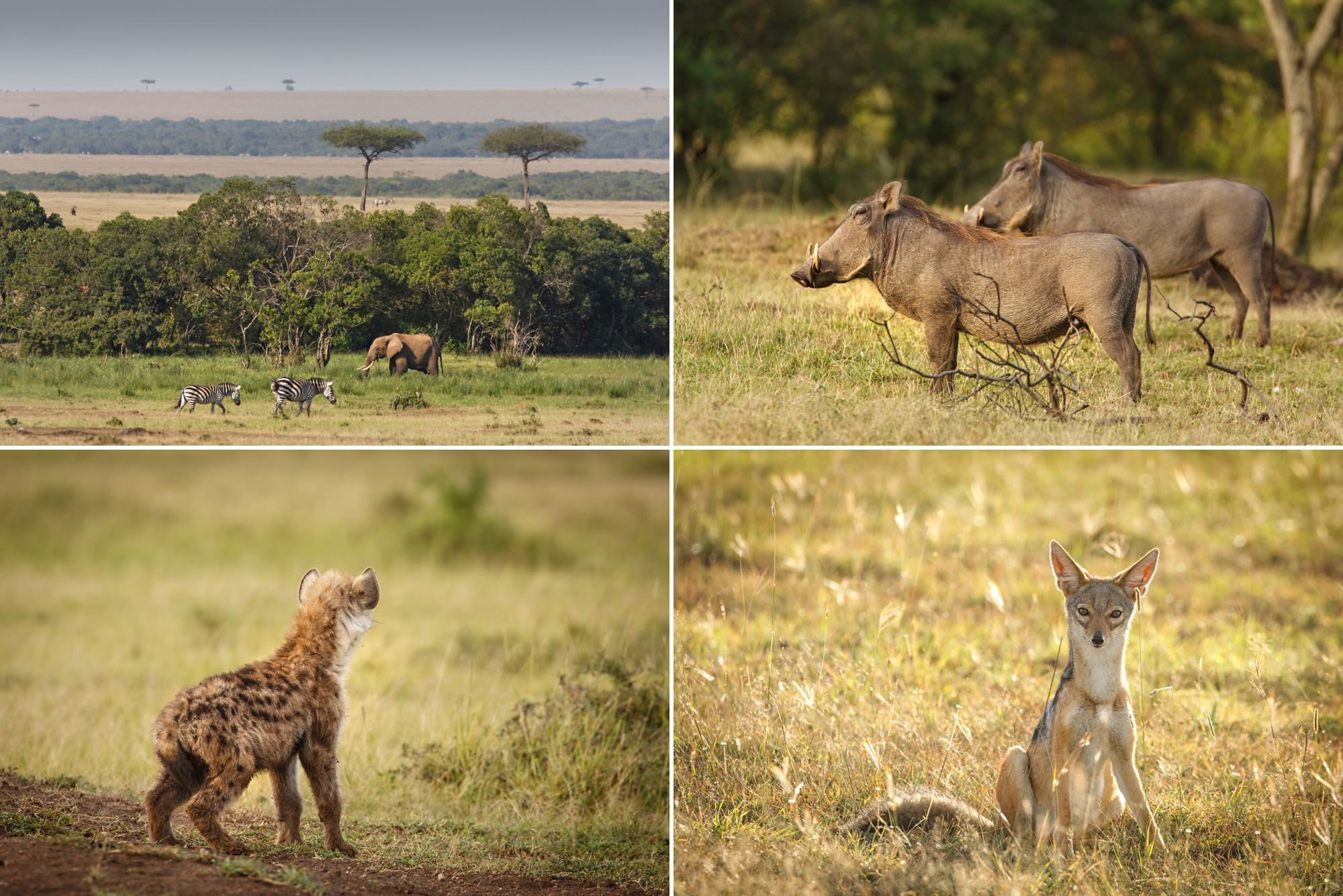
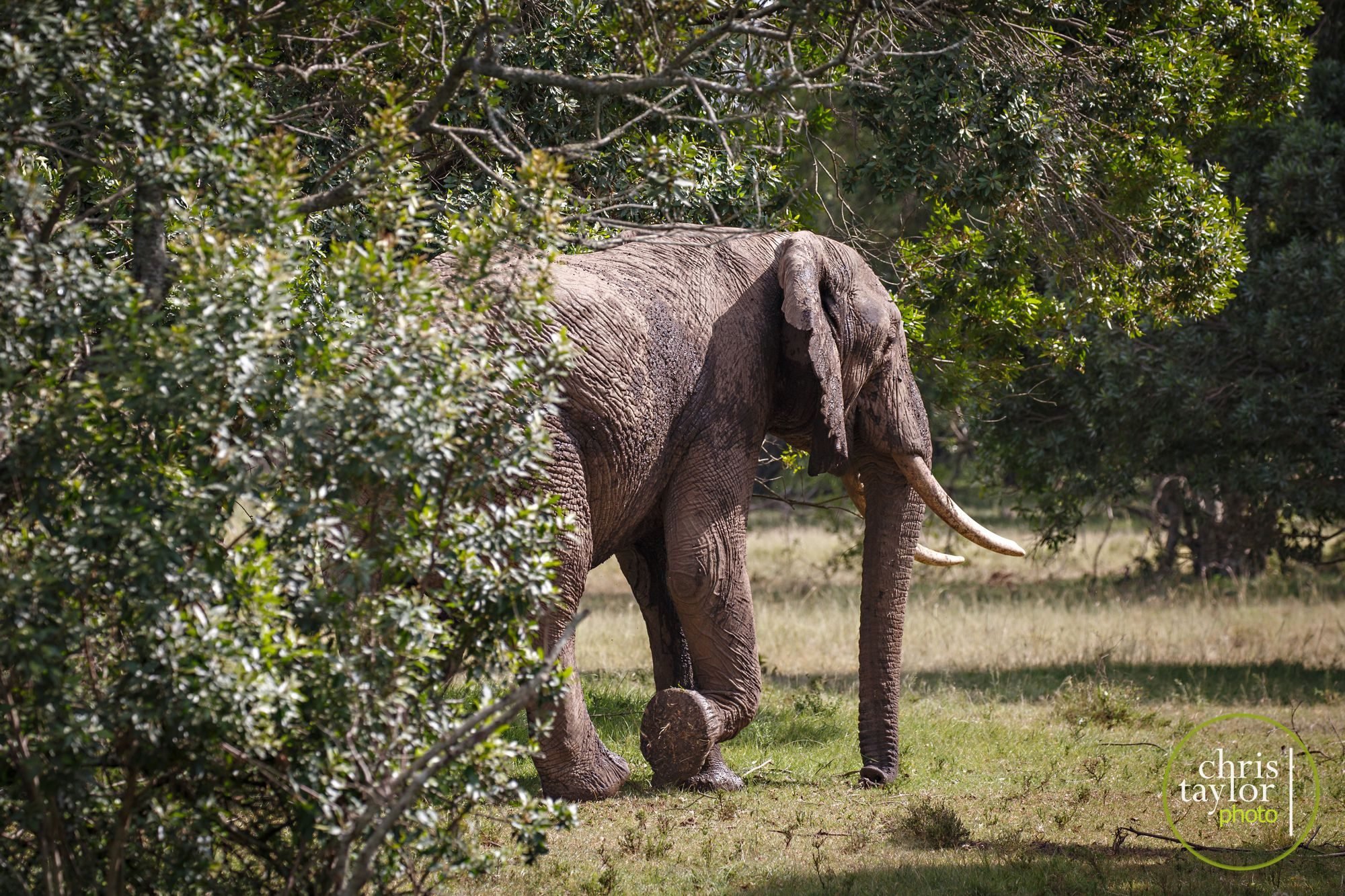
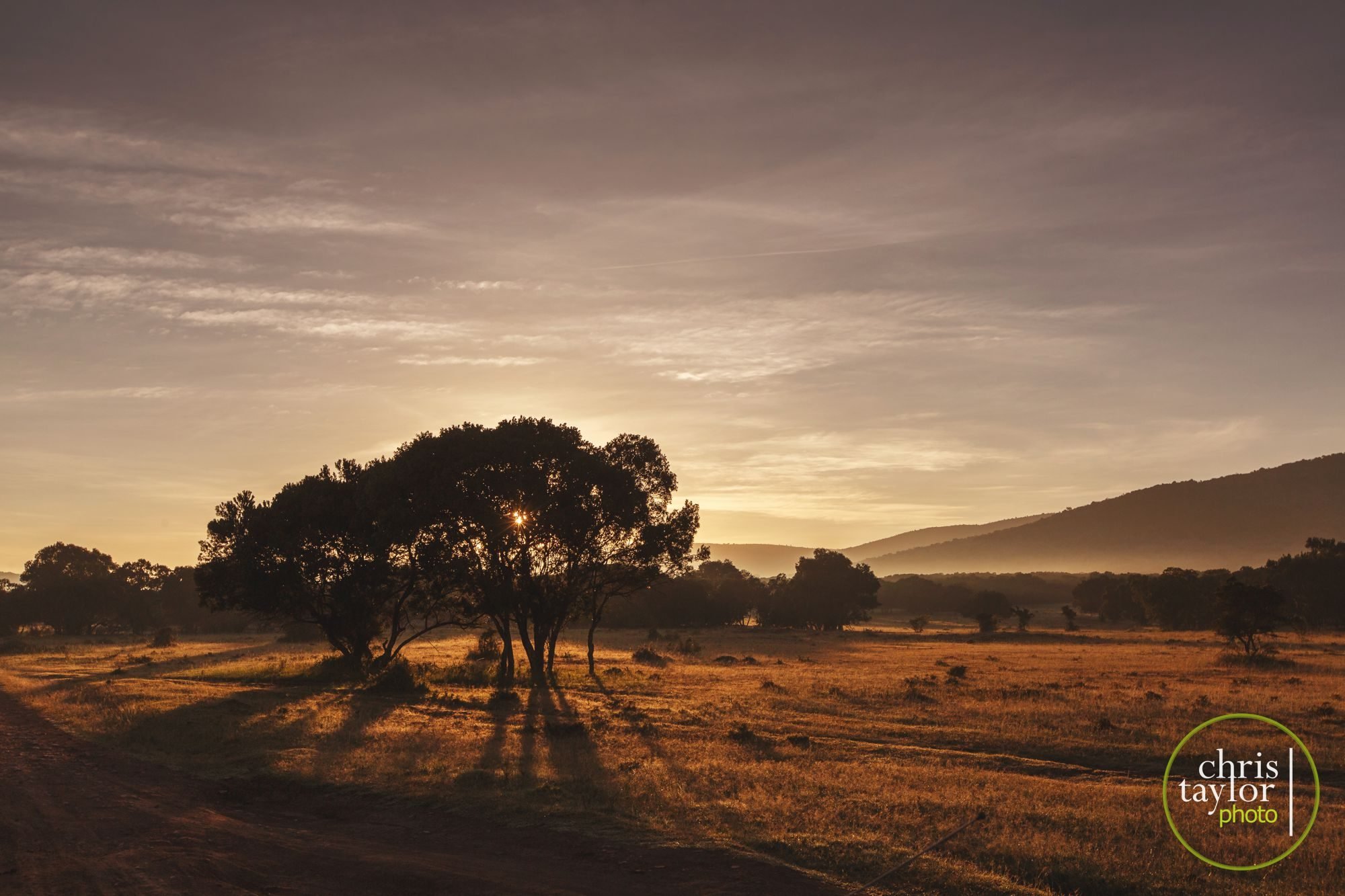
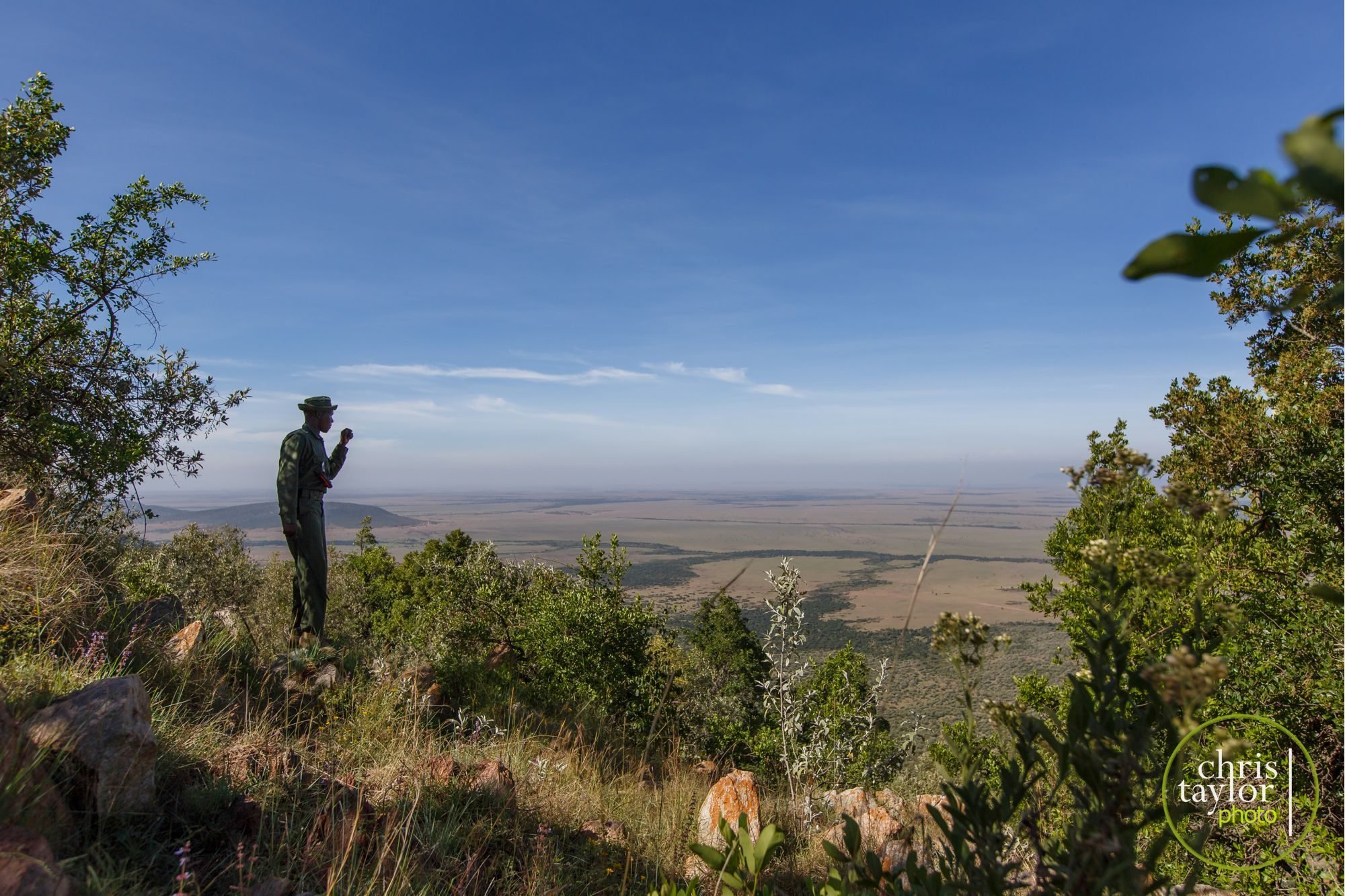
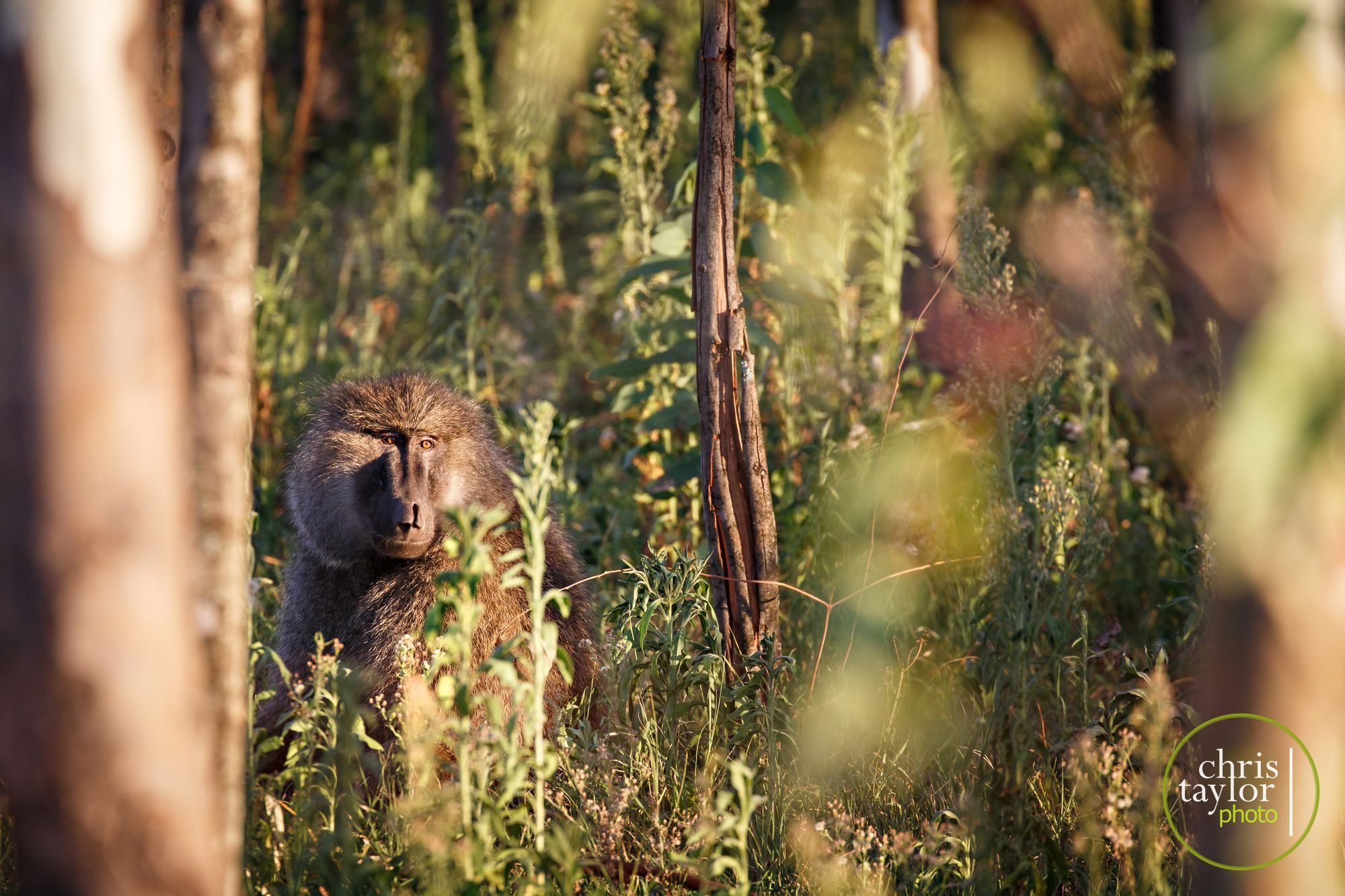
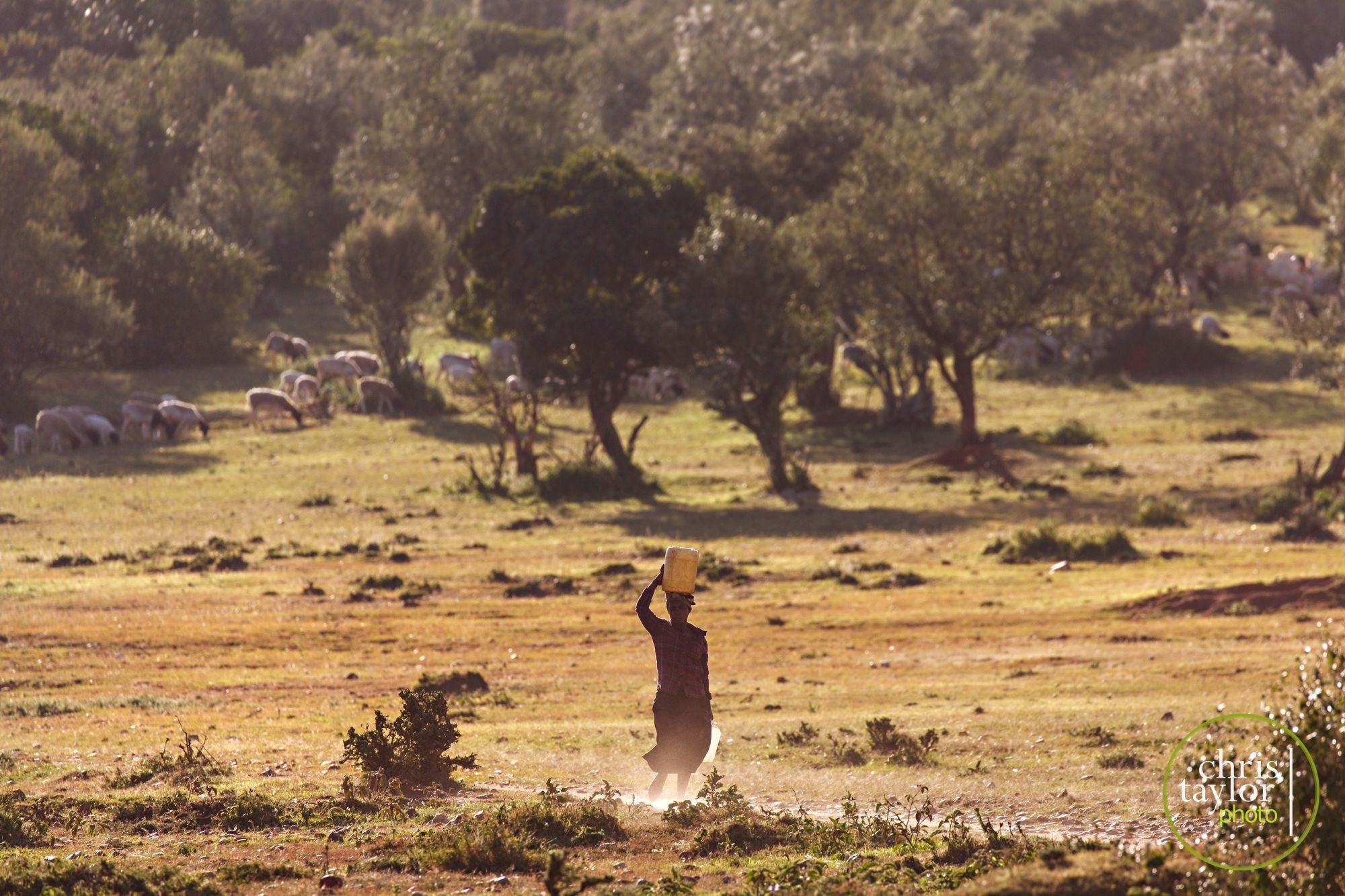
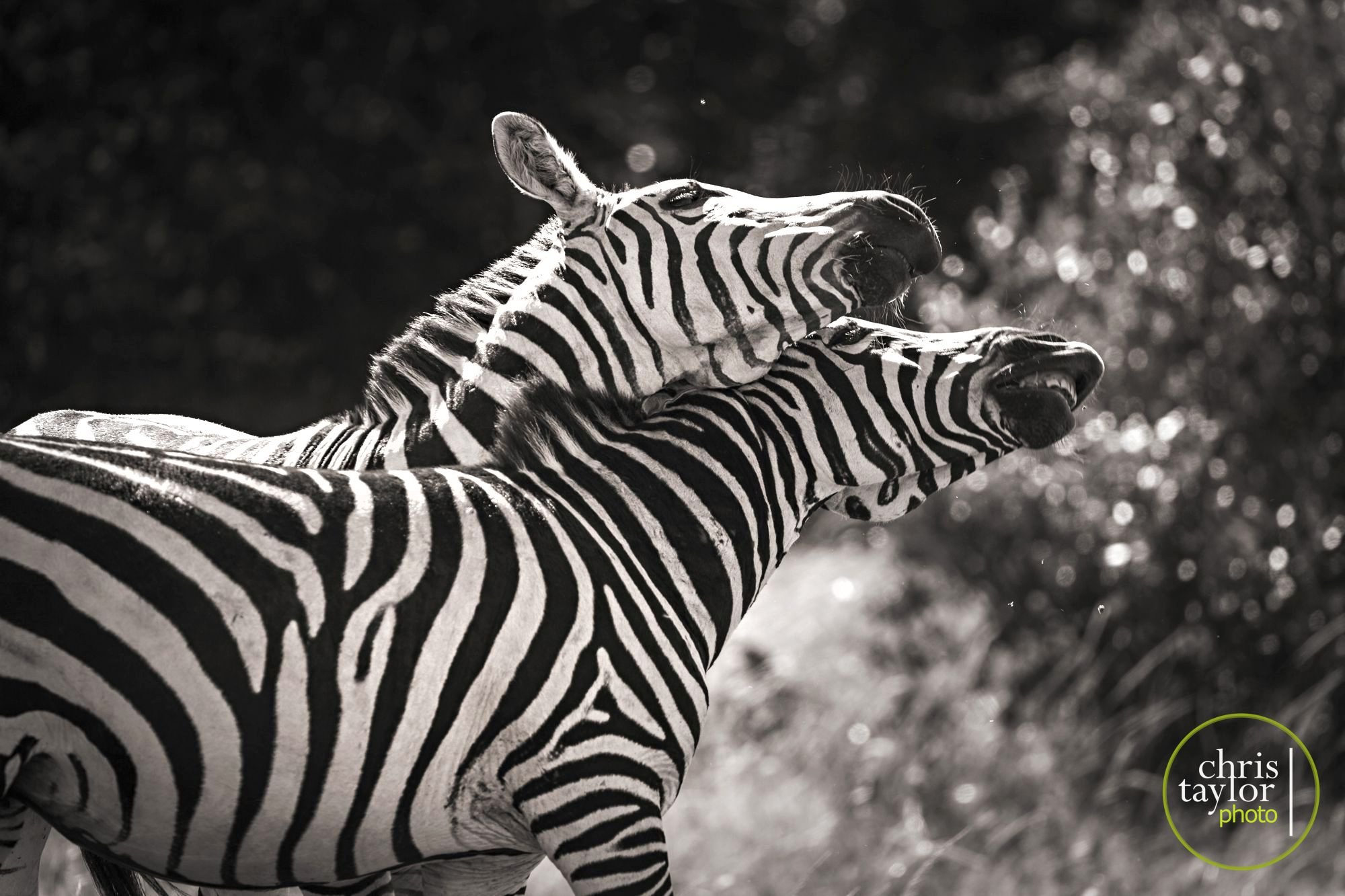
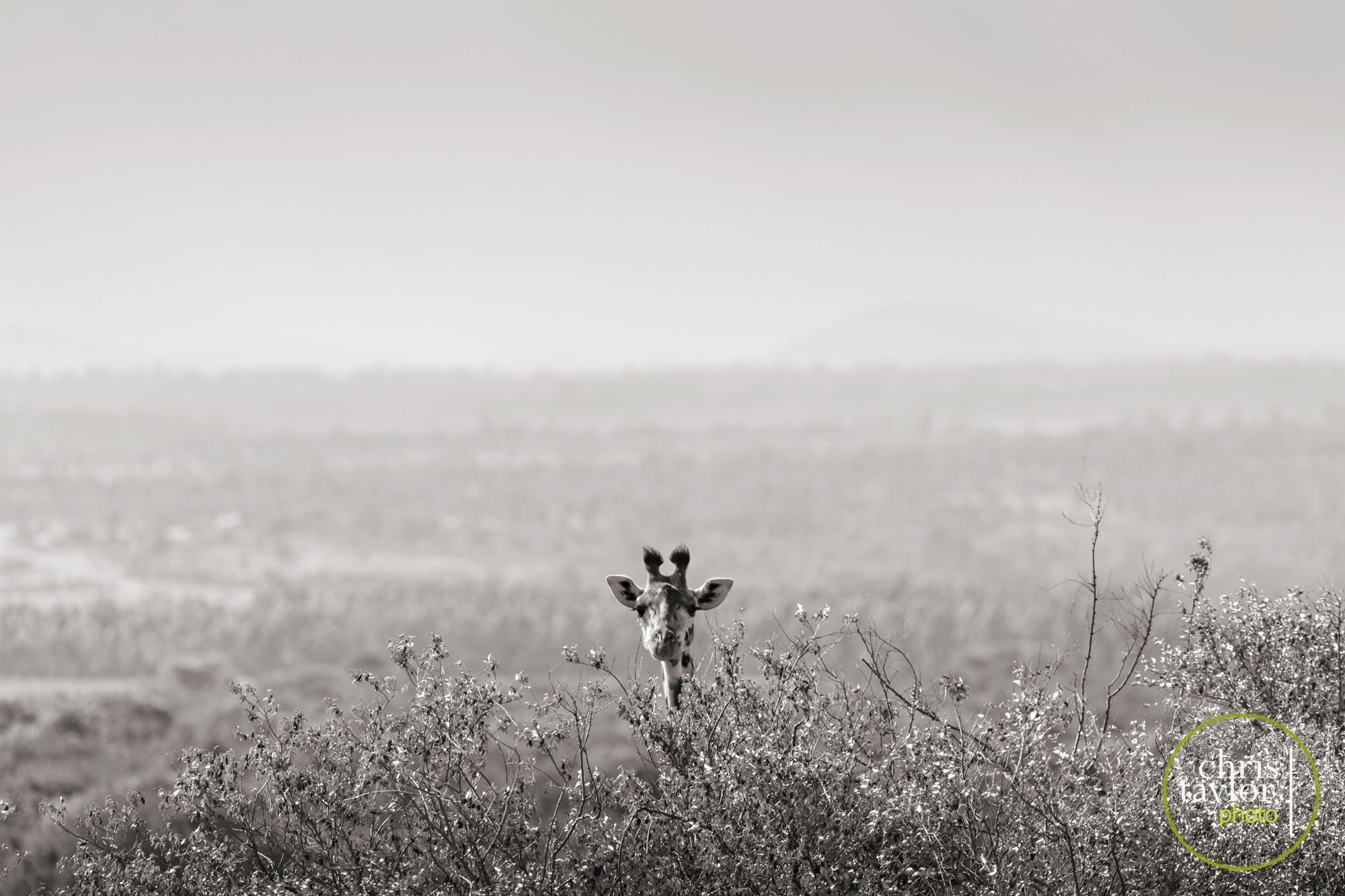
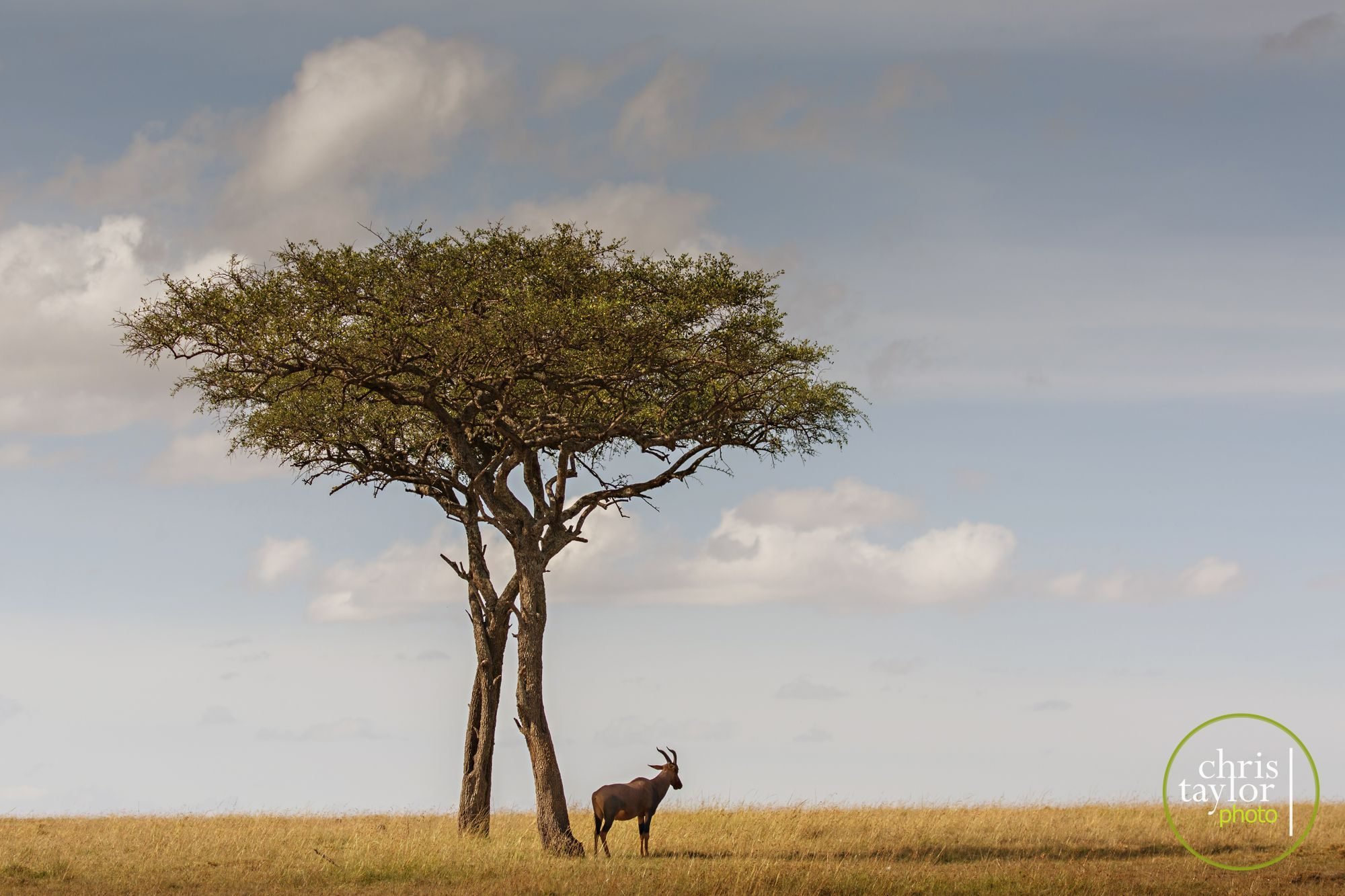
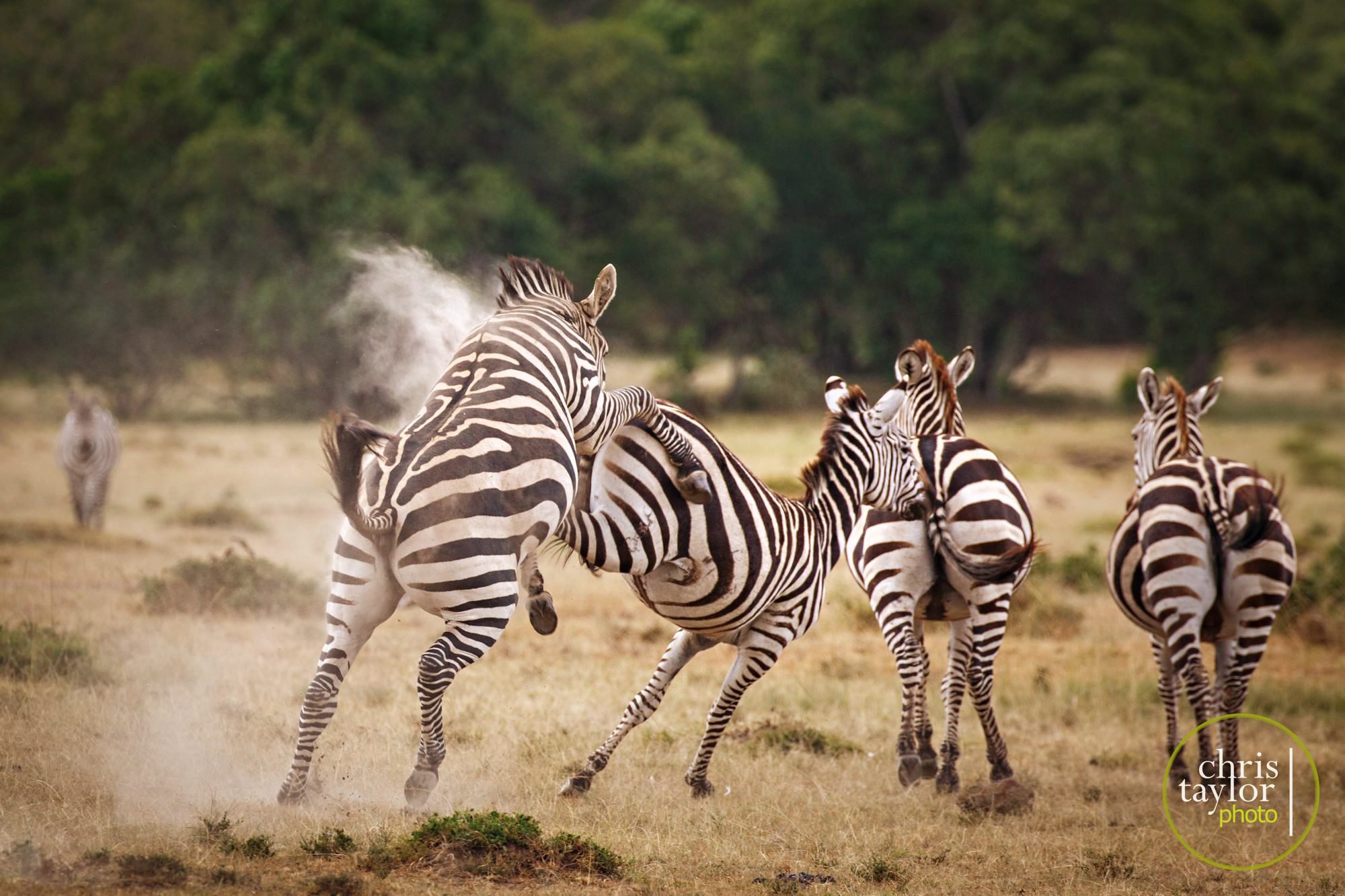
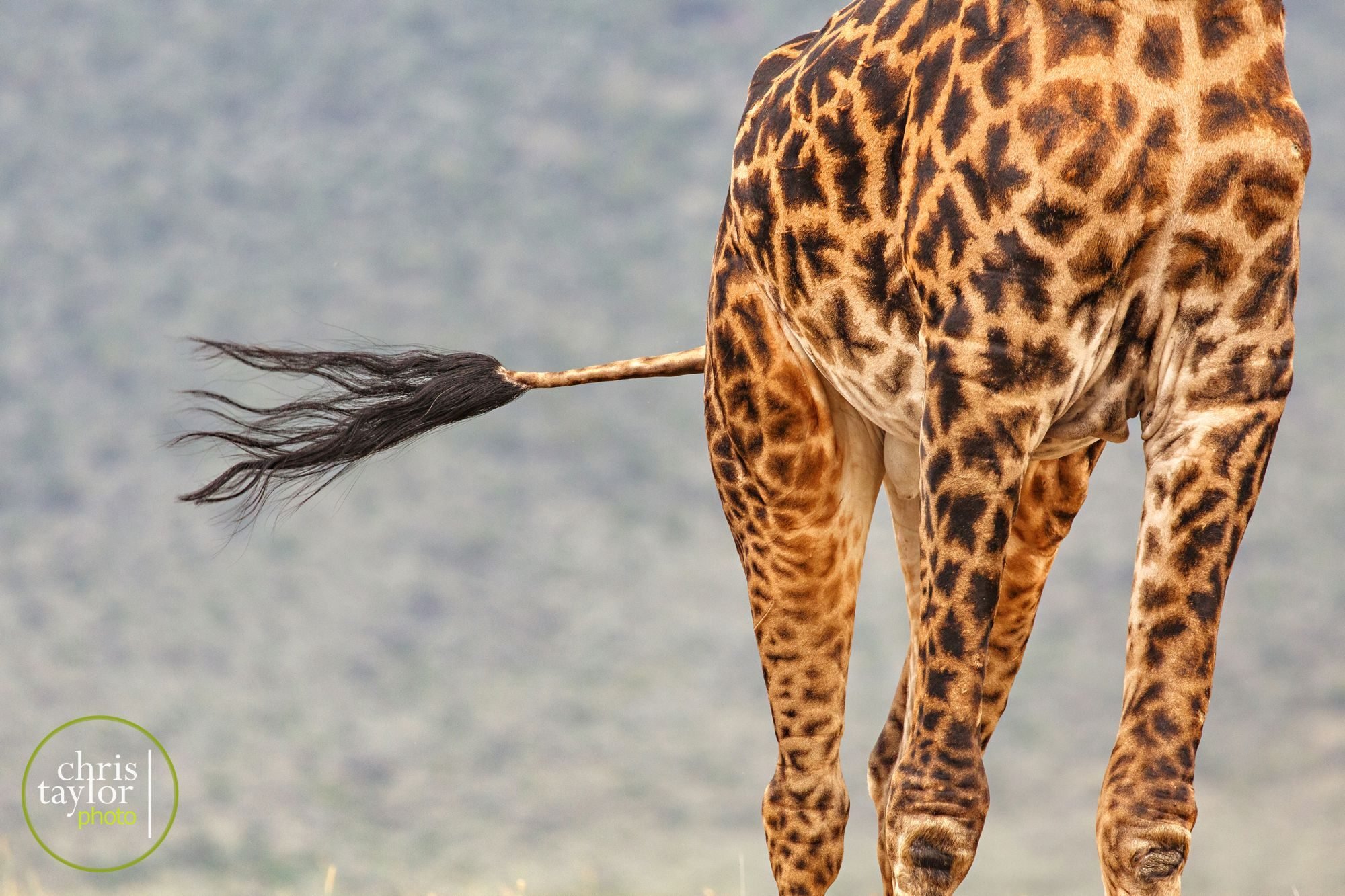
 • EDUCATING THE FUTURETowards the end of our expedition we had a day planned with the local school - Emarti Secondary School. We were to take them out in the 4x4s, show them the conservancy and explain what we had been doing.Despite living next door to Enonkishu, many of these children had never seen most of the animals up close and were very excited to see the buffalo, giraffes and warthogs. We had hoped to find them an elephant or two, alas the big grey beasts had other plans, but we did manage to find them two other big grey beasts. Driving in the cab with the handheld VHF radio I overheard a call between the rangers about rhino seen in the far corner of the conservancy. That was all the info we needed and I rapidly changed our route to go & find these battle-tanks on legs.Sure enough, ten minutes later we were rewarded with the sight of two white rhinos slowly grazing their way across the plain. I should probably come clean at this point and point out that they weren't 'proper' wild white rhinos but 'escapees' from the rhino sanctuary next door that had wandered (with their armed bodyguards) onto Enonkishu. That didn't bother us though, to see white rhinos on the conservancy was awesome and our cameras were machine-gunning the scene!After the excitement of this 'charismatic megafauna' aka 'sexy species' we all headed back to base for lunch followed by a talk about Enonkishu and the importance of what is happening here by rangers Dapash & Albert, and an inspiring presentation by MTC training manager Musa.
• EDUCATING THE FUTURETowards the end of our expedition we had a day planned with the local school - Emarti Secondary School. We were to take them out in the 4x4s, show them the conservancy and explain what we had been doing.Despite living next door to Enonkishu, many of these children had never seen most of the animals up close and were very excited to see the buffalo, giraffes and warthogs. We had hoped to find them an elephant or two, alas the big grey beasts had other plans, but we did manage to find them two other big grey beasts. Driving in the cab with the handheld VHF radio I overheard a call between the rangers about rhino seen in the far corner of the conservancy. That was all the info we needed and I rapidly changed our route to go & find these battle-tanks on legs.Sure enough, ten minutes later we were rewarded with the sight of two white rhinos slowly grazing their way across the plain. I should probably come clean at this point and point out that they weren't 'proper' wild white rhinos but 'escapees' from the rhino sanctuary next door that had wandered (with their armed bodyguards) onto Enonkishu. That didn't bother us though, to see white rhinos on the conservancy was awesome and our cameras were machine-gunning the scene!After the excitement of this 'charismatic megafauna' aka 'sexy species' we all headed back to base for lunch followed by a talk about Enonkishu and the importance of what is happening here by rangers Dapash & Albert, and an inspiring presentation by MTC training manager Musa.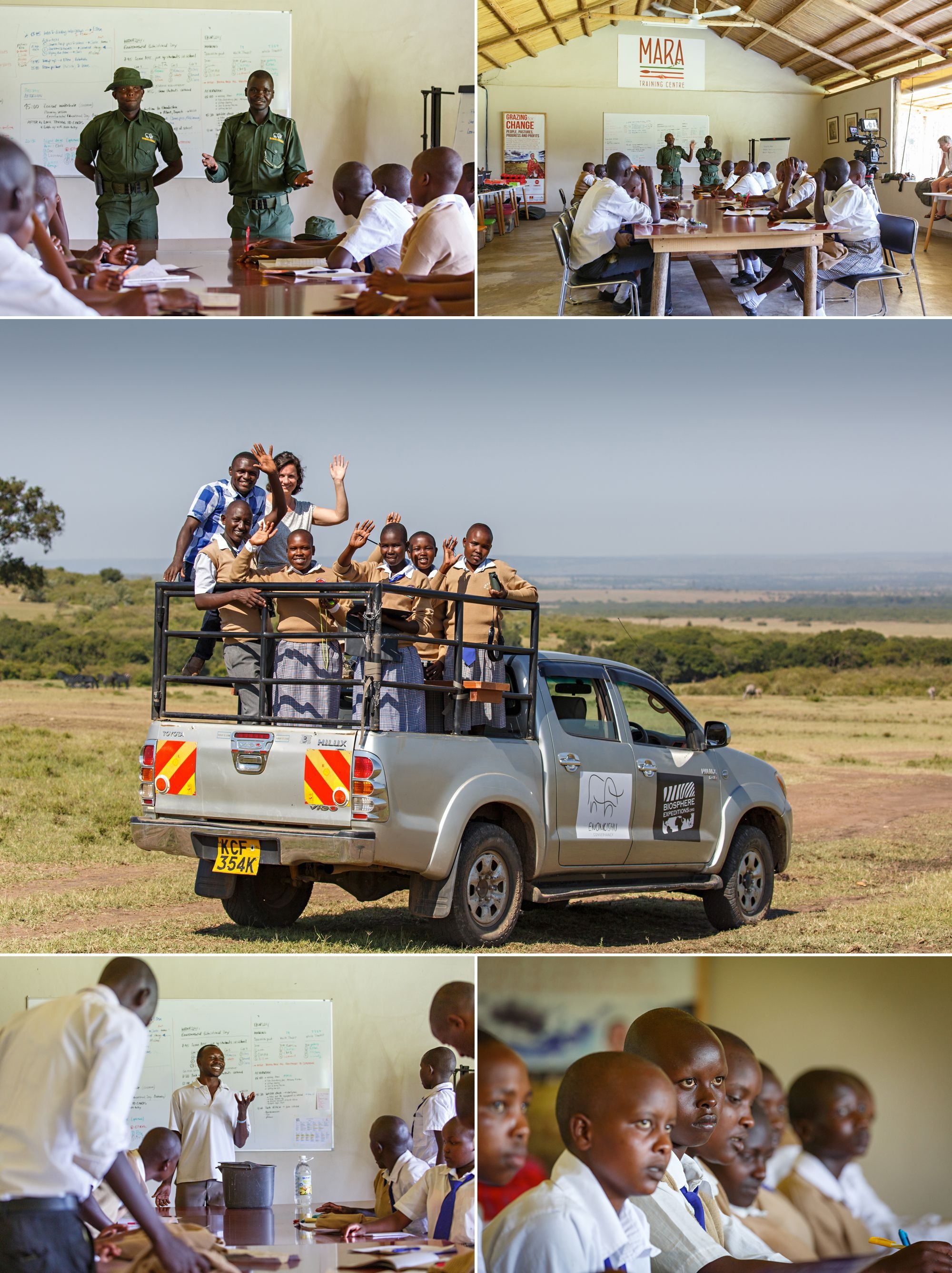
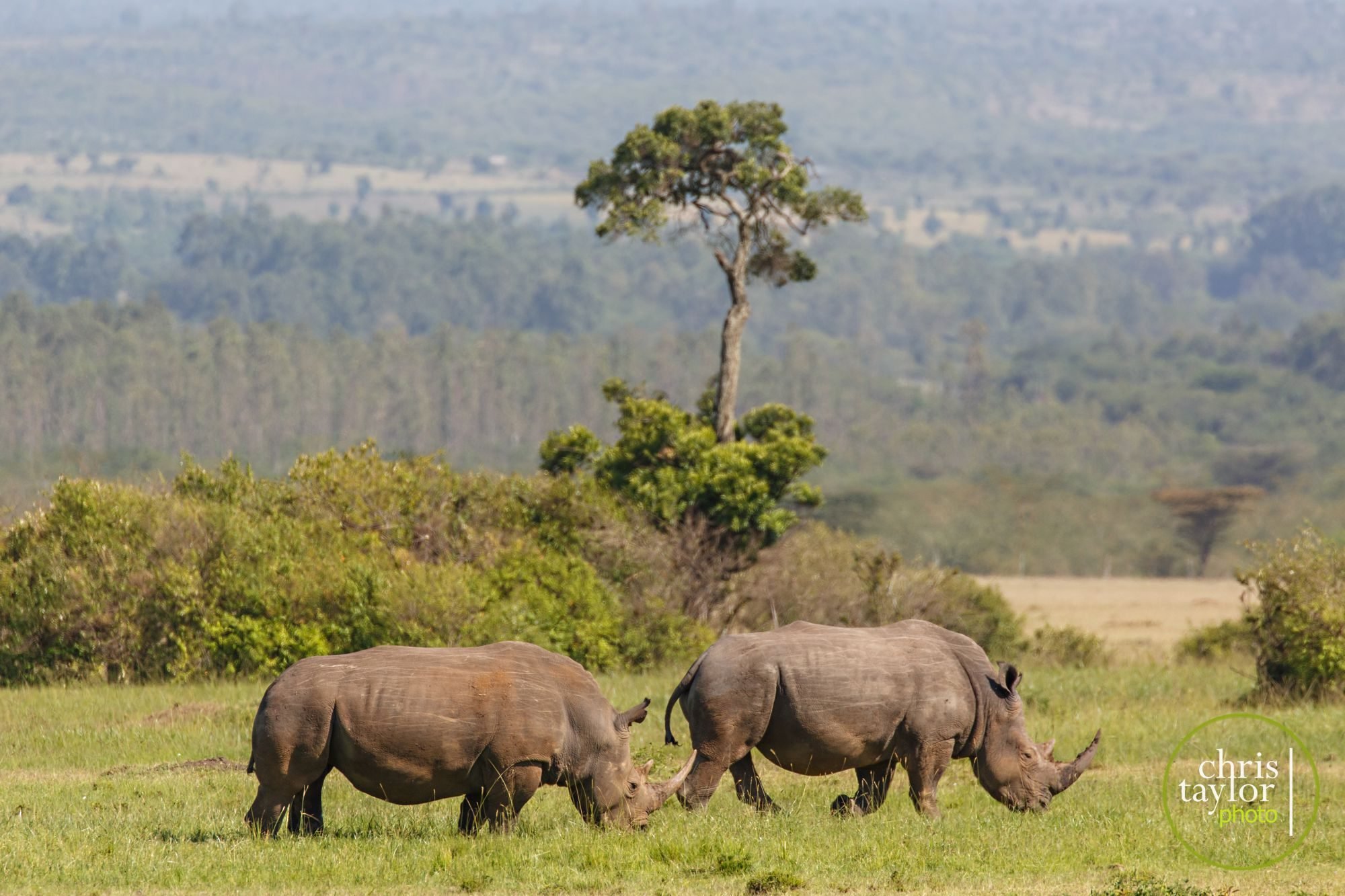 • DRONING ONThe day was rounded off with the school party split into three groups; myself, Carrie & Leonard each teaching a group about a different aspect of what we had been doing. I demonstrated the drone to them and allowed a few of them to have a go at flying it. Centre manager Musa was an absolute natural!
• DRONING ONThe day was rounded off with the school party split into three groups; myself, Carrie & Leonard each teaching a group about a different aspect of what we had been doing. I demonstrated the drone to them and allowed a few of them to have a go at flying it. Centre manager Musa was an absolute natural!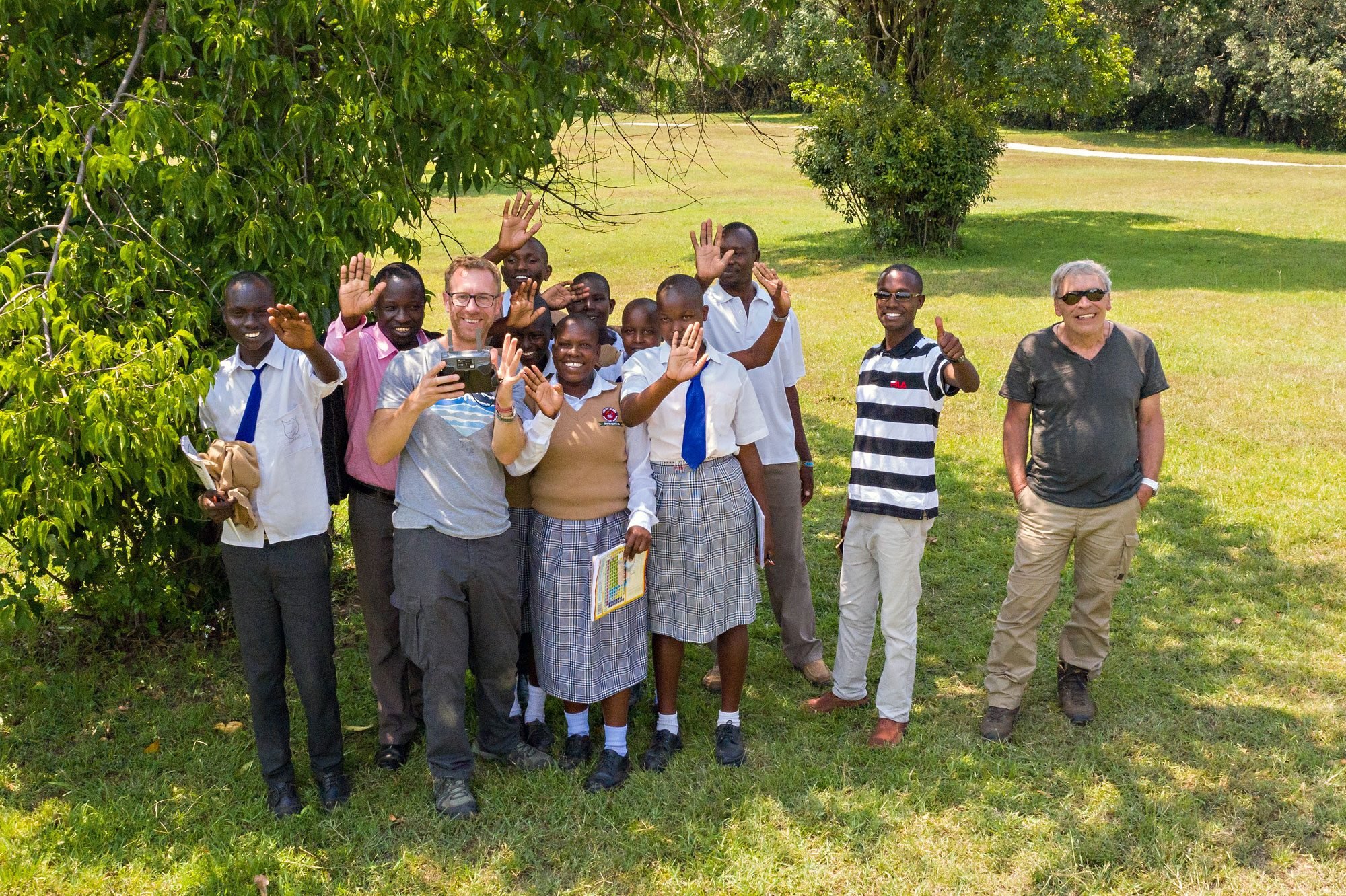
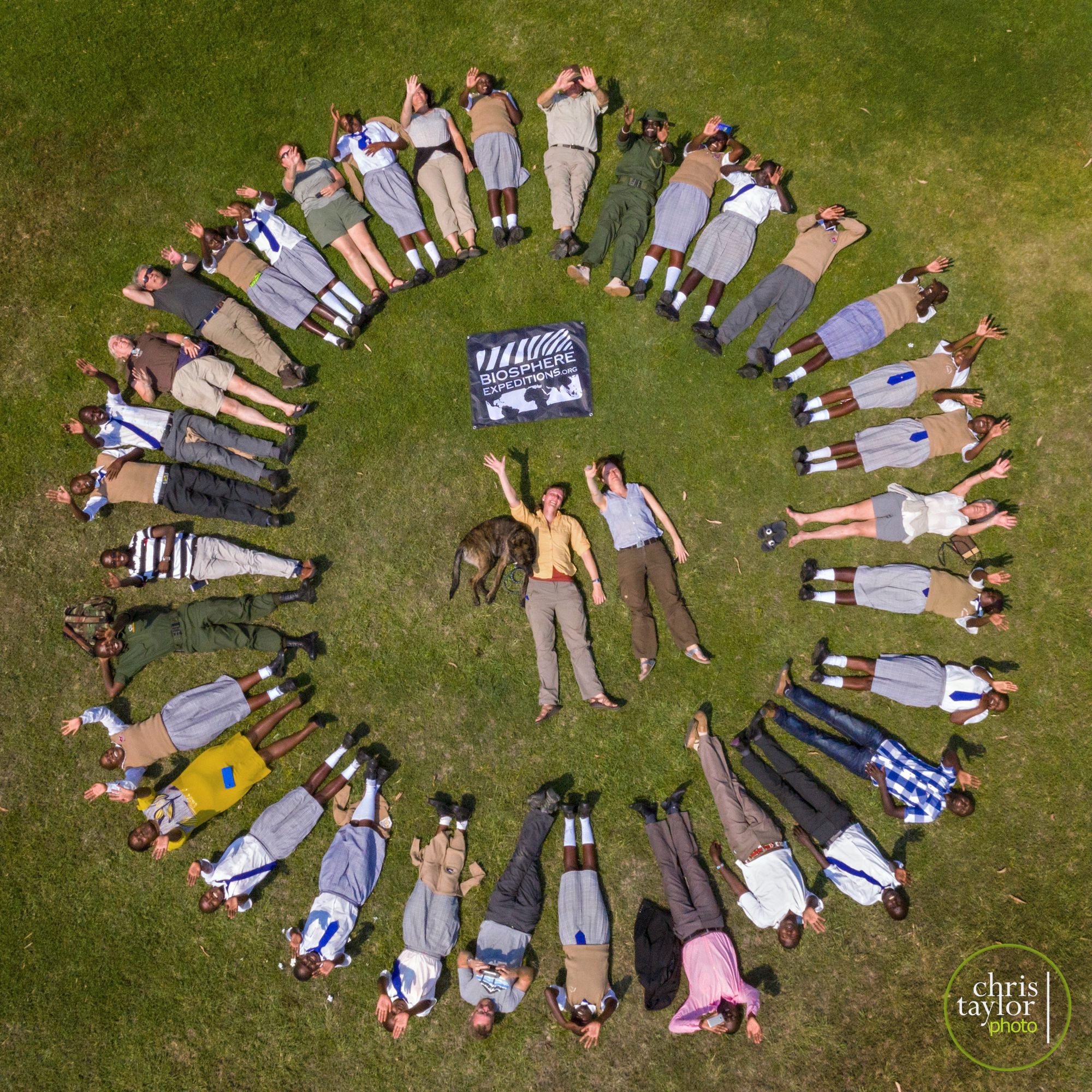
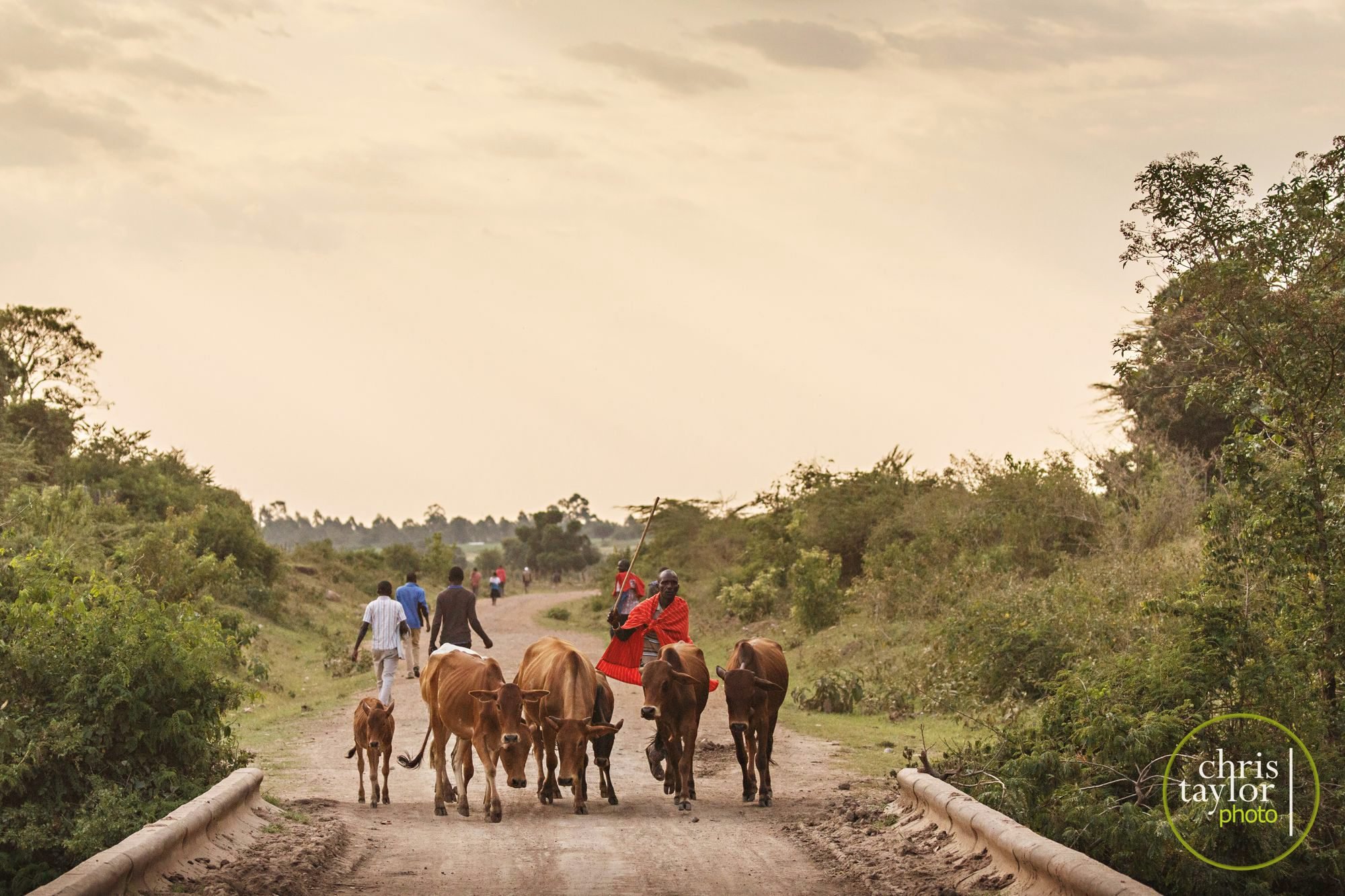 • THE LEGEND: LEONARDAs part of Biosphere Expeditions' commitment to the local community, a placement was offered to a local student for the expedition and we were lucky enough to have Leonard join us for two weeks.Leonard was a huge asset to the group with his knowledge of the wildlife, enthusiasm and efficiency for the data collection. A graduate of Environmental Science from Kenya University and a Maasai himself, Leonard became a great friend and we had many laughs. Leonard is hoping to continue his education with a masters & PhD in the UK/USA and one day manage a conservancy. His passion was an absolute inspiration.Leonard also taught me some of his Mara language, which I tried to use, often with comic mispronunciation. Ashe oleng Leonard, I miss your company.
• THE LEGEND: LEONARDAs part of Biosphere Expeditions' commitment to the local community, a placement was offered to a local student for the expedition and we were lucky enough to have Leonard join us for two weeks.Leonard was a huge asset to the group with his knowledge of the wildlife, enthusiasm and efficiency for the data collection. A graduate of Environmental Science from Kenya University and a Maasai himself, Leonard became a great friend and we had many laughs. Leonard is hoping to continue his education with a masters & PhD in the UK/USA and one day manage a conservancy. His passion was an absolute inspiration.Leonard also taught me some of his Mara language, which I tried to use, often with comic mispronunciation. Ashe oleng Leonard, I miss your company.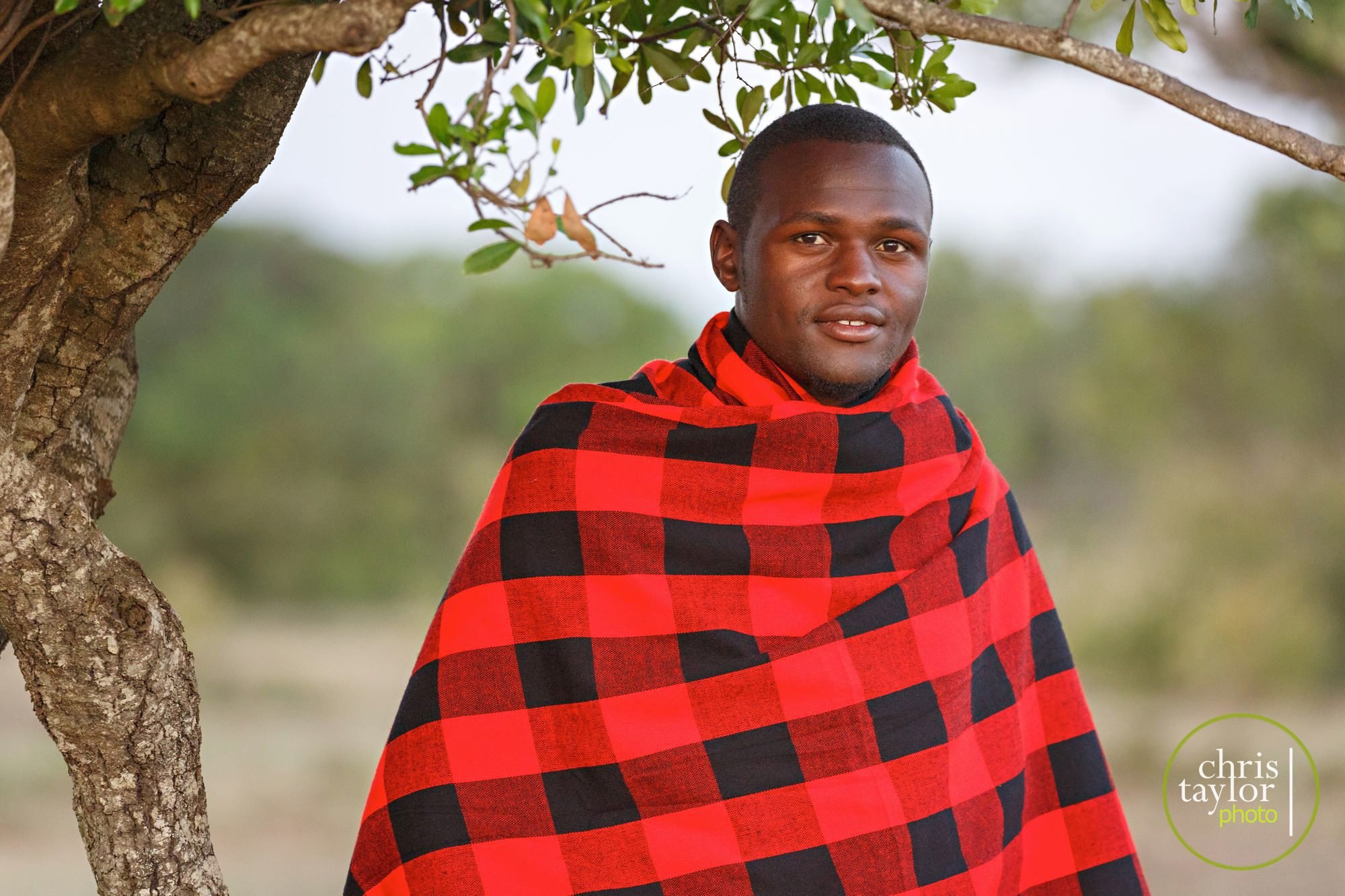 • DAWN PATROLWhenever possible, I would be up well before dawn & out on the conservancy for sunrise to capture some shots and one of many time lapses of the sun going either over or under the horizon. We could then head directly off to do our morning transect. When people wanted to join our morning foray, we would have a little gang along to enjoy the sunrise. This was the last Dawn Gang comprising myself, Knut, Leonard, Rebecca, Rebekah and Carrie, nicely modelling the Maasai traditional shuka blankets which are worn in many different ways as Leonard demonstrated to us one evening.
• DAWN PATROLWhenever possible, I would be up well before dawn & out on the conservancy for sunrise to capture some shots and one of many time lapses of the sun going either over or under the horizon. We could then head directly off to do our morning transect. When people wanted to join our morning foray, we would have a little gang along to enjoy the sunrise. This was the last Dawn Gang comprising myself, Knut, Leonard, Rebecca, Rebekah and Carrie, nicely modelling the Maasai traditional shuka blankets which are worn in many different ways as Leonard demonstrated to us one evening.
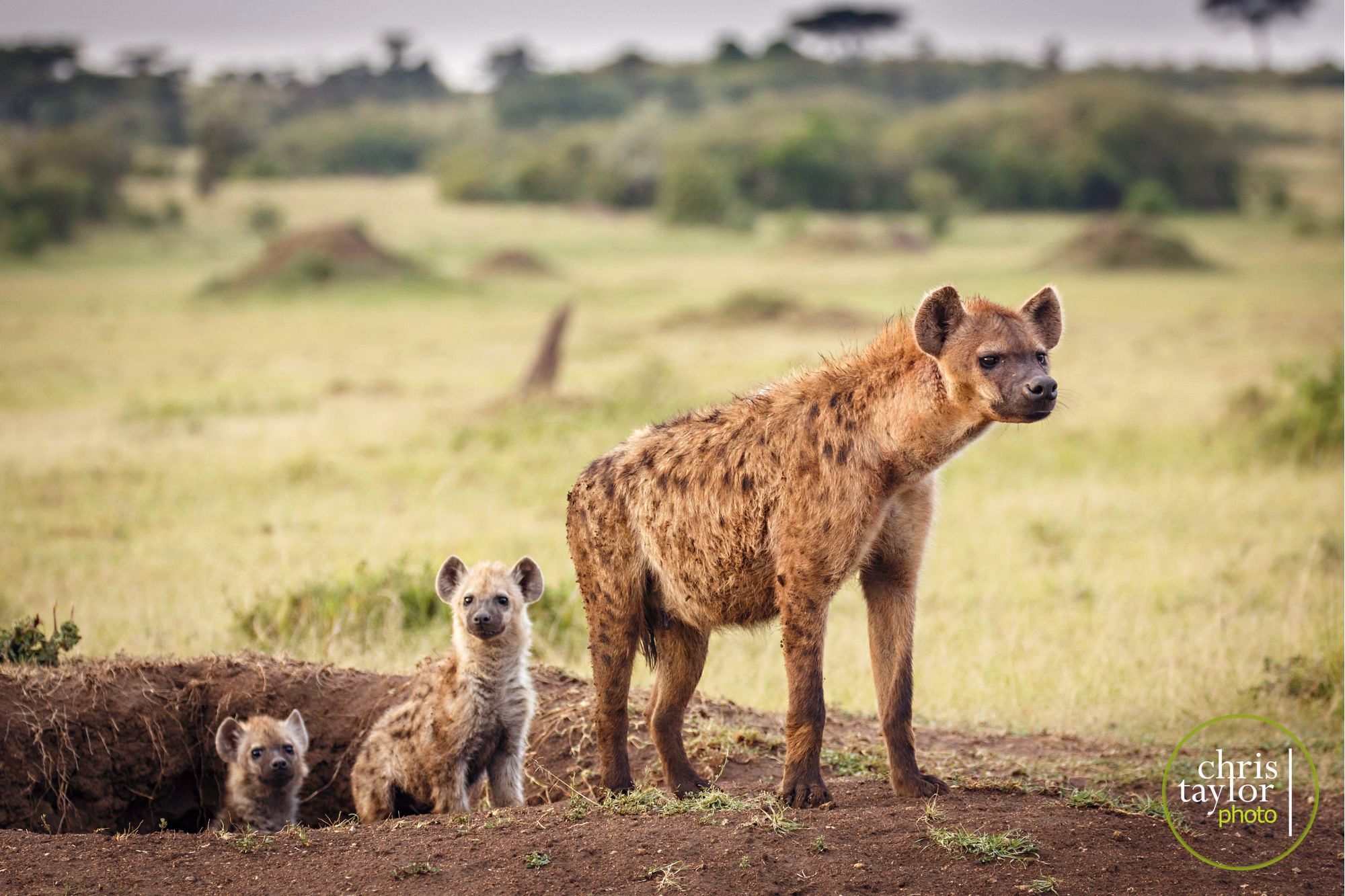 • IN CLOSINGAs this incredible experience drew to a close, Rebekah summarised the results of our efforts and thanked us for our involvement. One of the big benefits of Biosphere Expeditions working with a local scientist is the number of 'person hours' that can be contributed to a study, which otherwise would take months to complete solo or with a smaller team, or not be done at all for lack of resources. Because apart from our workforce, we Citizen Scientists also help finance the project through our expedition contributions, which finance vehicles, equipment, logistics and all the things needed for a successful study. Biosphere Expeditions demonstrates this in the expedition reports it publishes after each expedition, which details the outcomes of the science, as well as what was achieved through all the ‘person hours’ in the end. And the list of conservation achievements all over the world is indeed impressive.Through our many walking and driving transects, scat collection, a 72 hour waterhole observation (we each took on three 4hr chunks), we were able to help Rebekah build a good record of the wildlife present on the conservancy and hopefully contribute to an annual count to monitor the 're-wilding' of this precious area of land.
• IN CLOSINGAs this incredible experience drew to a close, Rebekah summarised the results of our efforts and thanked us for our involvement. One of the big benefits of Biosphere Expeditions working with a local scientist is the number of 'person hours' that can be contributed to a study, which otherwise would take months to complete solo or with a smaller team, or not be done at all for lack of resources. Because apart from our workforce, we Citizen Scientists also help finance the project through our expedition contributions, which finance vehicles, equipment, logistics and all the things needed for a successful study. Biosphere Expeditions demonstrates this in the expedition reports it publishes after each expedition, which details the outcomes of the science, as well as what was achieved through all the ‘person hours’ in the end. And the list of conservation achievements all over the world is indeed impressive.Through our many walking and driving transects, scat collection, a 72 hour waterhole observation (we each took on three 4hr chunks), we were able to help Rebekah build a good record of the wildlife present on the conservancy and hopefully contribute to an annual count to monitor the 're-wilding' of this precious area of land.
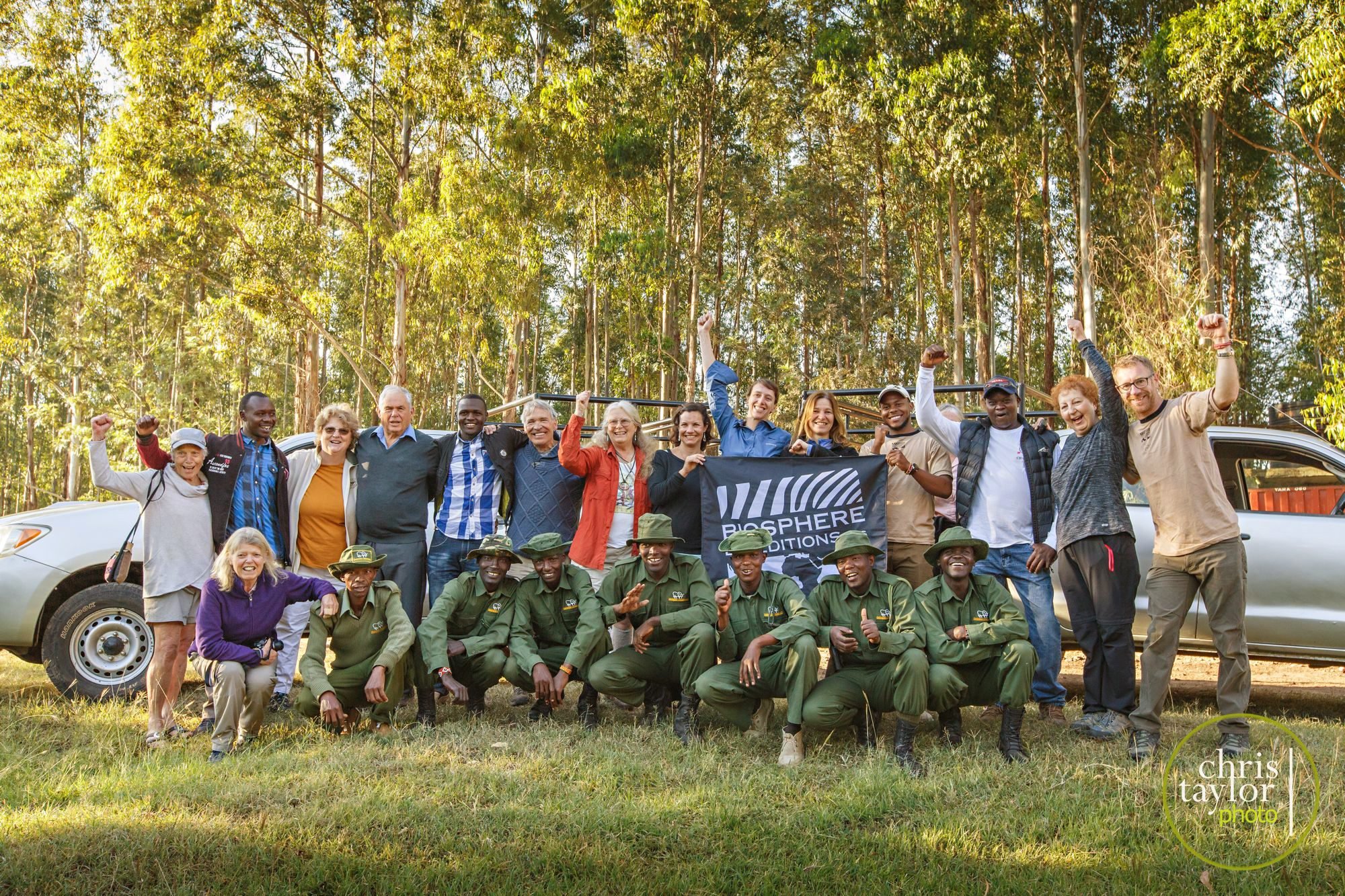 • HOUSE IN THE WILDIf after reading this you fancy visiting Enonkishu (and why wouldn't you?!) then I believe Biosphere Expeditions will be holding a similar expedition there next year (keep an eye on their website for forthcoming adventures) or you could book in for a stay at the stunning House In The Wild - a family-owned boutique lodge in the heart of the Enonkishu Conservancy.Run by the lovely Lippa and Tarquin Wood (the creators of the Enonkishu Conservancy), House In The Wild truly is a special place, right on the edge of the Mara River. I am hoping to head back there sometime soon for a stay and introduce Leanne to the pure beauty of Enonkishu. I really enjoyed the safari tent at the MTC but this takes it to a whole new level!
• HOUSE IN THE WILDIf after reading this you fancy visiting Enonkishu (and why wouldn't you?!) then I believe Biosphere Expeditions will be holding a similar expedition there next year (keep an eye on their website for forthcoming adventures) or you could book in for a stay at the stunning House In The Wild - a family-owned boutique lodge in the heart of the Enonkishu Conservancy.Run by the lovely Lippa and Tarquin Wood (the creators of the Enonkishu Conservancy), House In The Wild truly is a special place, right on the edge of the Mara River. I am hoping to head back there sometime soon for a stay and introduce Leanne to the pure beauty of Enonkishu. I really enjoyed the safari tent at the MTC but this takes it to a whole new level!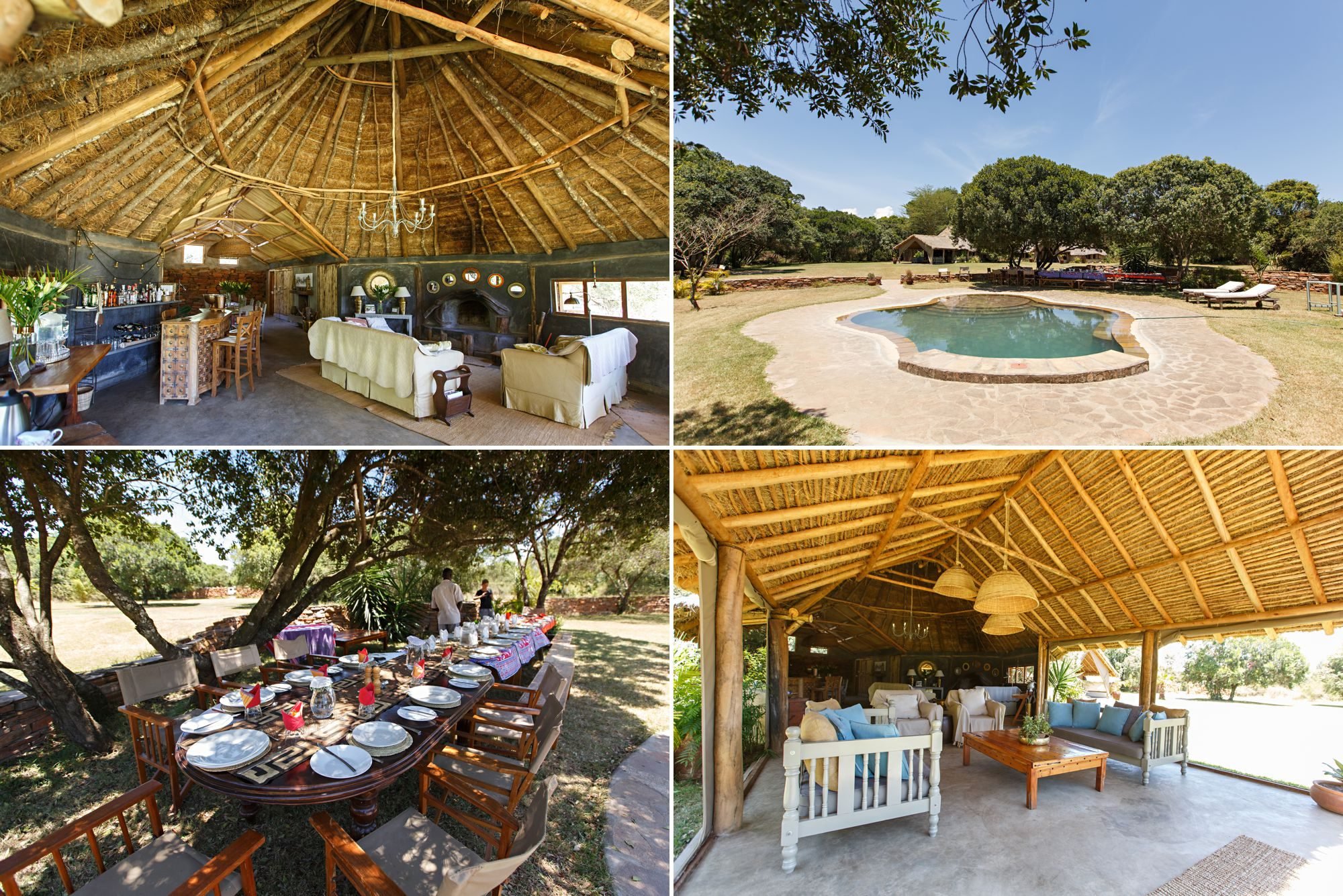 • SUNSETS GALORE!So I had to close with a couple of sunsets really, didn't I? Dawn & dusk are the most magical times of the day in Kenya, the animals make the most of the cooler temperatures and can be seen feeding out on the plains, the golden light makes for gorgeous photos and the colours are out of this world.To say Kenya got under my skin would be an understatement, never have I been somewhere that has affected me so much, inspired me and made me feel so at peace. I can't recommend it enough, if you haven't been, then you MUST, everyone should experience Africa at least once in their life. I feel so honoured to have been able to experience it in such a special place as Enonkishu. I will be back.
• SUNSETS GALORE!So I had to close with a couple of sunsets really, didn't I? Dawn & dusk are the most magical times of the day in Kenya, the animals make the most of the cooler temperatures and can be seen feeding out on the plains, the golden light makes for gorgeous photos and the colours are out of this world.To say Kenya got under my skin would be an understatement, never have I been somewhere that has affected me so much, inspired me and made me feel so at peace. I can't recommend it enough, if you haven't been, then you MUST, everyone should experience Africa at least once in their life. I feel so honoured to have been able to experience it in such a special place as Enonkishu. I will be back.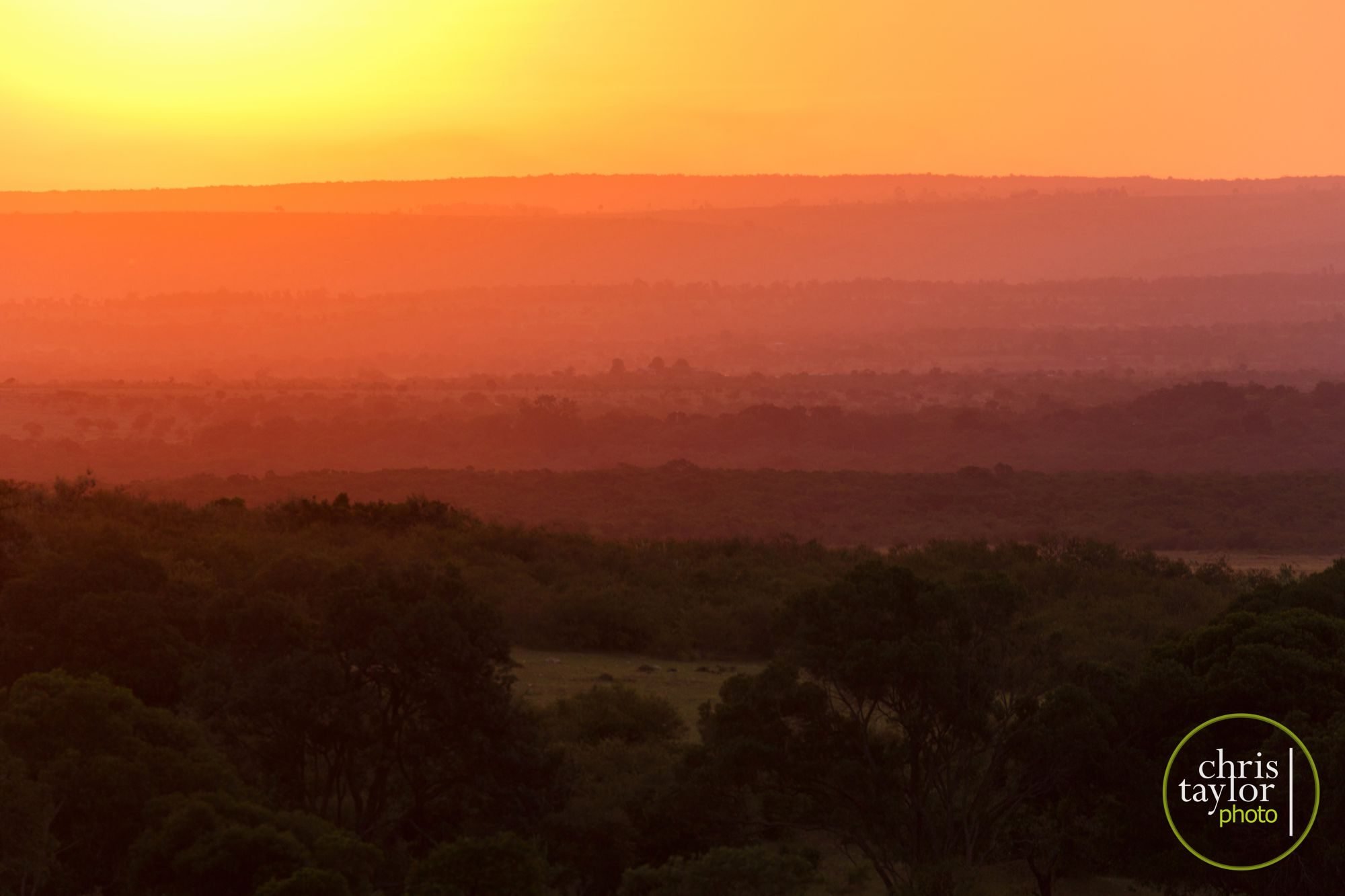
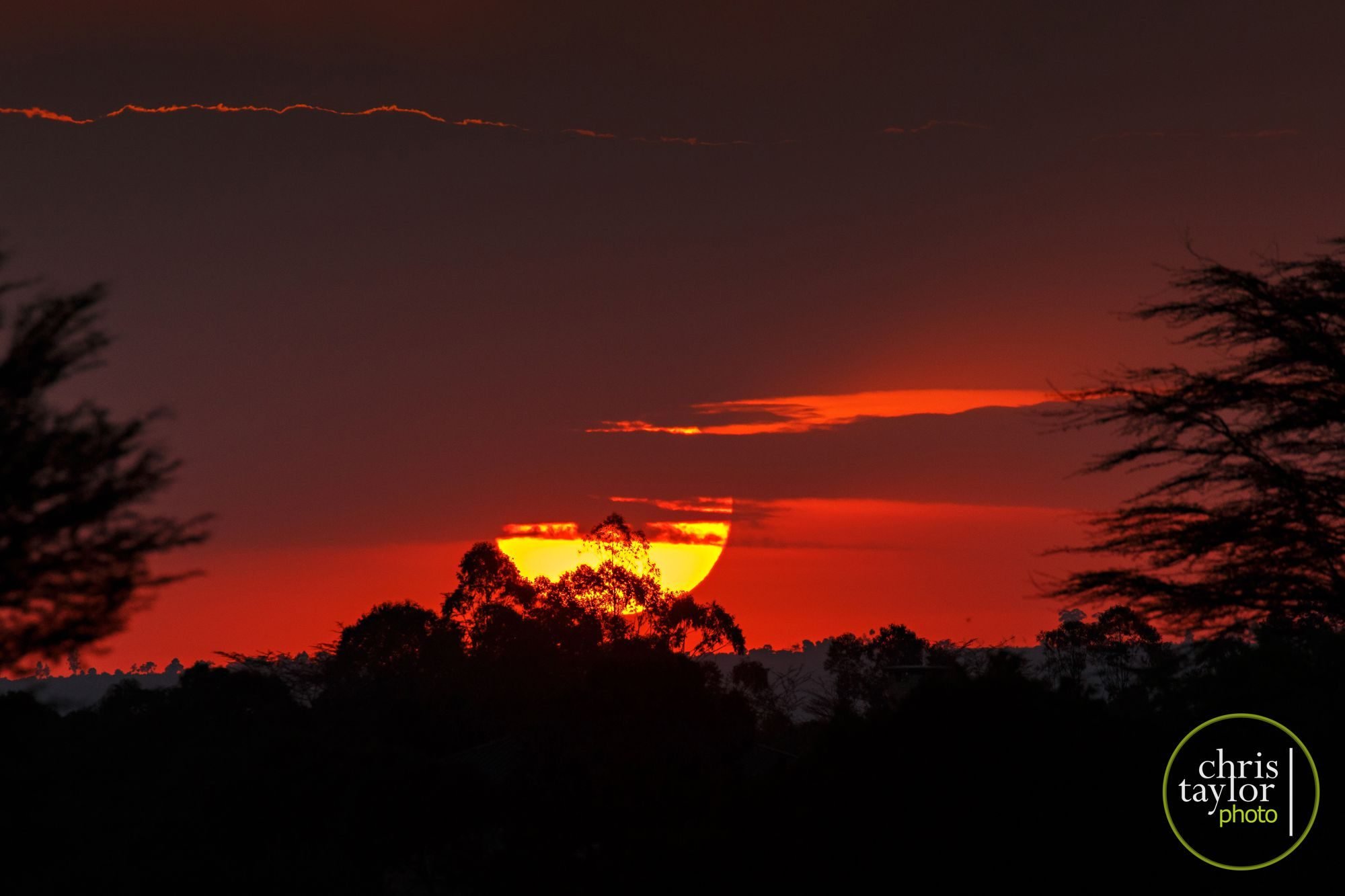 • PARTING SHOT - THE MYSTERY OF THE STARING GIRAFFESThis was the very last photo I took in Kenya, a tower of Giraffes all looking to the west. I noted at the time that it seemed unusual that they had their backs to the wind when, in my experience, animals generally prefer to stand facing into the wind.We were later told that they were probably all keeping an eye on a predator, leopard or lion. We will never know, but that is the beauty of Kenya, there is always some mystery waiting to be discovered, one of the last great adventures on earth and so rewarding.
• PARTING SHOT - THE MYSTERY OF THE STARING GIRAFFESThis was the very last photo I took in Kenya, a tower of Giraffes all looking to the west. I noted at the time that it seemed unusual that they had their backs to the wind when, in my experience, animals generally prefer to stand facing into the wind.We were later told that they were probably all keeping an eye on a predator, leopard or lion. We will never know, but that is the beauty of Kenya, there is always some mystery waiting to be discovered, one of the last great adventures on earth and so rewarding.
“Africa changes you forever, like nowhere on earth. Once you have been there, you will never be the same. But how do you begin to describe its magic to someone who has never felt it?" - Brian Jackman
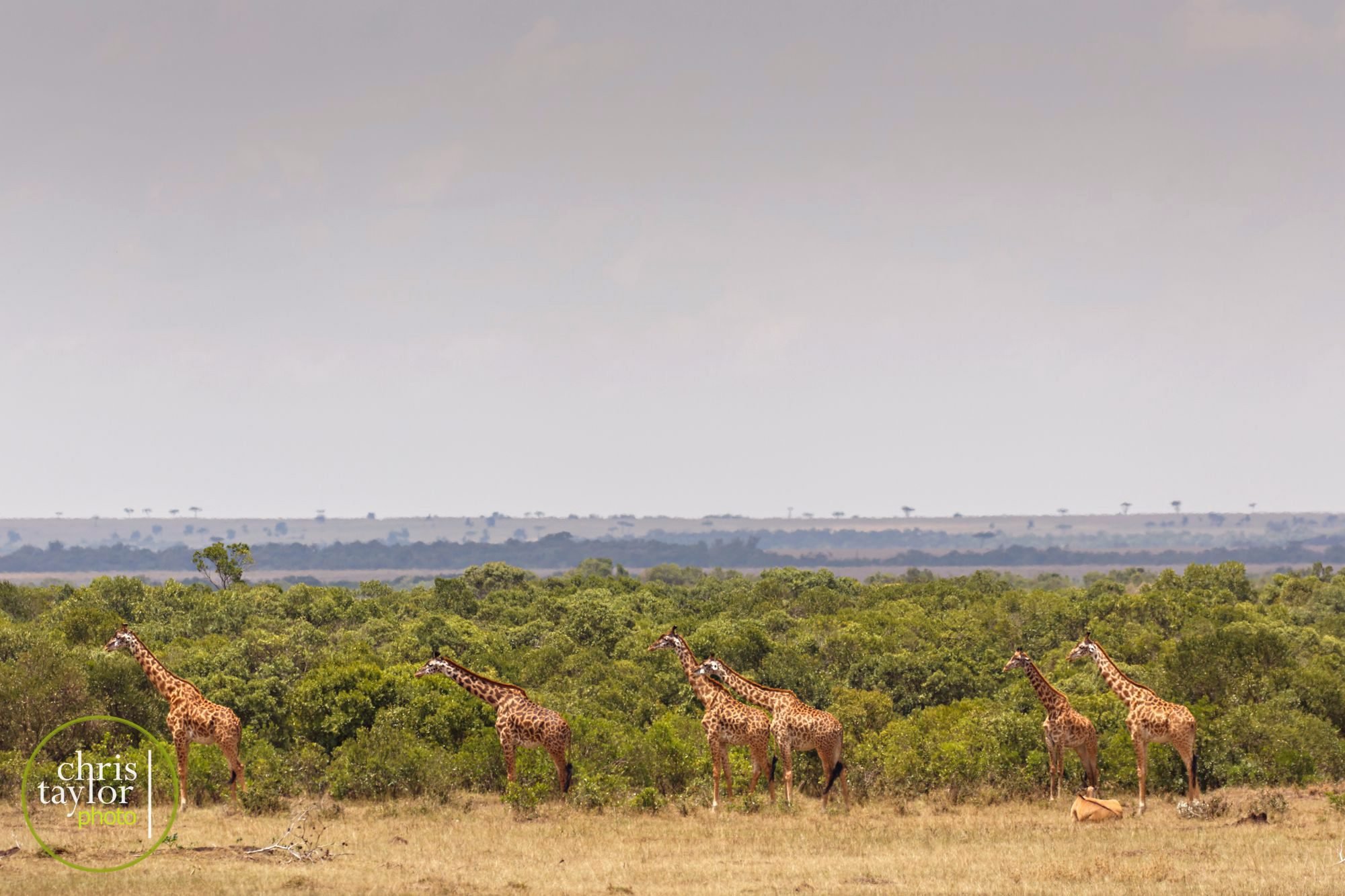 • HOW YOU CAN EXPERIENCE ENONKISHU FOR YOURSELFExpedition OrganisersBiosphere Expeditions - Citizen Science • Ethical Adventures • Wildlife Conservation - offer a wide range of very well organised trips all over the globe. If you want a holiday with added value, pure adventure and to contribute something back to our planet then this non-profit citizen science NGO is for you. Alternatively you could just go somewhere hot, lie around a pool, gorge on all-inclusive junk food for two weeks, and return home fatter, redder and none the wiser!FlightsExpedia was used to book the flights with Emirates - I flew from into Nairobi via Dubai. Emirates were excellent, flying on their Airbus A380 was a great experience, very friendly hosts/hostesses, comfortable seats, a huge range of films on the in-flight entertainment with big screens in the seats. The food was very good and we reached all our destinations in good time for the transfers, highly recommended.“The only man I envy is the man who has not yet been to Africa, for he has so much to look forward to.”—Richard MullinHere's a short travel film I made of the trip to try to encapsulate the amazing work being done at Enonkishu and the contribution Biosphere Expeditions made to the future of the conservancy...Last Line of Defence from Chris Taylor Photo / AeroVisuals on Vimeo. • Travel blogger • Travel photography • Kenya travel photographers • Travel photographer UK •
• HOW YOU CAN EXPERIENCE ENONKISHU FOR YOURSELFExpedition OrganisersBiosphere Expeditions - Citizen Science • Ethical Adventures • Wildlife Conservation - offer a wide range of very well organised trips all over the globe. If you want a holiday with added value, pure adventure and to contribute something back to our planet then this non-profit citizen science NGO is for you. Alternatively you could just go somewhere hot, lie around a pool, gorge on all-inclusive junk food for two weeks, and return home fatter, redder and none the wiser!FlightsExpedia was used to book the flights with Emirates - I flew from into Nairobi via Dubai. Emirates were excellent, flying on their Airbus A380 was a great experience, very friendly hosts/hostesses, comfortable seats, a huge range of films on the in-flight entertainment with big screens in the seats. The food was very good and we reached all our destinations in good time for the transfers, highly recommended.“The only man I envy is the man who has not yet been to Africa, for he has so much to look forward to.”—Richard MullinHere's a short travel film I made of the trip to try to encapsulate the amazing work being done at Enonkishu and the contribution Biosphere Expeditions made to the future of the conservancy...Last Line of Defence from Chris Taylor Photo / AeroVisuals on Vimeo. • Travel blogger • Travel photography • Kenya travel photographers • Travel photographer UK •
